

Canadian Rockies Road Trip Itinerary- 8 Days in Alberta’s Rocky Mountains
Purchases made through links earn us a small commission, at no extra cost to you.
A trip to Alberta wouldn’t be complete without doing a road trip in the Canadian Rockies.
The drive from Calgary to Jasper is one of the finest road trips in Canada, a route that passes by Alberta’s most inspiring scenery as it makes its way through the mountains and into the heart of Banff and Jasper National Parks.

With so much to offer, this Alberta road trip is not one you’ll want to rush. You’ll need at least a week (preferably more), to experience the best of the Canadian Rocky Mountains in Alberta.

8 Days in Alberta- Rocky Mountains Road Trip Itinerary from Calgary to Jasper
Eight days in Alberta’s Rocky Mountains is adequate to see the main sights, but more importantly, it’ll allow you to go beyond sightseeing with enough time to enjoy some outdoor adventures in Alberta.
This Canadian Rockies road trip itinerary includes some fantastic day hikes, scenic walks, a horseback trip, helicopter sightseeing tour, and stops at breathtaking viewpoints.
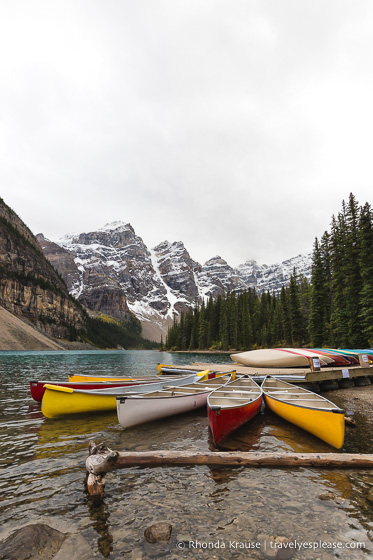
I’ve written this itinerary to start from Calgary, as that’s the most convenient place to fly into, but you can also fly to Edmonton and do the route in reverse.
Here are our favourite places to see in Alberta on an 8 day Canadian Rockies road trip!
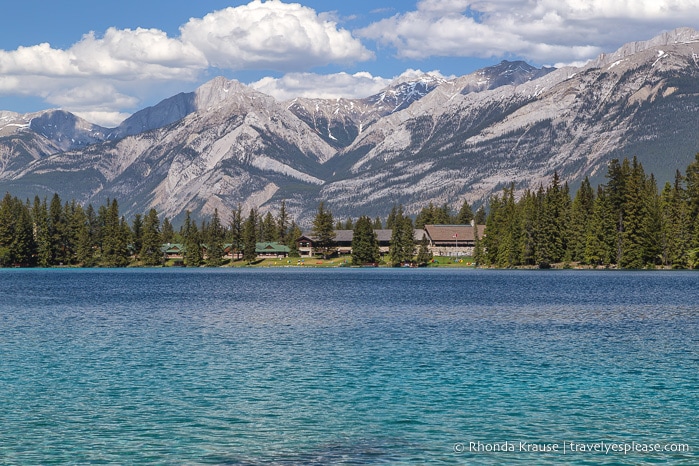
Note: Links to specific destination articles will open in a new window for your convenience.
Canadian Rockies Road Trip Map
Here’s a map of the points of interest you’ll see on this 8 day Canadian Rockies road trip itinerary.
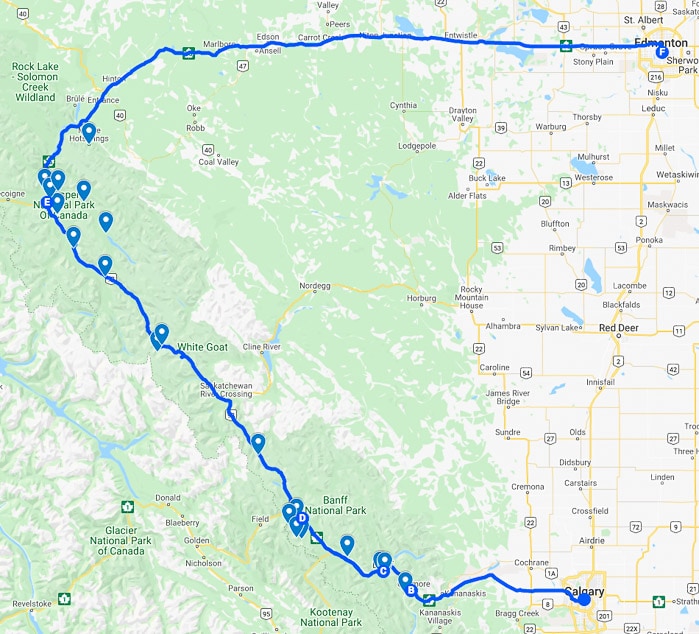
Day 1: Drive Calgary to Banff National Park
Start your Alberta Rocky Mountains road trip by driving west from Calgary on Highway 1 (Trans Canada Highway) towards Banff National Park. Make a stop in the small town of Canmore, shortly before the national park boundary, to experience beautiful scenery without the big crowds.
Approximate drive times: Calgary to Canmore- 1hr 10 mins, Canmore to Banff townsite- 32 mins
For a memorable and thrilling introduction to Alberta’s Rocky Mountains, we recommend doing a helicopter tour in Canmore . Nothing beats a bird’s eye view of the area’s most beautiful landscapes!
Our 30 minute helicopter tour flew us past the Three Sisters Peaks, Mount Assiniboine and Gloria Glacier, the Goat Range, and over Spray Valley. I was a little anxious at first, being this was my first time in a helicopter, but my nerves were quickly settled by the dramatic mountain views, something you definitely can’t experience from the ground!
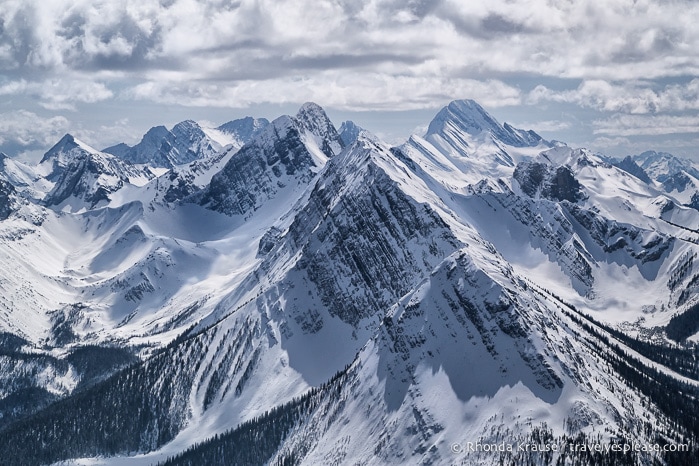
Don’t rush off after your helicopter tour, as there are plenty of scenic walks and short hikes in Canmore . Our favourite is the 3.8 km Grassi Lakes Hike, which leads to two small blue-green lakes surrounded by mountains. If you choose the more challenging of the two possible routes, you’ll be rewarded with great views of Canmore, the reservoir, and a waterfall. Allow for 1.5-2 hours if you take the scenic route.
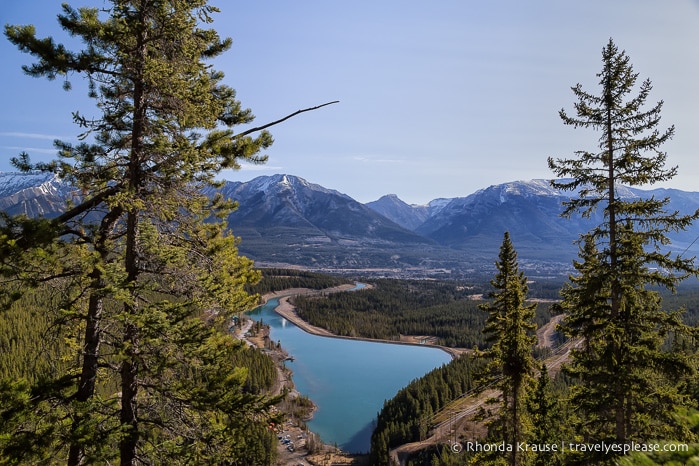
Banff Townsite
The rest of the day can be spent exploring the town of Banff. Admittedly, it’s really busy during the summer season, and too commercialized for my taste, but it’s still a beautiful place to spend the first night of your Alberta road trip.

An interesting place to visit in Banff is Cave and Basin National Historic Site. The discovery of this natural hot spring on Sulphur Mountain, and desire to protect it, led to the creation of Banff National Park. Inside the cave you can admire the sparkling turquoise waters, while outside you can see a steaming thermal water basin.
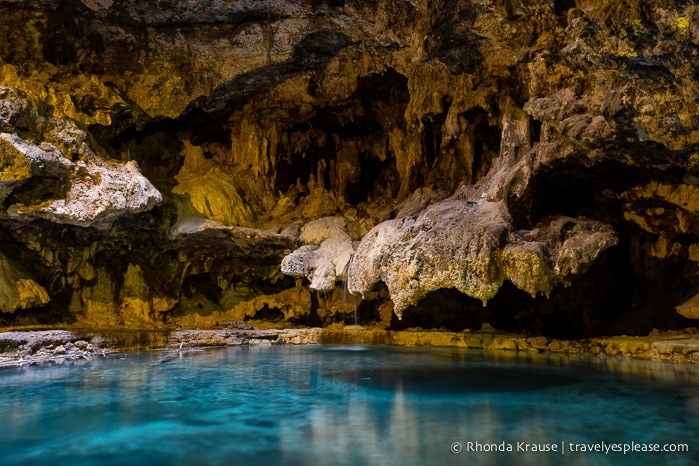
After visiting Cave and Basin, take a peek inside the historic Banff Springs Hotel, a luxurious property built in the late 19 th century by the Canadian Pacific Railway. If you wish, have dinner at the “Castle in the Rockies” before taking a short walk to Bow Falls. End your day with an evening soak at Banff Upper Hot Springs.
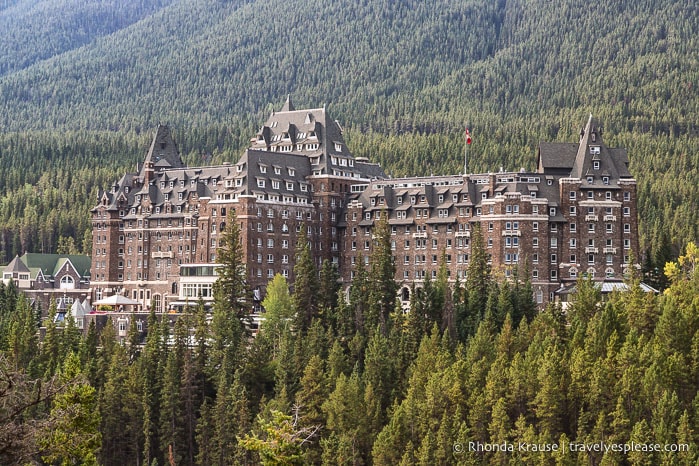
Some other things you could do in the town of Banff are ride the gondola up Sulphur Mountain, go hiking on Tunnel Mountain, stroll along the Bow River, and visit the scenic viewpoint at Surprise Corner.

Check prices, availability, and reviews for the Fairmont Banff Springs.
Day 2: Drive Banff to Lake Louise
Start Day 2 of your Canadian Rockies road trip by driving along the scenic Bow Valley Parkway to Johnston Canyon. Spend a few hours hiking at Johnston Canyon before continuing on the Bow Valley Parkway to the hamlet of Lake Louise, your home for the next three nights.
Approximate drive times: Banff to Johnston Canyon- 27 mins, Johnston Canyon to Lake Louise- 26 mins
Johnston Canyon
The hiking trail at Johnston Canyon is one of the busiest in Banff National Park (so get an early start), but the scenery is lovely enough that the crowds don’t detract too much from the experience.
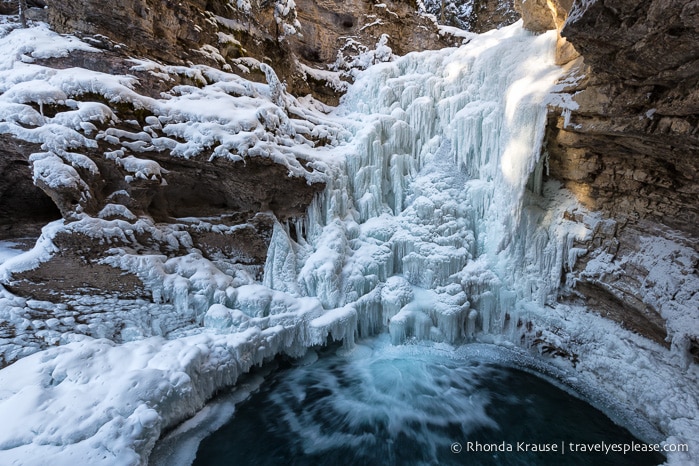
Canyon-clinging catwalks will lead you through the gorge to two waterfalls- the Lower Falls at 1.1 km, then the Upper Falls at 2.7 km. Most people end their hike at the Upper Falls, but we recommend carrying on another 3 kilometers to the Ink Pots . Here you can enjoy seven greenish-blue pools of spring water surrounded by open meadows. It’s a fantastic place for a quiet picnic.
If you want to hike to the Ink Pots and back, plan to spend 4-5 hours. If you only want to visit the Lower and Upper Falls, allow 2- 2.5 hours for the return trip.
- Lake Louise
With postcard-worthy views and plenty of opportunities for outdoor adventure, it’s easy to understand why tourists flock to Lake Louise.
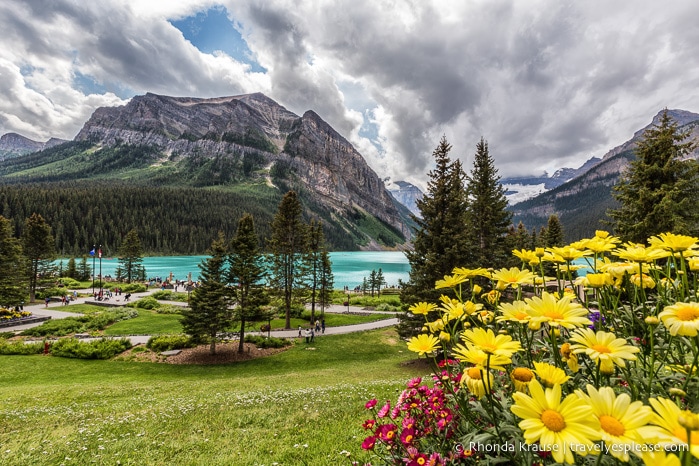
Our favourite way to escape the crowds that hang out along the shoreline is to rent a canoe and paddle across the glacier-fed lake. The turquoise water and backdrop of rocky mountain peaks are relaxing and invigorating at the same time. If you’re up to it, paddle close to Victoria Glacier which hangs at the far end of Lake Louise.
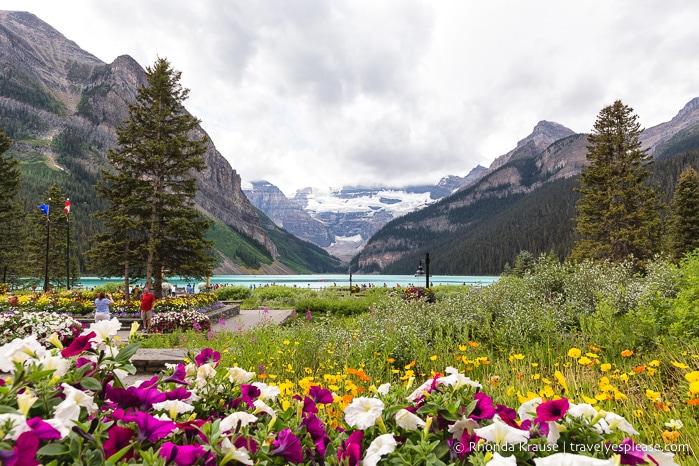
After canoeing on Lake Louise, grab a table at one of the restaurants inside Chateau Lake Louise. Our go-to meal is Swiss Fondue at the Walliser Stube. Mmm… cheesy goodness!
Check prices, availability, and reviews for the Fairmont Chateau Lake Louise .
Day 3: Plain of Six Glaciers (Lake Louise)
No driving today, instead you’ll be transported by horseback to the Plain of Six Glaciers Tea House. If horses aren’t your thing, you can also hike to the tea house.
As an alternative to visiting the Plain of Six Glaciers, you could do the shorter hike to the popular Lake Agnes Tea House.
Horseback Ride to the Plain of Six Glaciers
Travelling by horseback to the Plain of Six Glaciers is a Canadian Signature Experience and a truly unique way to explore Lake Louise.
During the 4 hour trail ride to the Plain of Six Glaciers Tea House , you’ll trot through the forest, along the shore of Lake Louise, across a field of moraine (rock deposits left behind by glaciers), then up towards the base of Victoria Glacier before arriving at the historic tea house at 7,000 ft.
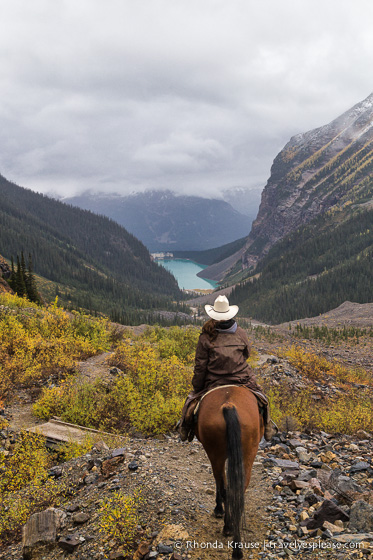
If you’re like me, your legs will be stiff after such a long horseback ride so the rest of the day can be spent relaxing at Lake Louise, or perhaps checking out the view from the top of the Lake Louise Gondola (if you don’t mind the hefty price tag).
An interesting place to have dinner tonight is at The Station Restaurant, located inside Lake Louise Station . Train enthusiasts will appreciate the building’s railway heritage and foodies will enjoy the delicious Canadian cuisine.
Day 4: Moraine Lake & Larch Valley
Early in the morning, drive the short distance from Lake Louise to Moraine Lake, a must-see place on a road trip in Alberta thanks to its classic views. After admiring the famous lake, set out to hike the Larch Valley trail, which starts nearby at the Moraine Lake Lodge. Spend one final night in Lake Louise.
Approximate drive times: Lake Louise to Moraine Lake- 20 mins
Moraine Lake
You’ve probably seen countless pictures of Moraine Lake on Instagram, but long before that, this exquisite landscape lake graced the back of Canada’s $20 bills.
Moraine Lake is a perfect stop during a summer road trip in the Canadian Rocky Mountains because the water is at its bluest in June and July. The view from Rockpile Trail is stunning, with the rugged Valley of the Ten Peaks framing the vivid lake.
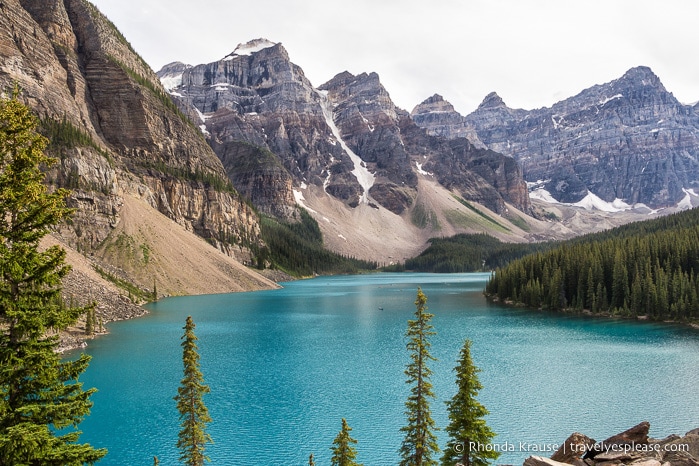
If you get the chance, I also recommend renting a canoe to explore Moraine Lake. It’s such a wonderful experience to paddle at the base of these beautiful mountains!
Moraine Lake is a very popular place to visit in the Alberta Rockies, so try to avoid the rush with an early morning (or evening) visit.
Hiking Larch Valley
Larch Valley is most beautiful in early autumn when the larch tree needles turn golden yellow, but even without the fall colours it’s still an enjoyable hike.
The Larch Valley hike climbs and winds up through the forest before arriving at an open meadow and valley of larch trees. Continue a bit higher to Minnestimma Lakes, or higher yet to Sentinel Pass, and you’ll be rewarded with wonderful views of the Valley of Ten Peaks.
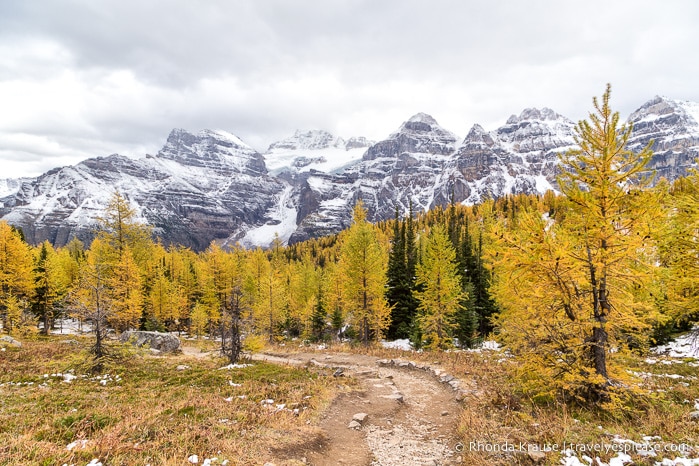
It’s 4.3 km one way to Larch Valley/Minnestimma Lakes and the round trip can take up to 4 hours.
Day 5: Drive the Icefields Parkway to Jasper National Park
It’s time to leave behind Banff National Park and head towards Jasper via the Icefields Parkway (Highway 93), one of Canada’s most scenic drives. Spend the next three nights in Jasper.
Approximate drive times: Lake Louise to Jasper townsite- 3 hrs (without stops)
Icefields Parkway
You can’t do a proper Canadian Rocky Mountains road trip without driving the Icefields Parkway from Lake Louise to Jasper.
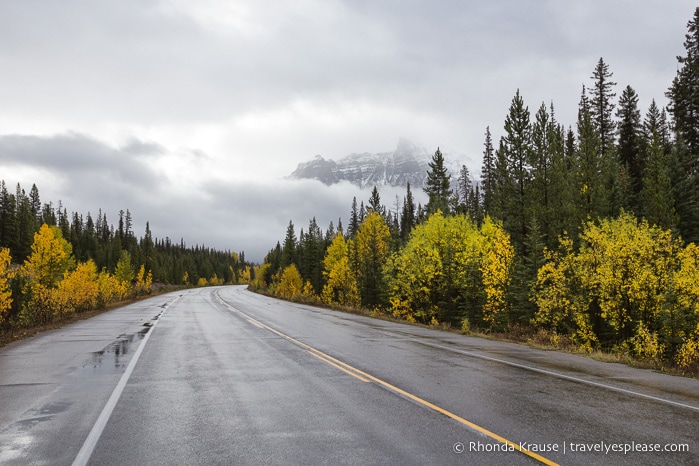
The road linking Alberta’s mountain parks is one of Canada’s best, as far as scenery goes. From brilliant blue lakes, cascading waterfalls, rugged canyons, imposing peaks, and icy glaciers, there’s no shortage of attractive places to pull over and revel in the views.
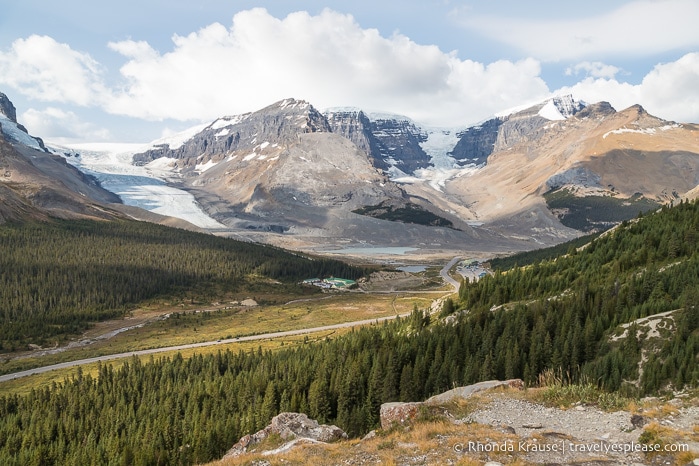
Since it’s a long drive with plenty of gorgeous sights, you’ll have to make some tough decisions about where to stop along the way if you want to make it to Jasper by suppertime. My favourite point of interest along the Icefields Parkway is Peyto Lake (at Bow Summit) , but I also recommend stopping at the Columbia Icefield, Sunwapta Falls, and Athabasca Falls (nearest to Jasper townsite).
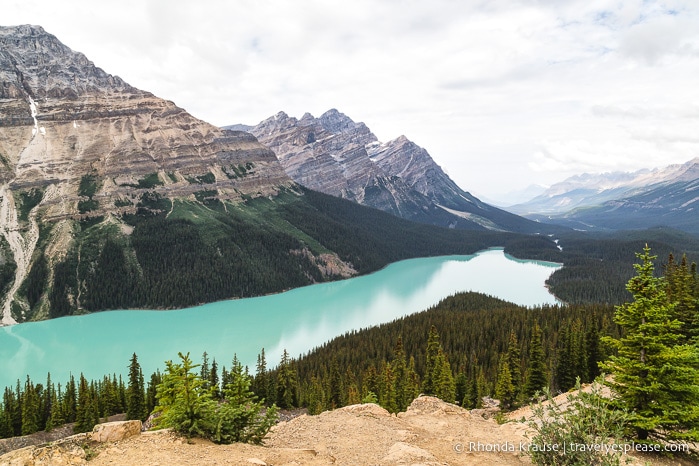
Day 6: Valley of the Five Lakes, Pyramid Lake, & Lac Beauvert
Spend the day visiting some of the lakes in Jasper National Park, beginning with a hike at the Valley of the Five Lakes. From there, make the short drive to Pyramid Island, then end your day at Lac Beauvert and the Jasper Park Lodge.
As an alternative to the Valley of Five Lakes hike, you can visit Mt. Edith Cavell and do the longer Cavell Meadows hike or shorter Path of the Glacier Trail. These connected routes offer beautiful views of a glacial pond.
Valley of the Five Lakes Hike
The Valley of the Five Lakes hike is my favourite hike in Jasper because the trail makes a loop around five blue-green lakes, each with a unique shade.
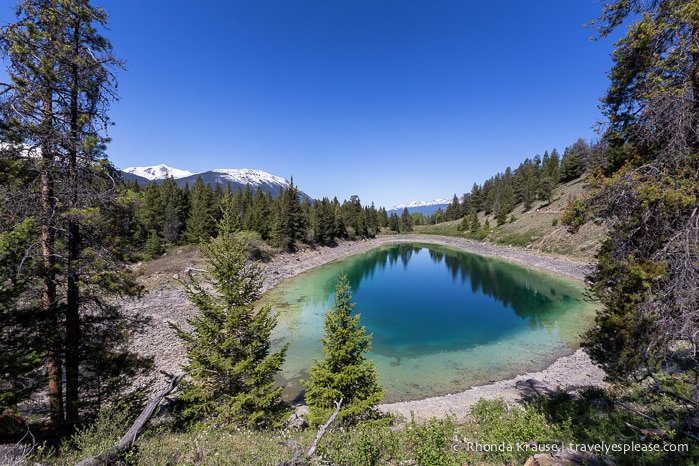
There’s a short loop and long loop, both of moderate difficulty. We chose the short route and it took us just under 2 hours to complete, including plenty of time spent enjoying the scenery!
Pyramid Lake
Pyramid Lake is a great place to go for a short walk that’s not very far from town (8 km). From the tiny Pyramid Island (and shores of Patricia Lake), you get beautiful views of Pyramid Mountain reflecting in the water. It’s a lovely spot that I try to visit every time I make a trip to Jasper National Park.

Beauvert Lake
At Lac Beauvert there’s an easy 4 km walking trail that wraps around the entire lake, offering pleasing views of the surrounding mountains and shore-side Jasper Park Lodge.
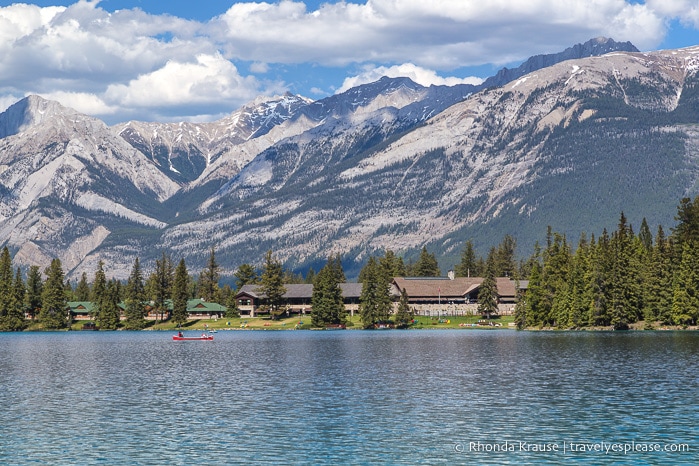
If you’re tempted to get out on the water, you can rent a canoe, kayak, paddle boat, or paddle board from the boathouse. There’s a beautiful golf course here too.
Afterwards, pop inside the Jasper Park Lodge for an appetizer or dinner and continue to enjoy Jasper’s beaut iful scenery from your table.
Check prices, availability, and reviews for the Fairmont Jasper Park Lodge .
Day 7: Maligne Valley/Maligne Lake Road
For your last full day in Jasper, explore the natural sites along Maligne Lake Road, which is also a great place to spot wildlife in Jasper National Park . We’ve seen black bears and cubs, mule deer, moose, even a grizzly all on this road.
Maligne Canyon
Maligne Canyon is the gateway to Maligne Valley and the deepest canyon in the Canadian Rockies, dropping to 50 metres in places.
The six bridges crossing the canyon make it easy to experience various vantage points of this incredible landmark. You can see waterfalls, eroded limestone, and the swirling water of Maligne River. You can easily spend 2-3 hours walking along the rim of the canyon, learning from the interpretive displays along the way.
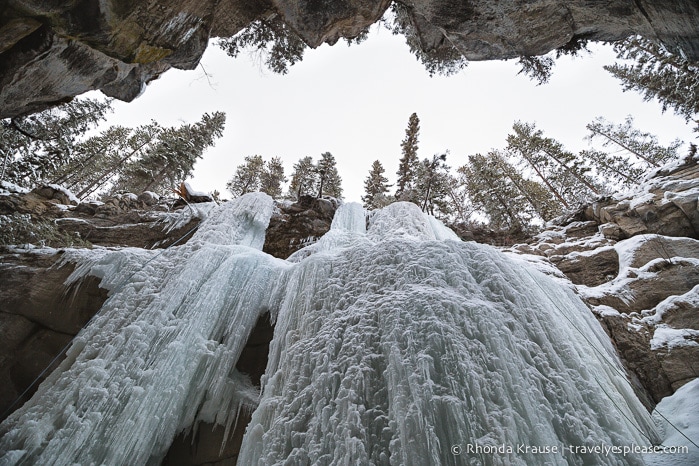
For a completely different experience, make a winter trip to Jasper when you can do the Maligne Canyon Ice Walk and see the gorge draped in ice.
Medicine Lake
Medicine Lake is worth stopping at to capture a few pictures, but what makes it really unique is something you can’t see at all.
Known as the “disappearing lake”, Medicine Lake is an area the Maligne River fills faster than it can drain. The water slowly infiltrates the ground, moving through an underground cavern system before re-emerging at Maligne Canyon.
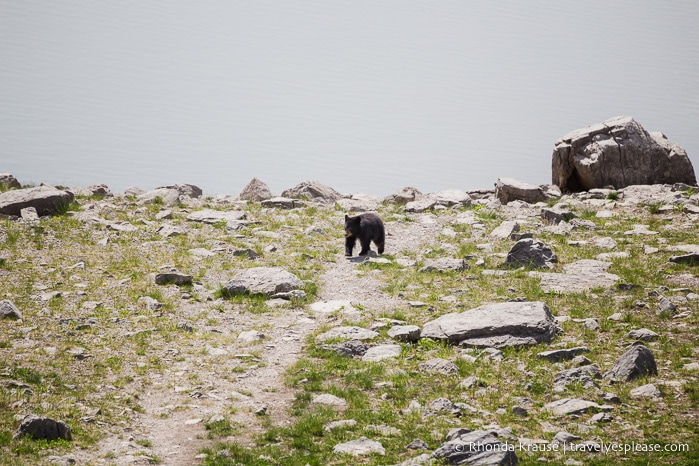
Medicine Lake can be a good place to spot wildlife (we’ve seen a black bear with cubs here) and in the winter it’s a fun place to go snowshoeing in Jasper .
Maligne Lake
At the end of the road is Maligne Lake, the largest lake in Jasper National Park (and second largest glacier-fed lake in the world) at 22.5 km long and 1.5 km wide.
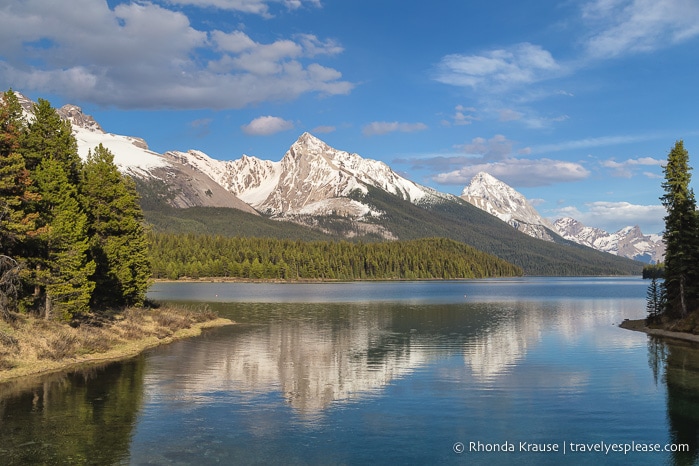
There’s plenty to do here including day hikes, canoeing, and lunching at the historic Maligne Lake Chalet. You can even take a boat tour to the famous, and highly photographed, Spirit Island. The scenery during the Maligne Lake cruise is remarkable, especially once you arrive at Spirit Island, so it’s definitely a must-do on a road trip in Alberta’s Rocky Mountains.
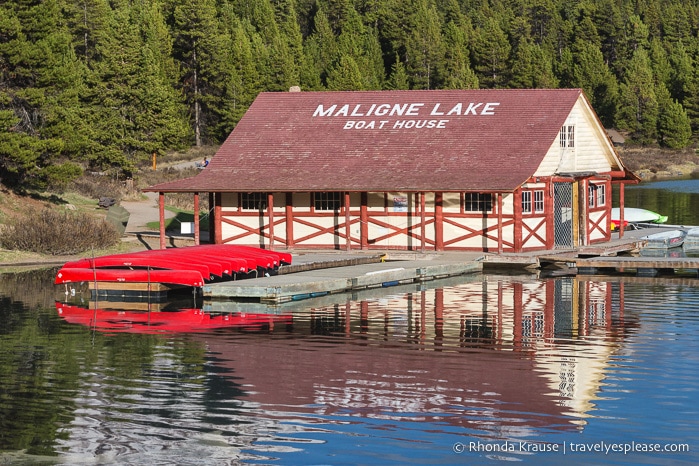
Day 8: Drive to Edmonton or Back to Calgary
Approximate drive times: Jasper to Edmonton- 3 hr 54 min, Jasper to Calgary- 4 hr 57 min
Now that your week-long road trip in the Canadian Rocky Mountains has come to an end, it’s time to return home. You can either drive back to Calgary, making a second trip on the Icefields Parkway and Highway 1, or take Highway 16 and fly out of Edmonton.
If you choose the Edmonton route, it’s nice to make a stop at Miette Hot Springs, the hottest springs in the Canadian Rockies, to soak up a few more moments in Alberta’s mountains. Miette Hot Springs is 61 km east of Jasper townsite, at the end of Miette Road, not far from the entrance to Jasper National Park.
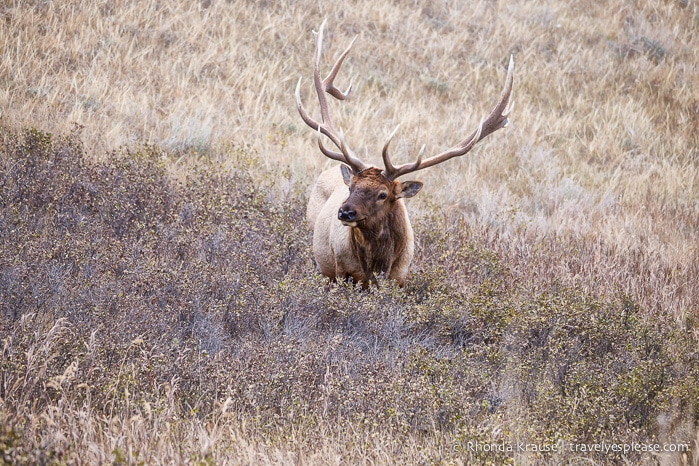
Final Thoughts About Our Canadian Rockies Road Trip in Alberta
I’ve done this road trip in Alberta’s Rocky Mountains many times (I’m lucky enough to live in Alberta), but it never gets old.
There are so many great places to see and things to do in the Canadian Rockies that a road trip through the area can be different every time. Writing this post made me want to get out and drive from Banff to Jasper all over again to discover some new lakes and hikes in Alberta’s Rocky Mountains!
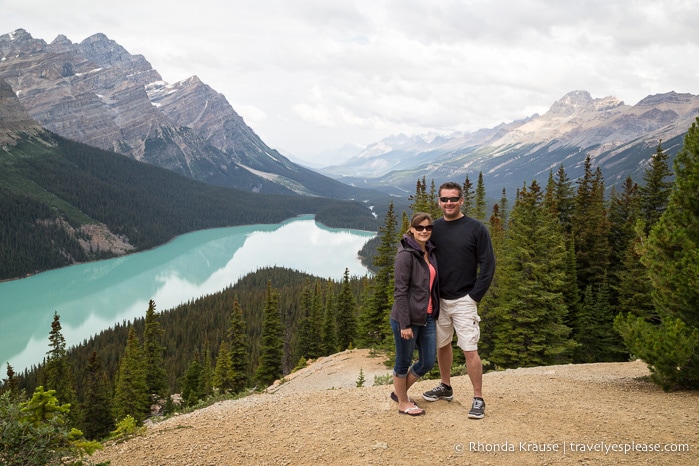
Tips For Doing a Road Trip in Alberta’s Rocky Mountains
Park Pass: You will need to buy a park pass at either the entrance to Banff National Park or Jasper National Park. The cost is determined by how many days you will be in the parks and how many people are in the vehicle. Annual passes are also available.
Icefields Parkway: The Icefields Parkway has very few services, so be sure to pack snacks and a lunch (there are plenty of great picnic spots). Also, make sure to fill up with gas in Lake Louise or Jasper as there’s only one gas station at the Saskatchewan River Crossing Resort and prices are usually higher here.
- There is no cell reception along the Icefields Parkway and service in Banff and Jasper National Parks can be spotty. Don’t expect cell service in the wilderness areas.
- Most viewpoints and pullout areas have outhouses if you need a bathroom break.
Wildlife : Be alert for wildlife on roads and hiking trails. Educate yourself on what to do if you encounter wildlife and always keep a safe distance. Make sure you bring bear spray if you will be doing hikes on your Canadian Rockies road trip.
Winter: If doing this road trip in the winter, be prepared for icy conditions and extreme weather (especially on the Icefields Parkway). Pack extra clothing, food, and check the road reports before heading out. Sometimes parts of the Icefields Parkway get closed if conditions are bad or there’s a high risk of avalanches.
- For ideas of things to do in Alberta in the winter, visit our Romantic Winter Getaways in Alberta post.
Accommodations and Camping: Accommodations and campsites can fill up in the summer season, so make sure to book them well in advance. Pickings are especially slim in Lake Louise.
- To find and book a campsite, visit the Parks Canada Reservation Service. Reservations for the summer season usually open in late January.
Extend Your Trip: If you want to extend your trip to the Canadian Rockies, we suggest adding a few more days in Jasper National Park. Not only is it beautiful with a laid-back vibe, there are so many fun adventures and things to do in Jasper National Park that it’s sure to be a highlight of your Alberta vacation.
Information was correct at the time of publishing, but can change without notice. Please confirm directly with service providers.
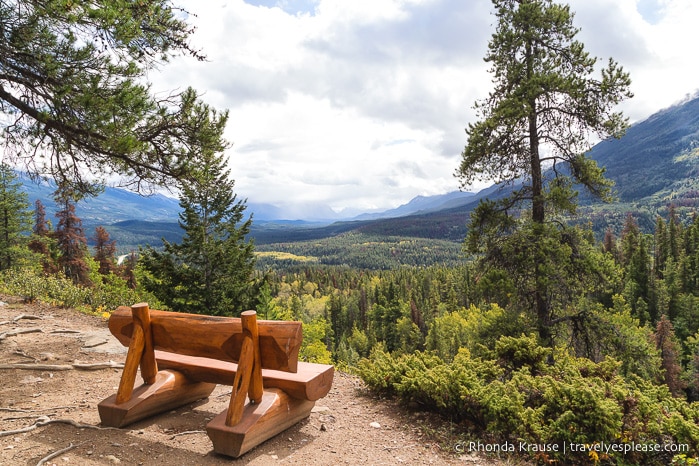
Accommodations in the Canadian Rocky Mountains
For your convenience, here is a list of hotels for the stops on this Alberta road trip itinerary. Please consider booking your accommodations through the included link. It costs nothing extra and helps support this website. Thank you!
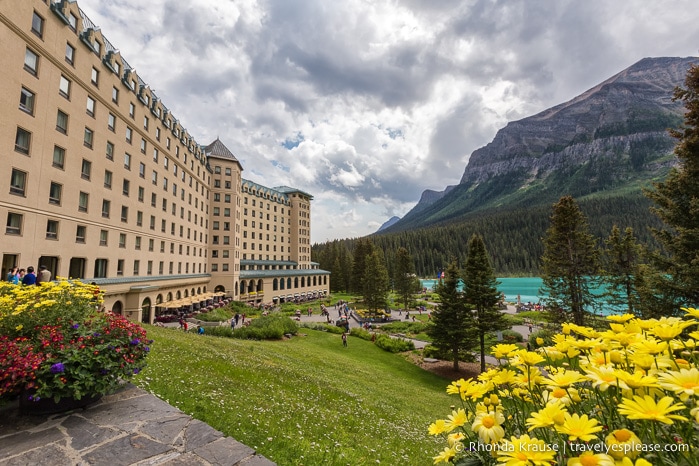
More Canadian Rockies Destinations and Travel Guides
- THINGS TO DO IN WATERTON LAKES NATIONAL PARK- OUR 7 DAY WATERTON ITINERARY
- Stargazing at the Jasper Dark Sky Festival
- 8 Reasons to Visit Jasper in January (and all Winter Long)
- Winter in Jasper National Park- A Frosty Photo Series
- Romantic Trip to Lake Louise- Our Favourite Activities for Romance
Follow Us On Social Media
Facebook | Instagram | X | Pinterest
Join the Facebook Group
- Budget Travel
- Cheap Flights
- Driving Canada
- Paved Roads
- Gravel Roads
- Train Travel
- Hitchhikers Guide
- Tourist Visa
- Working Holiday Visa
- Hospitality Work
- Organic Farms
- Ranch Jobs in Canada
- Canada Topo Maps
- Climate & Weather
- Alaska Highway
- Thompson Okanagan
- Kootenay Rockies
- Cariboo Chilcotin
- Northern BC
- Alberta Rockies
- Southern Alberta
- 19 Best Alberta Towns
- Yukon & Alaska
- Northwest Territories
- Saskatchewan
- Guided Tours in 2024
- Camper Rental
- Accommodation
- Travel Insurance
- Basic Packing List
- Campfire Cooking
- Campfire Recipes
- Multi Day Hikes
- Horseback Adventures
- National Parks Canada
- Small Town Rodeos
- Heliskiing Canada
- Canada Facts
- Wilderness Dangers
- Black Bears
- Grizzly Bears
- Polar Bears
- Canada With Kids
- Canadian Food
- Canadian Currency
- Outdoor Store
- Travel Resources
- Backcountry Newsletter
Alberta Rocky Mountains
With impressive mountain peaks, lush alpine meadows, turquoise lakes, huge forests and an abundance of wildlife, the Alberta Rocky Mountains have it all. Explore Jasper, Banff and Waterton Lakes national parks. Then head out to Kananaskis Country, the less-known wilderness heaven in the Alberta Rockies. Come and feel the mountain magic.

The spectacular Alberta Rocky Mountains are waiting for you.
Banff National Park
Jasper national park, kananaskis country, waterton lakes national park.
Table of Contents

Banff was the first National Park established in Canada in 1885 and is part of UNESCO’s Rocky Mountain World Heritage site, located 129 km from Calgary. Located in the heart of the Canadian Rockies the park includes Banff and Lake Louise, several national historic sites, the largest cave system in Canada, over a thousand glaciers, plus glacier-fed lakes. You also find plenty of hotels, restaurants, and shops, plus a 27-hole golf course.
Banff National Park is open year-round. In winter, three major downhill ski resorts operate within the park; Lake Louise, Sunshine Village, and Mount Norquay. Banff offers amazing wildlife viewing and sightseeing, at any time of year. Summer it’s the time for hiking, paddling, mountain biking, cycling, and climbing. In winter, it’s a paradise for downhill and cross-country skiers with three major downhill ski resorts operating in the park, Lake Louise Ski Area, Sunshine Village, and Mount Norquay.
How to visit
Visiting the park by car, ( car rental ) or guided tour is most common. Plan to spend at least a day in the town of Banff.
The Hop-On Hop-Off shuttle goes between the town of Banff, Johnston Canyon, Lake Louise, Moraine Lake, Samson Mall, and the Lake Louise gondola. It’s an excellent way to visit places without a car. Choose where to visit and when. Get your ticket in advance to make sure you will get a spot.
Town of Banff and around
Banff is a tourist town in the Alberta Rocky Mountains with souvenir shops, nightclubs and fancy restaurants for the ones who like that. The town also has four museums, and there are a few things you shouldn’t miss while you’re there.
- Visit the Whyte Museum of the Canadian Rockies, and pick up a leaflet for a self-guided Banff Culture walk.
- Take the Banff Gondola up to the top of Sulphur Mountain. and from there hike the 5.6 km trail up to Sanson Peak. Get the ticket in advance and you won’t need to wait in line.
- No trip to Banff is complete without a soak in the waters of the Banff Upper Hot Springs.
- Visit Cave and Basin National Historic Site, where the hot springs were discovered first and where the Canadian National Park system was born. Walk the 2.5 km Marsh Loop Trail across the park’s only natural river marsh.
- Drive to beautiful Lake Minnewanka, the park’s largest lake, 13 km east of town. Take a walk around the lake or go on a lake cruise .
Hiking near Banff
Check with the visitor centre before heading out on longer hikes and get brochures and maps.
- Bow River Falls and the hoodoos Trail, starts by the Bow River Bridge and is a 10.2 km return hike.
- Alymer Lookout, at the north shore of Lake Minnewanka, is roughly 10 km one way.
- Stewart Canyon is a 5.6 km return hike, where you get to scramble across rocks and boulders to the Cascade River.
- For multi-day hikes, check out Healy Pass down to Egypt Lake, or the famous Sawback Trail that travels from Banff to Lake Louise, a 74 km trek across three mountain passes.
- If you’re a lonely traveller, there are many great guided hiking tours for you to join and get the best of Alberta Rocky Mountain hiking.
Download AllTrails App for Free and find the best trails.
Horseback Riding
Banff National Park is the place to get into the pioneering spirit on a guided horseback ride into the Alberta Rocky Mountains. You can choose between hourly Horseback rides up to full-day rides, or book a multi-day ranch adventure for a cowboying experience. Check out the offers below as well as Best Horseback Riding in Alberta Rockies.
Budget accommodations in Banff
- HI Banff International Hostel – Located in Banff centre, free WiFi in all rooms.
- Samesun Banff – This hostel is just 5 minute walk from Banff’s shops and bars.
- Choose other accommodations in Banff
Lake Louise and around
Lake Louise, the place with the turquoise-tinted lake, surrounded by majestic mountains like out of a painting. It’s also a place with huge tourist crowds which I try to miss whenever I return to the area after my first trip through the park.
Lake Louise, the best-known place in the Alberta Rockies is world-famous for its teahouses, grizzly bears, grand hotel and skiing as well as for its glaciers, hiking trails and lakes. Still, the surrounding area is spectacular with plenty to see and do.
Things you don’t want to miss while you’re there:
- Drive out to Moraine Lake, the deep-teal-coloured lake set in the valley of Ten Peaks.
- Rent a boat at the Moraine Lake Boathouse and paddle through the glacier-fed waters.
- Take the Lake Louise Sightseeing Gondola to the top of Mt. Whitehorn for amazing views of the lake and Victoria Glacier and go on a guided hike.
- Join a tour: Lake Louise and the Icefields Parkway – Full-Day Tour
Hiking near Lake Louise
Stop in at one of the Alberta Rocky Mountain visitor centres before heading out on longer hikes and pick up brochures and maps.
- Consolation Lakes Trail is a 6 km out-and-back trail.
- The popular Lake Agnes Trail (2.5-3 hr return) takes you past Mirror Lake up to the Lake Agnes Teahouse on top. Continue for another 1.6 km to Little Beehive for stunning views of the lake.
- From Moraine Lake take the Rockpile Trail. The view of the lake from the top of the rock pile is a famous sight in Canada. The 3.2 Consolation Lake Trail starts along the same trailhead.
Budget Accommodations Lake Louise
- HI Lake Louise Alpine Centre Hostel – Great place to stay. within 8 minute drive from Lake Louise.
- Find other accommodation in Lake Louise
Banff Park Information
- Banff Information Centre, Banff Ave
- Lake Louise Visitors Centre, Samson Mall, Lake Louise village
- Campgrounds Banff National Park

Jasper is the largest of the Canadian Rockies national parks and is mostly an untouched alpine wilderness. It is also the world’s second-largest dark sky preserve.
Jasper National Park is a year-round playground. In summer it calls for camping, hiking, paddling and watching for an abundance of wildlife. In winter the park offers frozen splendour in a landscape perfect for cross-country skiing, snowshoeing or skating across an outdoor pond.
Most people enter Jasper Town from the south via the magnificent Icefields Parkway that comes up from Lake Louise. This drive will keep you in awe all the way with sights of breathtaking waterfalls and glacier-sculpted mountains, including Mt Edith Cavell, easily visible from town.
Another option is to take a legendary VIA train from either Edmonton, Alberta or British Columbia through the foothills.
- 90 minutes south of Jasper, explore the Athabasca Glacier, part of the Columbia Icefield.
- Board the Jasper Skytram, 7 km south of Jasper town for breathtaking views. From the top of the tram go on the 1.5 km hike to the summit of Whistlers Peak.
- Maligne Canyon, 10 minutes south of Jasper, is one of the most spectacular gorges. In winter come for the famed canyon ice walk.
- Ski or snowboard the Marmot Basin, Canada’s highest base elevation.
- Soak at Miette Hot springs in the wild Fiddle Valley, about an hour northeast of Jasper in the hottest mineral springs in the Rocky Mountains.
- Take a trip to Spirit Island on Maligne Lake, one of the most photographed spots on the planet.
Jasper town and around
Jasper is a larger, less touristy, more wildlife-rich version of the other Rocky Mountains parks. The rugged backcountry with its river canyons and amazing mountain bike trails attracts outdoor folks and adventure seekers. Jasper has a large trail network with fewer people on it than the parks to the south. Here you have a better chance of seeing wildlife and fewer people.
- Discovery Trail is an 8 km easy hike that encircles the town and shows off the historical railway heritage.
- The 3.2 km Mary Schaeffer Loop by Maligne Lake, or the Old Fort Loop, 3.5 km to the site of an old fur-trading post.
- Mina and Riley Lakes Loop, a 0.9 km walk that leads out directly from town.
- Slightly harder but famous is the 9.1 km Path of the Glacier Trail below the impressive face of Mt. Edith Cavell, which takes you to the foot of the Angel Glacier (my favourite trail in Jasper).
- Skyline Trail is a multiday 44 km trek starting at Maligne Lake.
Jasper is one of the best places in Canada for single-track mountain biking, and definitely the best in the Alberta Rocky Mountains. Many routes are within a short distance of the town. The on-road option includes the long-distance ride along the Icefields Parkway. The Valley of the Five Lakes is a top choice for experienced off-road bikers.
For more information on biking, get a copy of the Mountain Biking Guide, Jasper National Park from the Jasper Information Centre.
Budget Accommodation
- YHA Maligne Canyon – located along the Skyline Trail. A very basic hostel with dorms, outhouse toilets and regular visits to the water pump.
- HI Athabasca Falls Hostel – situated in Jasper, within 33 km of Jasper SkyTram and 34 km of Marmot Basin Ski Area. The hostel has family rooms.
- HI Jasper – a great place to stay with large dorms, a fair distance walk from town with friendly staff and pristine surroundings.
- Other accommodations near Jasper
Jasper Park Information
- Jasper Information Centre 500 Connaught Dr. Jasper, Phone: (780) 820-1006
- Campgrounds Jasper National Park
- Horseback Riding at Boundary Ranch
Most first-time visitors to Alberta race straight to Banff, missing out on Kananaskis Country, an impressive foothill area that spreads along the easter edge of Banff National Park. It is a first-class wilderness area without the glamour of Banff, mostly used by locals.

The scenery resembles that of the national parks with excellent terrain to enjoy all the outdoor activities. As part of the Canadian Rockies, it is a sprawling wilderness playground of wild lands waiting to be explored.
Kananaska Valley is part of Kananaskis Country you want to explore. There are plenty of places to stop in the Kananaskis Valley with a large network of hiking trails.
Part of Alberta Highway 40 from Peter Lougheed Provincial Park to Highwood House Junction is always closed for the winter from December to mid-June. The opening date is June 15. The road can be temporarily closed at any time of year due to wildlife sightings or certain weather conditions. Check with the Kananaskis Country advisory before heading out.
Kananaskis Valley is just an hour west of Calgary and a short distance from Banff. The town of Canmore is the region’s base and has a few attractions that are accessible by foot or by bike. To properly enjoy the provincial park and the area you will need your own vehicle.
Try to spend at least a night in the Kananaskis Valley. Instead of returning to Canmore, you can follow Highway 40 across Highwood Pass all the way to the town of Longview.
Kananaskis Valley
Highway 40, which intersects with the Trans-Canada Highway 30 km east of Canmore, travels south along its length, through the high-mountain Kananaskis country. The road is linking its main provincial parks with trails, campgrounds and scattered service centers along the way. Highway 40 is mostly paved with some gravel sections.
Barrier Lake
At Barrier Lake wander the shoreline and if enthusiastic, head out on the Stoney Trail, located on the north side of the lake. Another option is to hike the Prairie View Trail to Jewell Pass.
Kananaskis Village
My visit to Kanaskis Village was arriving and turning around. It’s the Kananaskis tourist center with lodges, a golf course, a helicopter pad, and hiking trails near the Nakiska Ski area.
Peter Lougheed Provincial Park
This is wilderness at its best, in mids of towering mountains, pristine lakes, beautiful green valleys and glacial streams. Campgrounds offer various amenities from rustic walk-in tent spots to pull-through trailer sites as well as backcountry camping.
The Smith Dorrien Trail, an adventure side trip
This road takes you from Peter Lougheed Provincial Park and Highway #40 in Kananaskis to the town of Canmore. The road is gravel all the way with the usual potholes. Be prepared for the driving conditions, drive slowly, look out for wildlife and enjoy the drive. The Smith Dorrien Trail is the gateway to hundreds of hikes and other adventures in Kananaskis’s backcountry. The driving distance is 60 km.
Sheep River Provincial Park
You access the park through Hwy 546/ Sheep River Road. The drive to the park is scenic with several cattle guards to cross. Watch out for wildlife on the road. The road is only open to vehicles between May 15 to November 30.
Hike to beautiful Sheep River Falls in this protected habitat for bighorn sheep. Camp, fish, and hike to remote Bluerock. In winter, ice skate at Sandy McNabb Campground.
Spray Valley Provincial Park
Spray lake Provincial Park is accessible via the Bighorn Highway 742 and is a destination for many outdoor seekers. In summer, the park offers plenty of hiking, canoeing, kayaking, and fishing opportunities. In winter, this area is a great place to cross-country ski and ice fish. The park is open to campers all year round.
Highwood Pass
Highwood Pass is the highest point of the highway and with an elevation of 2,206 m and it is the highest paved road in Canada. Highway 40 is mostly paved with some gravel sections. This amazing drive through scenic Highwood pass
This part of the road is closed to vehicles from the first of December to mid-June to allow for the migration of wildlife. Highwood Pass is not easily accessible for winter sports. Many cross-country skiers and snowshoers, however, enjoy trekking along the closed highway.
Horseback riding
Boundary Ranch in Kananaskis is a popular place to go for an adventure horseback ride in the Alberta Rocky Mountains. They offer 1-hour, 1-1/2-hour and 2-hour horseback rides, as well as full-day rides during the summer season. Also, check out Best Horseback Adventures in the Alberta Rockies
Kananaskis Park Information
- A Kananaskis Conservation Pass is required to park your Vehicle to travel in Kananaskis and the Bow Valley.
- Travel Alberta Information Centre, 2801 Bow Valley Trail, Canmore
- Kananaskis Information Centre, Highway 40, Kananaskis
- Alberta Parks Kananaskis where you can download maps and get a pass online if you prefer.
Waterton Lakes National park is located in the extreme southwestern corner of Alberta, sharing its borders with British Columbia and Montana in the United States. The park’s isolation far from urban centres and off the beaten track keeps the crowds small.

The deepest lake in the Canadian Rockies and the first oil well in western Canada (1902) are both found in Waterton. All three of the Waterton Lakes are along the entry road. There is easy access to all park highlights.
Despite its moderate size, the park’s trails are among the best and most scenic in the Canadian Rockies. Easily accessible from the town of Waterton, a charming alpine village with a winter population of about 40, the park is perfect for a day hike. Or check out the Tamarack Trail for multi-day backcountry options.
For those not interested in hiking, there are great drives along two wonderful scenic access roads, Akamina Parkway and Red Rock Parkway. Both take you west into the interior of Waterton. Enjoy the viewpoints and make use of picnic spots, campsites and boat rentals.
Waterton is open year-round, but windy weather makes it not a good place to visit in winter. Not many services are available in the park between October and May when some toads are subject to closure and the townsite population drops to less than 40.
Spring arrives in early May. The park is busiest in July and August.
You will need a full day to fully tour the park and therefore get an early start.
Waterton Highlights
- Akamina Parkway – Drive or cycle the 15 km Akamina Parkway south of Waterton and wind through the valley to secluded Cameron Lake. Stop at the first Oil Well in Western Canada National Historic Site.
- Cameron Lake – Rent a canoe, rowboat or paddle boat or take an easy stroll along the lake.
- Prince of Wales Hotel National Historic Site – visit the park’s most recognized landmark,, constructed in 1926-27 and stop for tea.
- Upper Waterton Lake – Cruise the shoreline of the deepest lake in the Canadian Rockies and cross the US/Canada border to Goat Haunt, Montana.
- Waterton-Glacier International Peace Park – Waterton Lakes National Park and Montana’s Glacier National Park, a World Heritage Site.
Waterton and around
The park’s only service center, is Waterton, a beautiful little town where deer graze on the lawns, and you can stroll around cute shops in the tiny centre. Stop in at a cafe or restaurant and also check out Cameron Falls, the town’s own little waterfall.
The lakefront promenade leads to Waterton trails. At its southern end, it becomes the Waterton Lakeshore Trail that leads to the Bertha Lake Trail. At its northern end boats cruise the lake and provide a shuttle to the Crypt Lake Trail.
Waterton’s great hikes
- Waterton Lakeshore Trail – An easy hike from town is the Waterton Lakeshore Trail. It takes you along the western shore of Upper Waterton Lake. Turn around at any time, or take a boat to the end across the US border to Goat Haunt and then walk back. Distance 13 km one way, hiking time is 4 hours.
- Bear’s Hump – The Bear’s Hump starts at the visitor centre and takes you up the slopes to a rocky outcrop with great views of the Waterton Valley, the town and its lakes; 1.2 km, 40 min one way. An easier option is the 2 km Prince of Wales loop, which takes about 45 min.
- Bertha Lake – Half-day or day hike from Waterton to Bertha Lake Trail (12 km return, 4 hours 30 min) a steep hike to a beautiful mountain lake.
- Crypt Lake Trai l – A challenging hike, often mentioned as one of the best hikes in Canada (8.6 km one way, 6-8 hours). It involves a boat trip across Upper Waterton Lake to the trailhead on the east side of the lake.
- The Bison Paddock – Before you enter the park gates, drive 2 km north along Highway 6 to the Bison Paddock, where a few bison are a reminder of a lost past.
Red Rock Parkway
The Red Rock Parkway (open from May to October) leads up Blakiston Creek for about 15 km to the mouth of Red Rock Canyon.
The road ends at Red Rock Canyon from where you can walk the easy Red Rock Canyon Loop (700 m) and Blackiston Falls Trail (1km). Both can be extended into day hikes to Goat Lake, Lost Lake and the spectacular Twin Lakes area. Each lake has its backcountry campground.
Akamina Parkway to Cameron Lake
The 16 km drive starts where Hwy 5 enters the townsite. At 7.8 km you come to First Oil Well in Western Canada National Historic Site where they struck petroleum in 1902.
At Cameron Lake, you can wander along easy trails or rent canoes, rowing boats and paddleboats.
Most hiking trails on the Akamina Parkway are at the road’s end, near Cameron Lake. The Akamina Lake Trail (.5 km) and Cameron Lakeshore Trail (1.6 km) are both easy walks, while Forum and Walls Lakes are both moderately hard half-day hikes.
Row Lakes, Lineham Ridge and Tamarack Trail – Row Lakes Trail, 5.2 km one way, is the first leg of the Tamarack Trail. Another 1.3 km will take you to the Rowe Basin and the start of the trail to Upper Rowe Lakes (1.2 km) beyond. Fit hikers should continue another 3.4 km to Upper Rowe Lake. This is one of the most scenic trails in the Rockies.
If you continue from there you will be on the 36 km Tamarack Trail, which follows spectacular ridges among the Continental Divide before dropping down to the Red Rock Parkway. This is one of the Rocky Mountains greatest high mountain treks, with a maximum elevation of 2560 m. It is generally done in three days.
Pick up maps and directions at the visitor centre and check a hiking app for more details.
Chief Mountain Highway
The third named road in the park is the 32 km Chief Mountain Highway (open from mid-May to Oct). It runs along the park’s eastern border from the park entrance. After 7 km it reaches a great viewpoint over the mountain-backed Waterton Valley and then passes the Canadian border crossing. This is the place to sort visas you might need for hikes across the border. If the Chief Mountain crossing is closed, the nearest border crossing is at Carway, Alberta, a 140 km round-trip from the park gate.
Other Activities
- Cycling – There are a few great mountain trails in the park. A good option for the fit and experienced is to ride on the road up to the Crandell Campground (12 km), climb the rocky trail up to Crandell Lake and then follow the single-track trail back to town. The total route is about 20 km and will probably take around three hours – bear encounters are likely.
- Fishing – There is great fishing on the lakes, but make sure to pick up the compulsory national park permit from the visitor centre.
Waterton Lakes National Park Campgrounds
Free camping in the Canadian Rockies is not allowed. Campgrounds must be booked well in advance with Parks Canada
Belly River Campground – Chief Mountain Highway, 26 km from Waterton. A basic, park-run, overflow campground (bring your own water. Mid-May to mid-Sept.
Candell Campground – 8 km northwest of Waterton on Red Rock Parkway, off Hwy 5. This is the other campground in the main part of the park with first-served sites and limited facilities. Flush toilets, water (no showers), kitchen shelters, and some fire rings. firewood and food storage (Mid-May to early Sept).
Waterton Townsite Campground – Off Vimy Ave, on the southern side of Waterton village, this busy park-run campground is the only one that can be booked in advance. Facilities include hot showers, flush toilets, kitchen shelters, food storage and full RV hook-ups, no open fires allowed (April to mid-Oct).
Overnight Backpacking – Nine backcountry campsites. A wilderness Use Permit is required for backcountry camping.
Waterton Park Information
- Waterton Visitor Centre Visitor Centre – across the road from the Prince of Wales Hotel. It is the central stop for any information you need about the area.
- Entry fees: A National Park pass is required to enter Waterton Lakes.
- Waterton Parks Website
Related Links
This website contains affiliate links. At no cost to you, I earn a commission if you make a purchase. I only recommend products and companies I use and the income helps keep this website up. Thank you!

Road trip in the Rockies: 6 Days in Mountain Paradise
Itching to hit the road? Dreaming of an adventure in the mountains?
This itinerary starts in the Calgary area, but can easily be done in reverse from Edmonton. Here is the best road trip itinerary for your post-quarantine adventure in Alberta’s Rocky Mountains.
Day 1: The Dawn of a New Adventure
Rise early to get the most of this day! Within an hour, the mountains come into view. The sooner the mountain peaks come into view, the better. Don’t drive past the quaint town of Canmore straight on to Banff. It’s got its own adventures waiting for you.
Grab a morning caffeine boost from Eclipse Coffee Roasters on the charming Main Street. Then book a trip to the depths of the spectacular deep cave adventure within Grotto Mountain. See fossils, stalagmites and other geological wonders within the dewy and dark atmosphere with the help of a knowledgeable tour guide showing you the way.
After a day of travel and wasting no time getting into the adventures, check into a hotel in the heart of Banff .
Day 2: World-famous lakes
We recommend you get an early start today to beat the crowds.
Drive the Bow Valley Parkway starting just west of Banff. Keep an eye out for wildlife! Then, stretch your legs and hike the Moraine Lake Shoreline. In under two hours, you’ll be surrounded by the unforgettable view of Ten Peaks and the crystal clear waters that attract photographers from all over the world.
Head back to Banff along the Trans-Canada Highway. For dinner, head to the all-new restaurant Farm & Fire for a casual, local and adventure-inspired dinner.
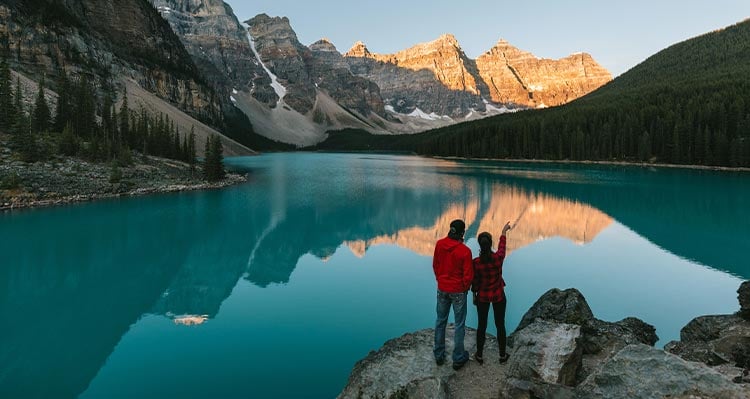
Day 3: Soar to the Top of Sulphur Mountain
Grab coffee to go at the Whitebark Café then reach new heights on the Banff Gondola . The cable cars give you a 360-degree view as you ascend above the treeline to the top of Sulphur Mountain. After you’ve explored the mountain top, including the Sanson’s Peak Meteorological Observatory Historic Site, grab a table for some appetizers and drinks at the Sky Bistro , Banff’s Cochon555 award-winning restaurant (book ahead to ensure availability).
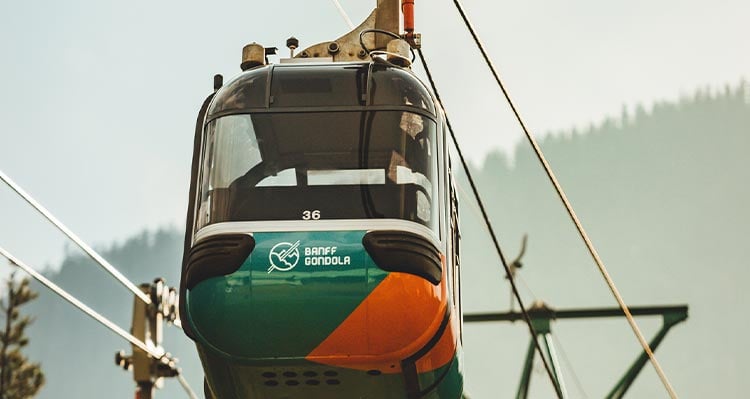
Day 4: The Scenic Stretch – Icefields Parkway
Check out of your room on Banff Avenue, bid farewell to the majestic Cascade Mountain and get back on the road. Turn up your inspiring road trip tunes for this unforgettable voyage down scenic Highway 93, the Icefields Parkway. Let your mind wander as you move through endless mountain ranges, tiny waterfalls and deep glacier-carved valleys. After a few hours, you'll reach the Icefields Discovery Centre. Welcome to Jasper National Park! Here, park your car and head indoors to be welcomed by the friendly team from the Glacier View Lodge . This is a one-of-a-kind lodge with views of the glacier. Your all-inclusive package includes an intimate visit to the Columbia Icefield Skywalk , dinner at Altitude and relaxation and inspiration galore.
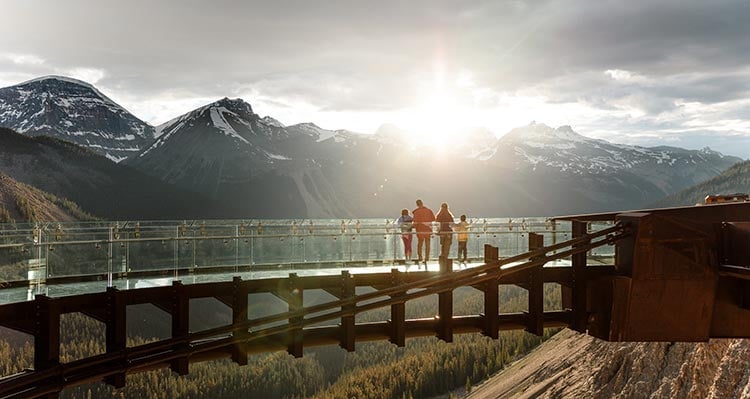
Day 5: Visit the Crown Jewel of Jasper
Start your morning with a delicious breakfast, before it's time to continue your epic journey through Jasper. We recommend staying in a cozy chalet at Pyramid Lake Lodge . You'll have full access to a secluded natural setting right outside your door.
If you’re itching to get off the beaten path and see more of Jasper’s gems, join the Discover Jasper and its Wildlife Tour . This takes you into the Athabasca Valley, Jasper’s wildlife hub, with sightings such as elk, moose, bighorn sheep, mountain goats, and even bears and wolves.
Back at Pyramid Lake, walk the wooden bridge across pristine waters to an island or catch the sunset from the Athabasca Overlook hiking trail nearby. There’s also dinner at Aalto with views of the lake and peaks beyond.
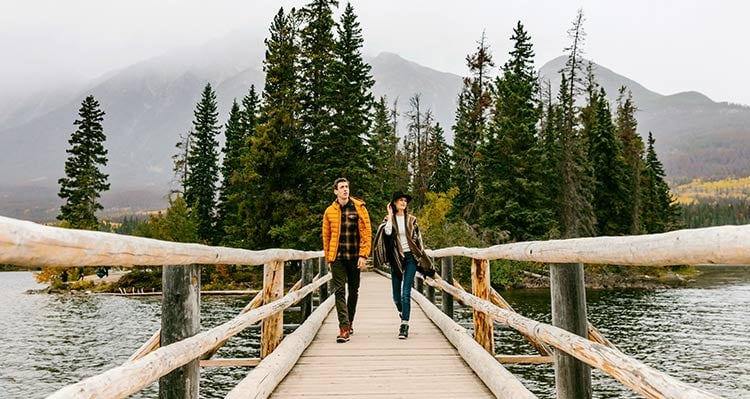
Day 6: This is See You Later – Not Goodbye
It’s time to check out of your hotel, but you’re not done quite yet. Visit the glorious sights of the Maligne Valley! Start with breakfast at Maligne Canyon Wilderness Kitchen . Take a mug of warm coffee as you explore the bridges and trail across the canyon.
Late morning is a great time to cruise to Spirit Island on Maligne Lake . The air is so crisp and clear! Stop for lunch at the Lake House Cafe . Then, it's time to leave the mountains behind and head home.
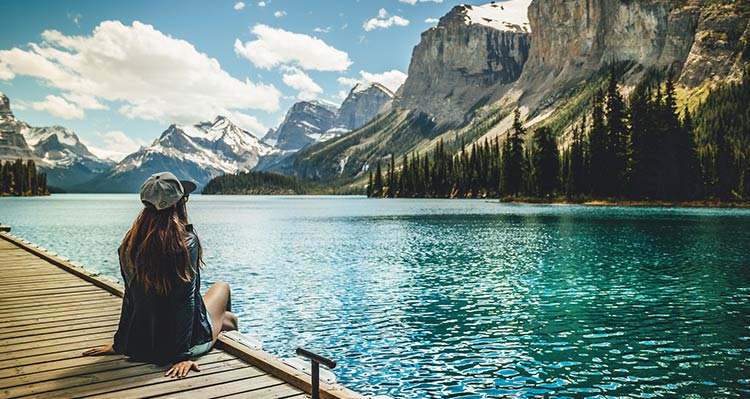
As you drive away, reflect on the time shared together, the feeling of freedom on the road, and the amazing Rocky Mountains that are in our backyard. They’ll be calling for you again soon!
Check out more tips on planning the perfect road trip here .
Book Your Experience
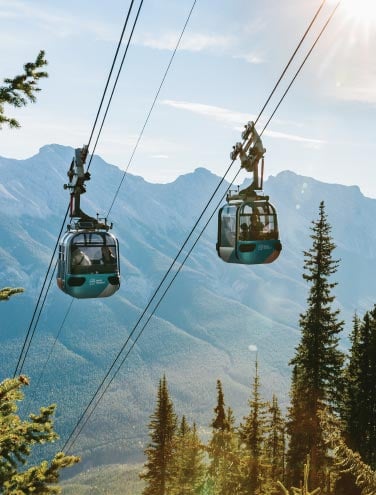
More Stories Like This
Stay connected.
Insider tips, inspiration and deals — delivered straight to your inbox.

1.866.606.6700 | CONTACT US
Stay connected

- Skip to primary navigation
- Skip to main content
- Skip to primary sidebar
BanffandBeyond
The Canadian Rockies Through A Local Perspective
A Trip Planning Guide For The Canadian Rocky Mountains
Do you want to plan a trip to the Canadian Rocky Mountains but have no idea where to start? The hardest decision will be narrowing down what you want to see. It will never seem like you have enough time to take in all the beauty the mountains have to offer. We’ve put together this Canadian Rocky Mountain guide to help you plan the perfect trip.
When Is The Best Time Of Year To Visit The Rocky Mountains?
There’s no correct answer to “When is the best time to visit the Canadian Rocky Mountains?” They are a year round destination with spectacular scenery in every season. So how do you decide when to visit? It depends on what you want to see, the activities you’re interested in and what type of budget you have.
Our post on When is the best time to visit Banff National park and the Rocky Mountains will help you narrow down to a time of year that suits you.
You may want to time your trip so that you can attend a specific event such as the Lake Louise Ice Magic Festival or attending the Calgary Stampede .
Keep in mind that winter is a long season in the mountains, especially in higher elevation areas like Lake Louise. Spring time is still skiing season, the summer months pass by quickly to make way for the fall colours and then mother nature will decide how early the snow returns and winter sets in.
Seeing the coloured glacier lakes is on many peoples wish list. If this is your goal make sure your trip accordingly. See our post on when the Rocky Mountain lakes thaw and get their beautiful turquoise colour .
Seasonal Closures, Construction And Maintenance
Occasionally the parks have to do upgrades or maintenance to a popular tourist attraction or site. This could mean limited or no access for a period of time. Areas affected in Banff National Park will be posted here: Banff Maintenance And Construction .
Roads and areas of the parks are closed at various times for wildlife conservation and avalanche risk. For Banff National Park you can see the list of closures here: Banff Seasonal Closures.
Pros And Cons Of Banff And Jasper National Parks In The Shoulder Season Of April And May
Misconceptions and Mistakes Made When Visiting The Canadian Rocky Mountains
How To Pack For A Canadian Rocky Mountain Trip
Weather across Canada varies dramatically. While it may be spring like in Vancouver on the west coast, the mountains are still buried in snow. If you’re visiting between November and March it’s a must to have proper winter clothing including boots, an insulated winter jacket, gloves and a warm hat. During the rest of the year there can be wide variances in conditions and temperatures. Be prepared with several clothing options.
For more information see what to expect for weather and temperatures in the Canadian Rocky Mountains.
What needs to be in your suitcase depends on the time of year, the length of your stay and the activities you plan to participate in.
For information on what to put in your suitcase see our post on How to pack for a visit to the Canadian Rocky Mountains.
What Is An Ideal Length Of Time To Spend In The Rocky Mountains
We recommend a minimum of a week to get a taste of what the mountains have to offer, especially if you are trying to fit in several places such as Banff and Jasper National Parks. Visitors often underestimate how vast these areas are and the driving times involved in getting around. A visit limited to just Banff may be suitable to three or four days. If you plan on doing a lot of sightseeing and adding in activities such as hiking you’ll likely want more time.
Ten days to two weeks is ideal to take in Banff and Jasper National Parks at a leisurely pace. This amount of time might allow you to explore attractions in neighbouring areas Kootenay National Park, Yoho National Park and Kananaskis Country.
When flying make sure you account for the time needed for getting to and from the airport. If your budget and time allows there are more places worth visiting like Drumheller and the Badlands or the small but charming Waterton Lakes National Park . There are several other alternative parks and overlooked areas in the Rocky Mountains that are worth your time.
Driving a circle route that includes the west coast of B.C. warrants at least ten days to two weeks. It’s nearly 850 km’s between Vancouver and Banff and a minimum of 9 hours of driving time each way. It’s best to break up the drive with at least one overnight stay. In addition to exploring Vancouver you may want to add a few extra days to see some of the beauty of Vancouver Island.
For trip options see our post on driving routes between Vancouver to Banff and Jasper .
Getting To The Canadian Rocky Mountains
The flight options available to international visitors may have you accessing the Rocky Mountains through one of several airports. Calgary, Alberta is the closest international airport, followed by Edmonton, Alberta and then Vancouver, British Columbia on the west coast of Canada.
For those coming from other destinations within Canada or North America there are domestic flights as well as train travel, buses, guided coach tours and self driving.
More details are covered in our post on Options For Getting To The Canadian Rocky Mountains.
Navigating The Rocky Mountains Once You Arrive
Self driving in the mountains is the most popular option because it provides the greatest flexibility. The roads are easy to navigate and many people feel comfortable driving in the area. The exception would be the winter season. Driving at this time is not for everyone and shouldn’t be attempted by those without winter driving experience.
If you’re flying into one of the international airports you can conveniently arrange to pick up your rental vehicle there. Banff, Canmore and Jasper also have vehicle rental options. Make sure you understand all the details of your contract including the insurance coverage, whether it has unlimited kilometers and the return policy. There may be restrictions that can void your insurance including driving on unpaved roads or taking the vehicle into the U.S.A. Many companies prohibit using chains for winter driving as they can cause damage to the vehicle.
If you’re thinking of driving one way between the west coast of British Columbia and the Rocky Mountains or vice versa it can be an expensive option. The one way drop of fee between the two destinations can be as high as a thousand dollars. Do your research to see which companies offer the cheapest rate.
If you do not want to self drive you can consider booking a tour as part of a package with your flight or book tours to attractions with local companies. It is possible to get around some areas of the mountains with public transportation and shuttles.
For more information see our post: How to get around the Rocky Mountains without a vehicle .
Canada Driving Road Laws And Safety
Driving and safety tips can be found at the following sites: For the province of B.C. at ICBC Road Safety and for Alberta at Alberta driver and traffic safety . Other provinces may have varying regulations.
Where To Base Yourself In The Rocky Mountains
Whether you base yourself in one spot in the Rocky Mountains or change accommodations depends on what parks you want to see and how much driving you are willing to do. In Banff National Park you can choose between staying in Lake Louise versus the Banff Townsite . There’s usually no need to stay in both places, it’s a 40 minute drive between the two. Day trips to explore the park as well as heading west into Yoho National Park and the southern end of the Icefields Parkway can be done from either location.
There’s an option of using the town of Canmore as a base. It is not in the national parks, but sits just a 15 minute drive east of the Banff town site. One town might appeal to you more than the other depending on your tastes. We’ve covered the differences here in our post on Canmore versus Banff .
If you plan on spending time in Banff and Jasper it’s best to book accommodation in both places. The driving time from the town of Banff to Jasper is approximately 3 to 3.5 hours in each direction. It would be a lot of driving to do as a return day trip between the two and it wouldn’t leave you enough time to see all the incredible attractions along the Icefields Parkway. For more information see our post on Tips For Driving The Icefields Parkway and for comparisons between these two parks check out Jasper National Park versus Banff National Park .
Accommodation And Budgeting Options
The amount of accommodation choices in the Banff and Canmore area can be overwhelming. Jasper is a bit more limited and in Lake Louise the options are very sparse in comparison. There’s times of the year where winging it is simply not an option. During the peak summer demand the lodging in all of these areas may need to be reserved up to six months in advance. If you leave your booking too late it may be difficult to find a room or you can be stuck paying exorbitant prices.
There’s a wide range of accommodation types from high end luxury resort style properties and lodges to mid-range hotels, condo suites, bed and breakfasts and hostels.
No matter how you look at it the Canadian Rocky Mountains are not a cheap place to visit. Restaurants, tourist attractions, car rentals are expensive and you’ll likely find the cost of camping and staying in a hostel more expensive than many other places you have visited.
For more information on seasonal accommodation prices and other costs in the Canadian Rockies see our post on How To Visit Banff On A Budget.
Camping is available for tents and RV’s. If you plan to camp be aware that not all campgrounds are able to be reserved. Some sites operate on a first come first served basis. See Parks Canada Camping Reservations for more information. The main season for camping is from late May to early October, outside of that time frame there are very few camping options.
Canadian And Rocky Mountain Cuisine You May Want To Try During Your Visit
Canada is a multi-cultural country and therefore has a variety of different foods to try as well as some cuisine unique to the country. Many of the same foods can be found in the Rockies along with some dishes specific to the mountains.
See our post on Foods And Drinks To Try During Your Canadian Rocky Mountain Visit .
Required Passes For Visiting Canada’s National Parks
Park passes are required for entry into any national park in Canada. You can buy a day pass at a park gate or at visitor centers within the parks. If you intend to visit several of Canada’s national parks or spend more than a few days in them consider an annual Parks Canada Discovery Pass. With it, you can visit more than 100 national parks, marine conservation areas and historic sites across Canada. Passes are not required for entering our provincial parks or recreation areas.
More information can be found here: Understanding the Parks Canada Entry Fees
What’s The Best Way To Pay For Things On Your Canadian Rocky Mountain Vacation.
If you’re visiting from another country it can be a daunting task to try and figure out the best way to pay for things on your trip. No matter what the method you choose you will incur expenses in the form of currency exchange and transaction fees. It’s just an inevitable part of the cost of traveling.
What many people end up doing is using their credit card for their accommodation, vehicle rental and other major costs and accessing local currency to pay for the lesser daily expenses.
For more information on forms of payment see our post: Tips for currency exchange and using international credit cards in the Canadian Rockies.
Taxes That Tourists Pay In The Rocky Mountains
Whether you are a tourist or a citizen of Canada there are taxes that you will pay on goods you purchase, services used and on our accommodation and other vacation expenses. For detailed tax information see our post taxes you can expect T axes That Tourists Can Expect To Pay In The Canadian Rocky Mountains .
Tipping Etiquette
Throughout the Rocky Mountains and the rest of Canada tipping is practiced. If you’re an international traveling visiting Canada it be confusing knowing who and how much to tip. Our post Canadian Rockies Tipping Etiquette outlines a basic guideline that you can follow.
Required Travel Documents To Visit Canada
Find out what you need to enter Canada long before you book your trip. Most travelers will need a valid entry document such as an Electronic Travel Authorization ( eTA ) or a visa. It will depend on your citizenship. U.S. citizens are an exception. They still need to present acceptable travel documents and identification at the border. A passport is still highly recommended for U.S. citizens traveling into Canada. It may be required by your airline or other transportation authority.
Check the Canada Customs site to find out what items are not allowed to be brought into the country and anything that may have your entry denied. Everything you need to know about the required documentation and entry into Canada can be found here: Government Of Canada/Visit Canada
Medical Insurance And Travel Insurance
Travel with adequate insurance to cover the cost of medical emergencies while you are in Canada. If you do not have insurance the cost of emergency medical treatment could be overwhelming. Trip cancellation insurance can give you some peace of mind knowing you are covered if you have a necessary reason to cancel your trip.
Canada Time Zones
Canada is a large country spread across 6 different time zones from east to west. If your visit is focused on Jasper, Banff, Yoho and Kootenay National Parks you will only have the Mountain Time zone to be concerned with. The entire province of Alberta is on Mountain time and it extends into a small portion of the neighbouring province of B.C.
Most of Canada practices Daylight Savings Time. From late Autumn through to early Spring is Mountain Standard Time (MST), it is UTC-7. From early Spring to late Autumn is Mountain Daylight Time (MDT), it is UTC-6.
West of the Canadian Rocky Mountain Parks it is the Pacific Time zone. It is one hour behind Mountain time. Keep this in mind when traveling. You’ll either lose or gain an hour depending on the direction of travel between the two time zones.
If you’re driving there are signs marking the time change. On the Trans Canada Highway the change occurs at the eastern slope of Rogers Pass. On the Yellowhead Highway the time change is the western boundary of Jasper National Park at the continental divide, signs mark the time zone change in both directions.
A map of Canada time zones with a live clock can be viewed here: Canada Time Zone Map
Legal Drinking Age And Smoking Laws
The legal drinking age is not the same across Canada, it is set by each province. In Alberta it’s 18, but take note if you cross over into nearby B.C. it’s 19. This is for both consuming alcohol and purchasing alcohol. Take note that smoking laws are becoming very restrictive with practically little to no smoking in any indoor spaces and tight restrictions for smoking outdoors in public spaces including cannabis use. More information is available here: Tobacco and cannabis use in Banff.
Cellphone And Wifi In Canada And The Rocky Mountains
Don’t expect that you will be able to get cell phone reception throughout the Canadian Rocky Mountain Parks. It’s not something that can be relied upon outside of the town site areas. For more information on cell phone and WiFi service in the mountains see our post: Cell Phones And WiFi In The Canadian Rockies .
Electrical Plug And Voltage Information For Canada
Depending on the country your electronics are from you may need a socket converter for the plugin and possibly a voltage converter to operate the device in Canada. Many modern digital devices such as laptops and cellphones are now made for world wide voltages, but always check otherwise you could damage the item. For more information on what you may need to operate your electronics see Power And Plugins In Canada .
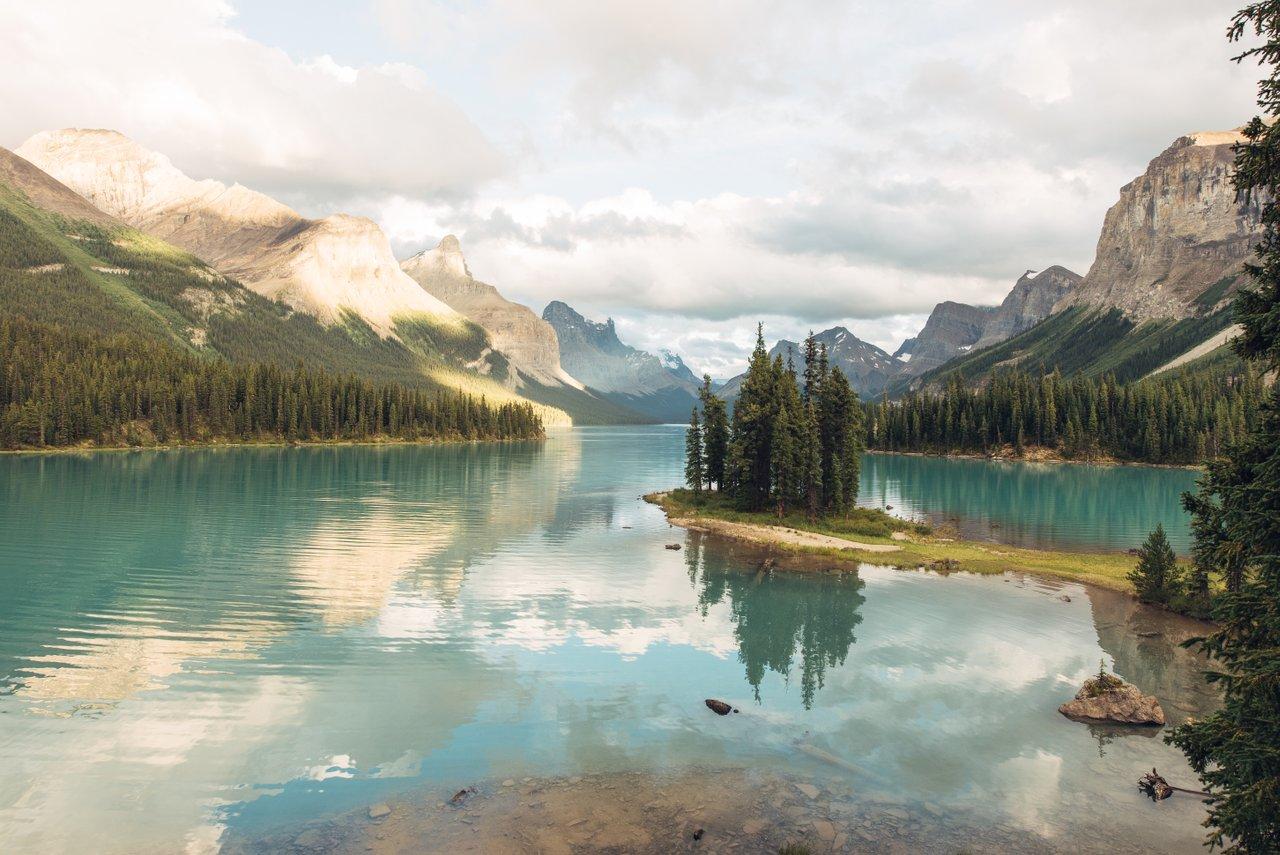
Places to go
Where big meets bold
Alberta is the kind of place that delivers no matter what you’re after. From towering Rocky Mountains, glistening lakes and sprawling grasslands, to the spirited city life and renowned festivals of Edmonton and Calgary, there’s something for everyone. Alberta is home to eight Métis settlements and 48 First Nations — with their own languages, traditions and beliefs. Whether you’re seeking cultural enrichment in the cosmopolitan city of Calgary, adventure in the majestic Rocky Mountains or nature in the wilderness of northern Alberta, there are a variety of ways to gain a deeper sense of place. Spend the night in a teepee at Blackfoot Crossing Historical Park as Knowledge Keepers share tales of the Blackfoot People. Deepen your connection with the land as a Cree guide shows you how to use local flora for medicine in Canada’s oldest National Park. Or hear the lesser-told stories of the Métis Peoples at Métis Crossing, Alberta’s first cultural interpretive centre. The possibilities are endless.
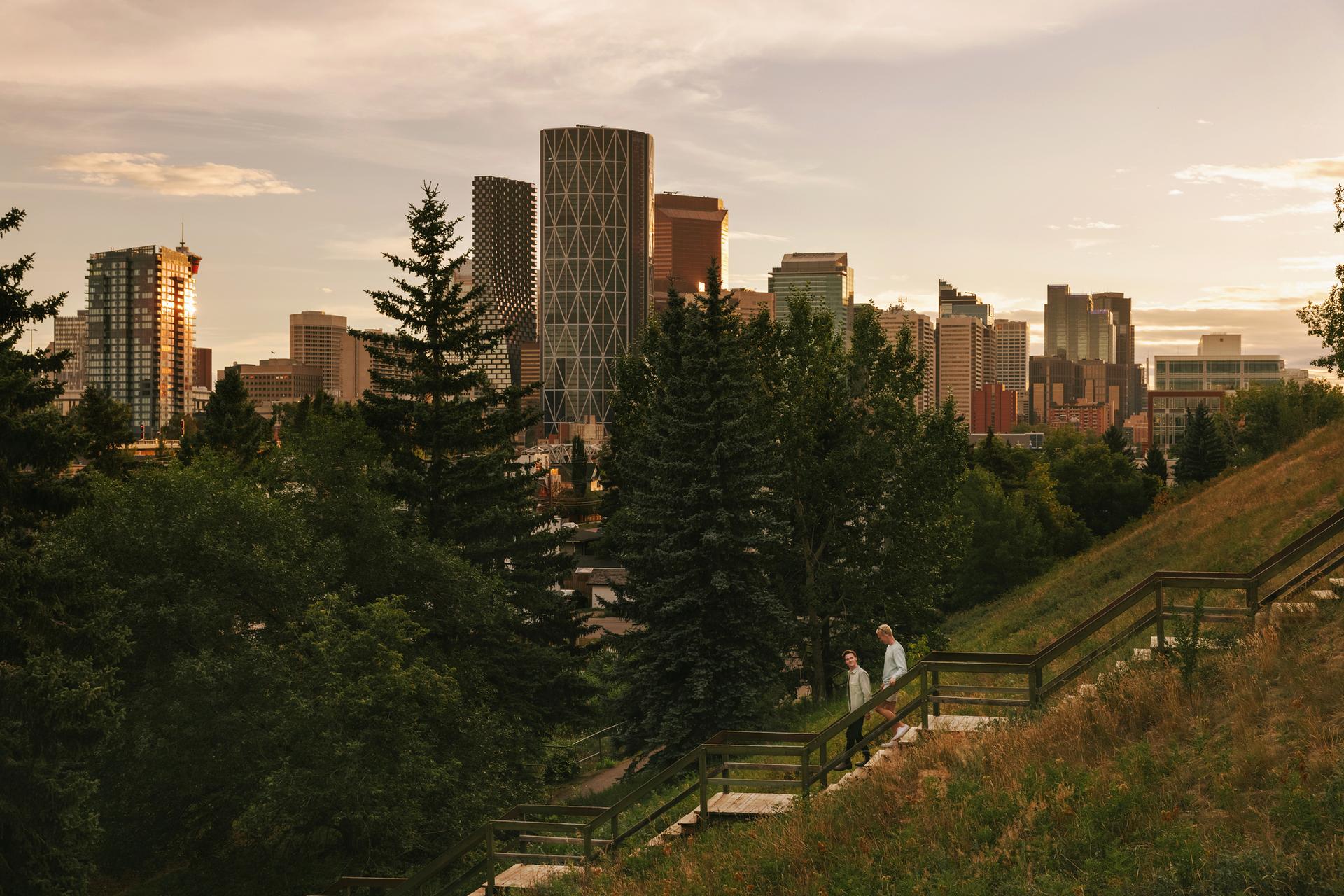
Nestled at the base of the Canadian Rockies, Calgary boasts a frontier attitude and historic neighbourhoods that buzz with bravado.
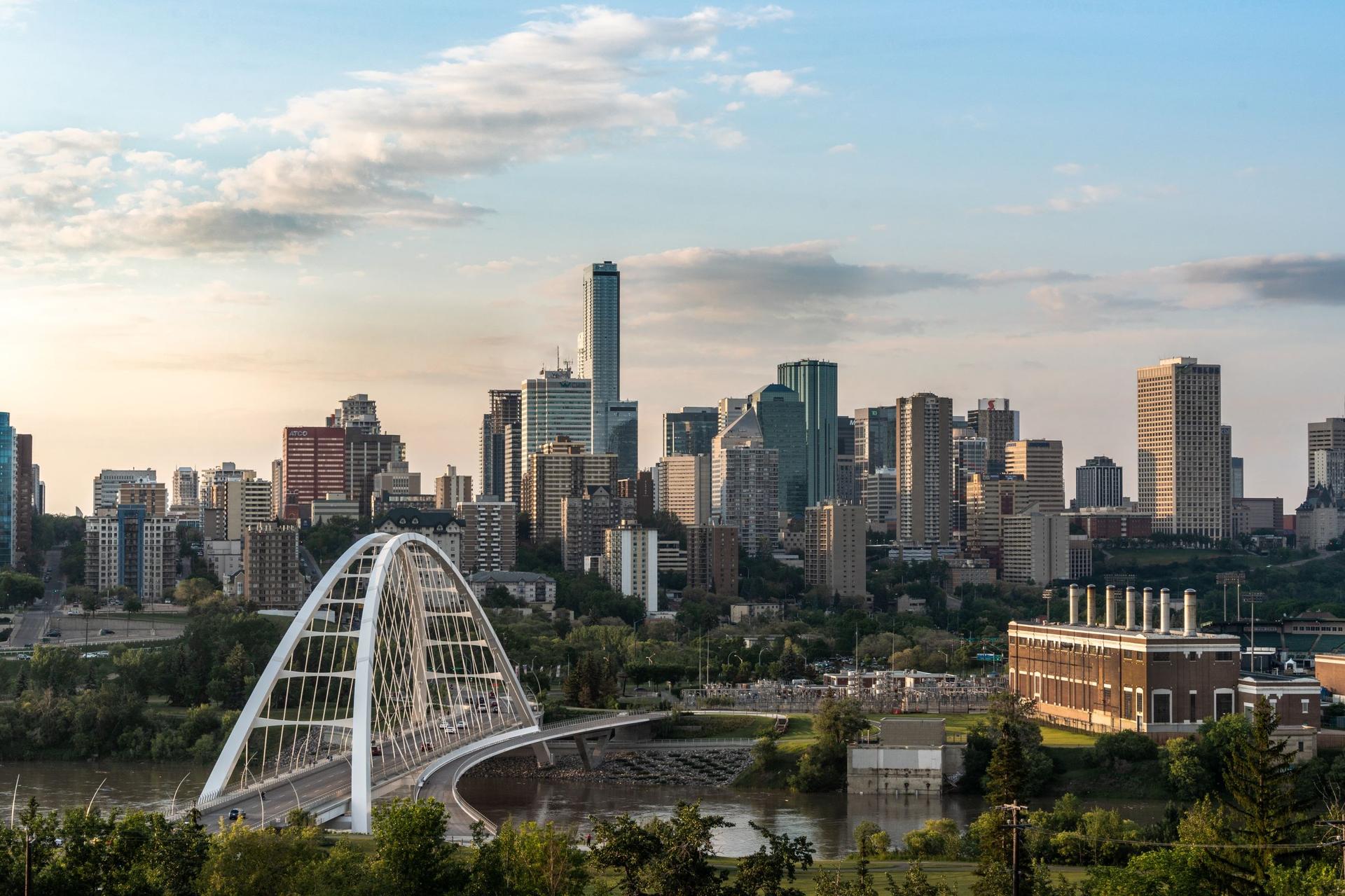
Edmonton is Canada’s northernmost metropolis in the prairie heartland of Alberta, where bison roam in Elk Island National Park and a swath of parkland unfurls from the winding North Saskatchewan River.
Things to do
Inspiring local experiences
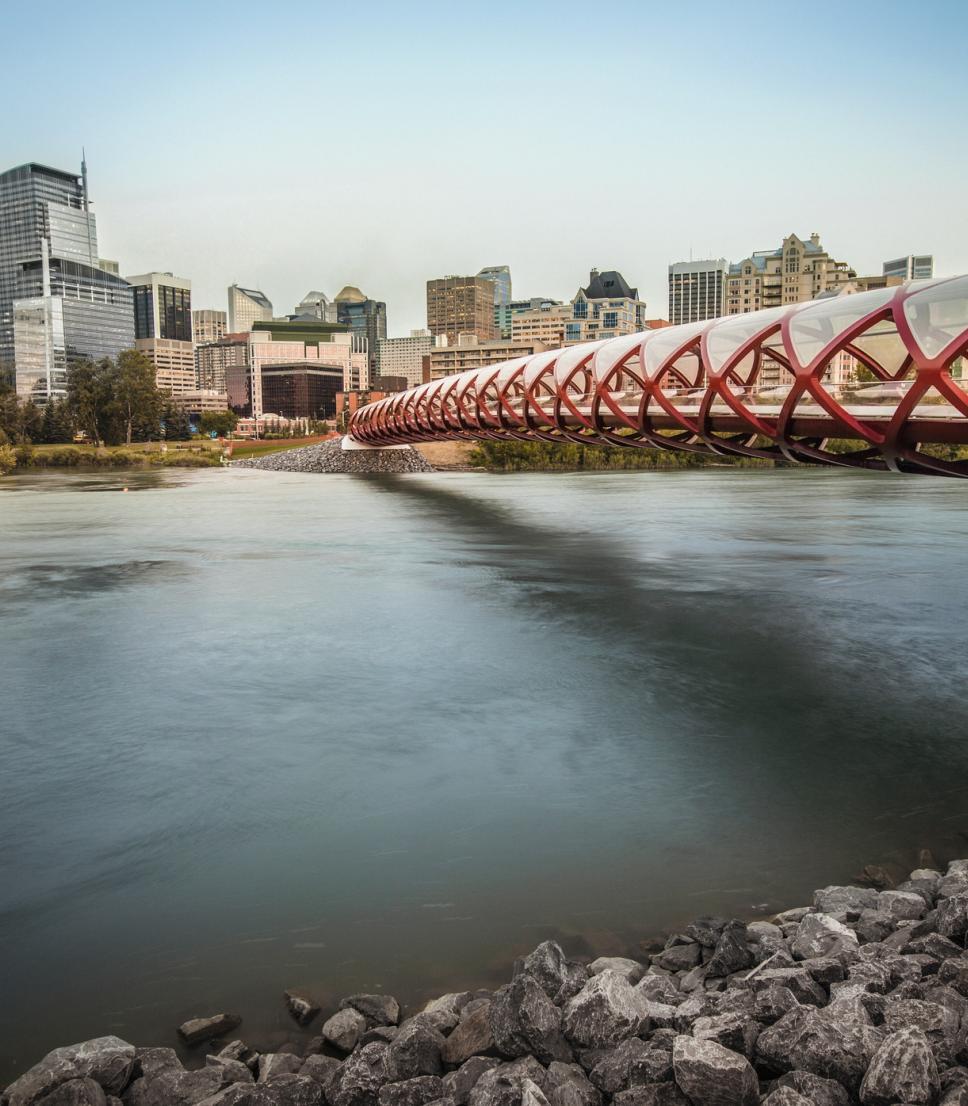
Exploring Calgary
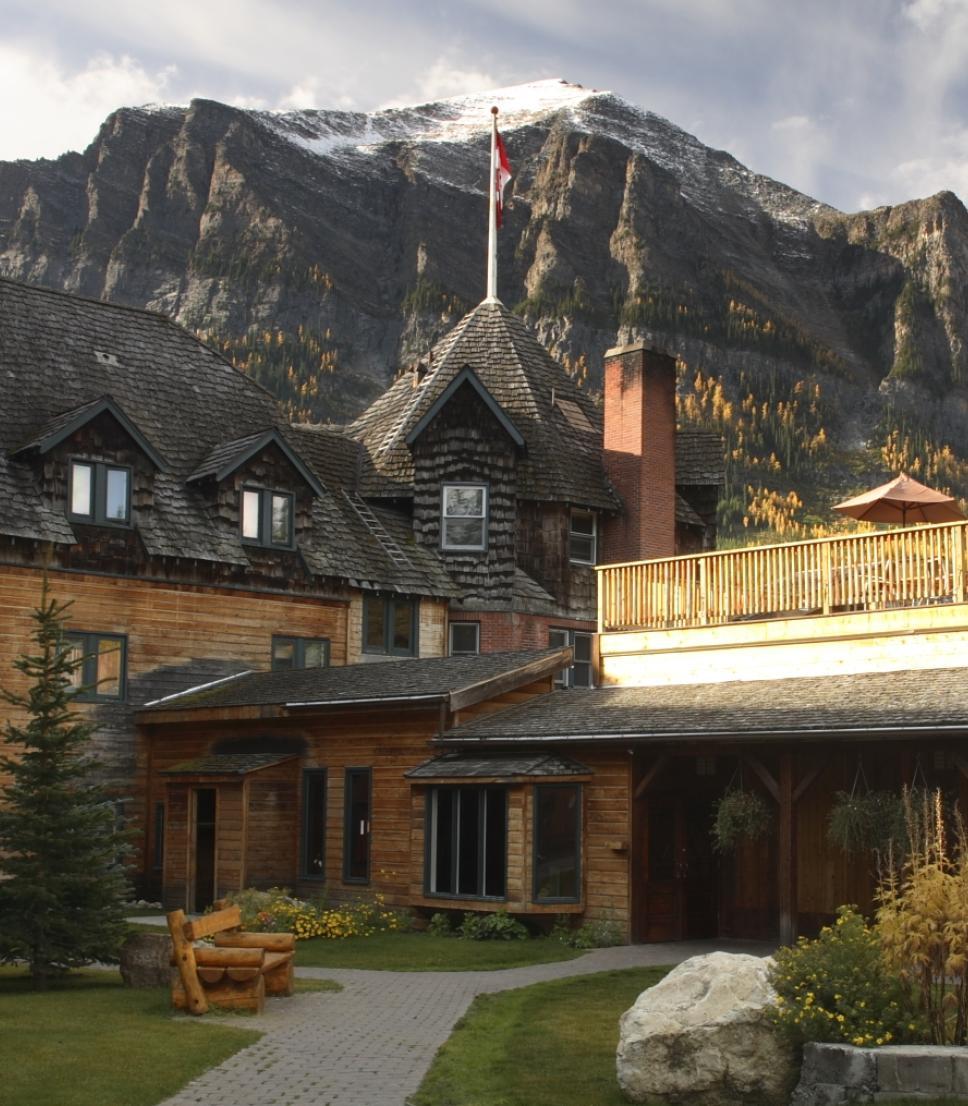
7 of the coolest places to stay in Alberta
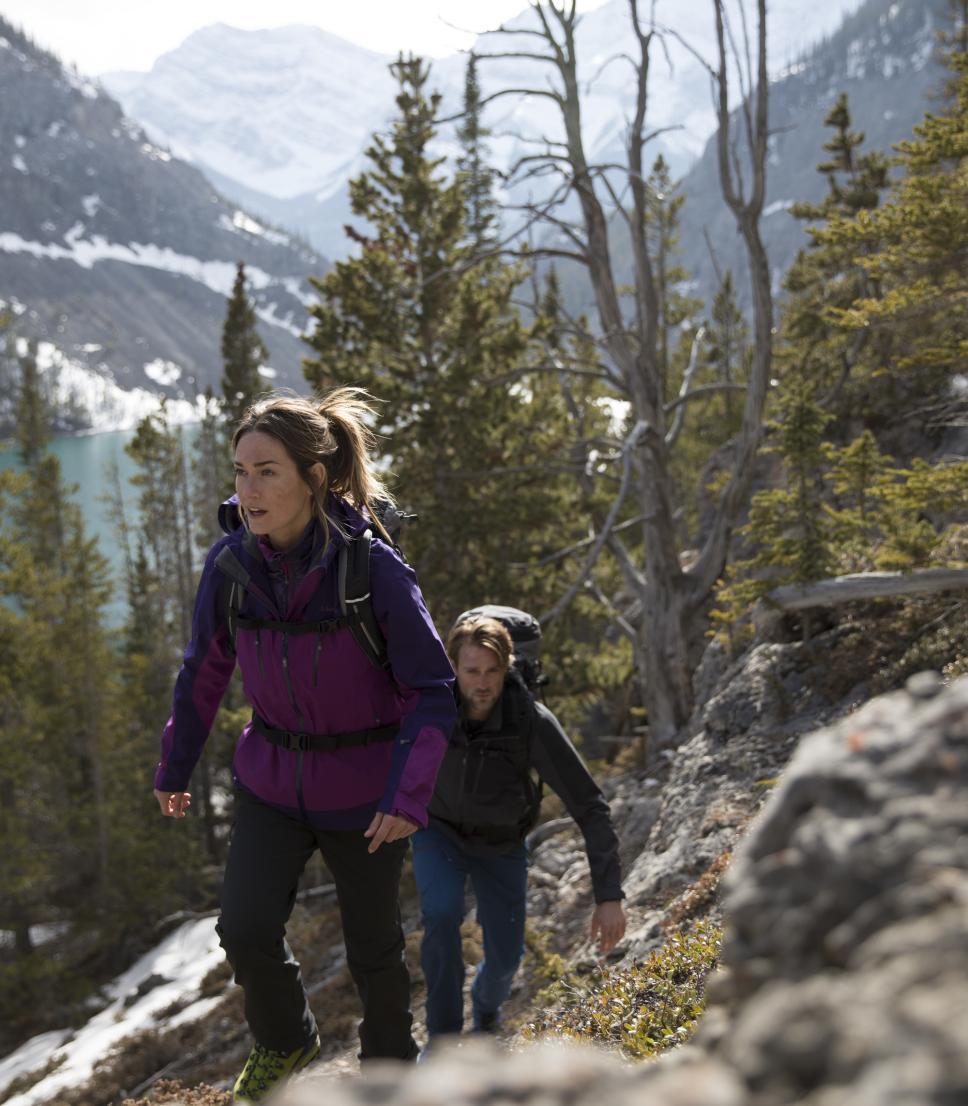
What to do on a spring trip to Alberta
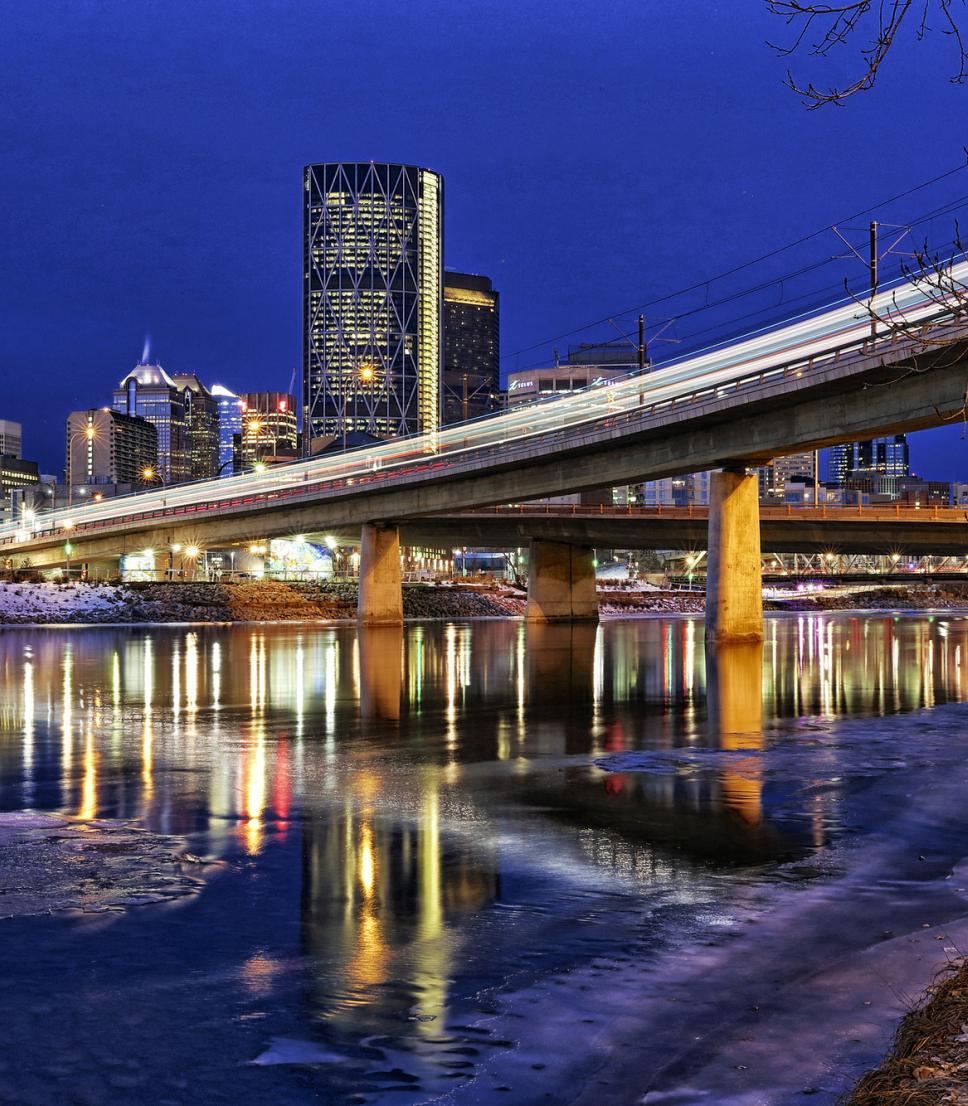
The top 10 attractions in Calgary
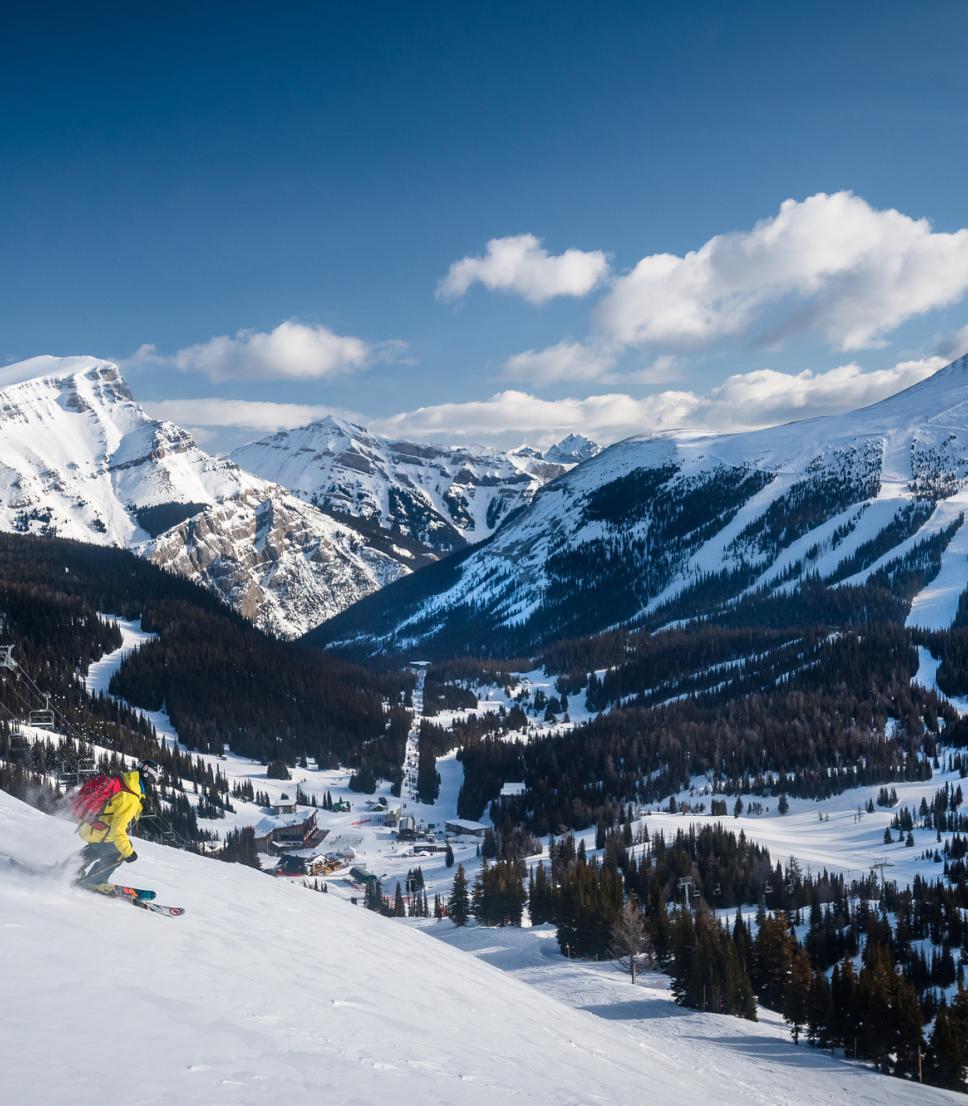
Where to ski in the Canadian rockies
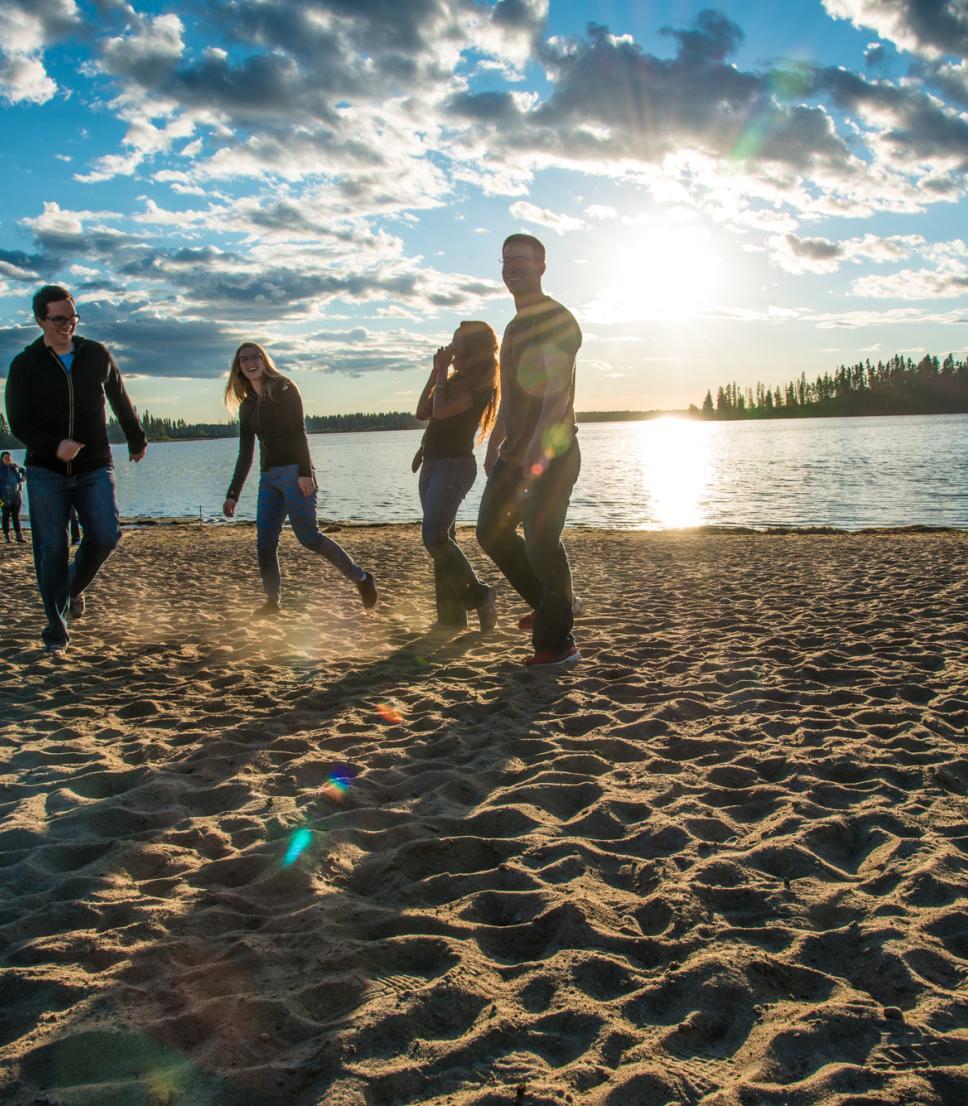
The best parks in Edmonton

6 vegetarian and vegan restaurants in Alberta
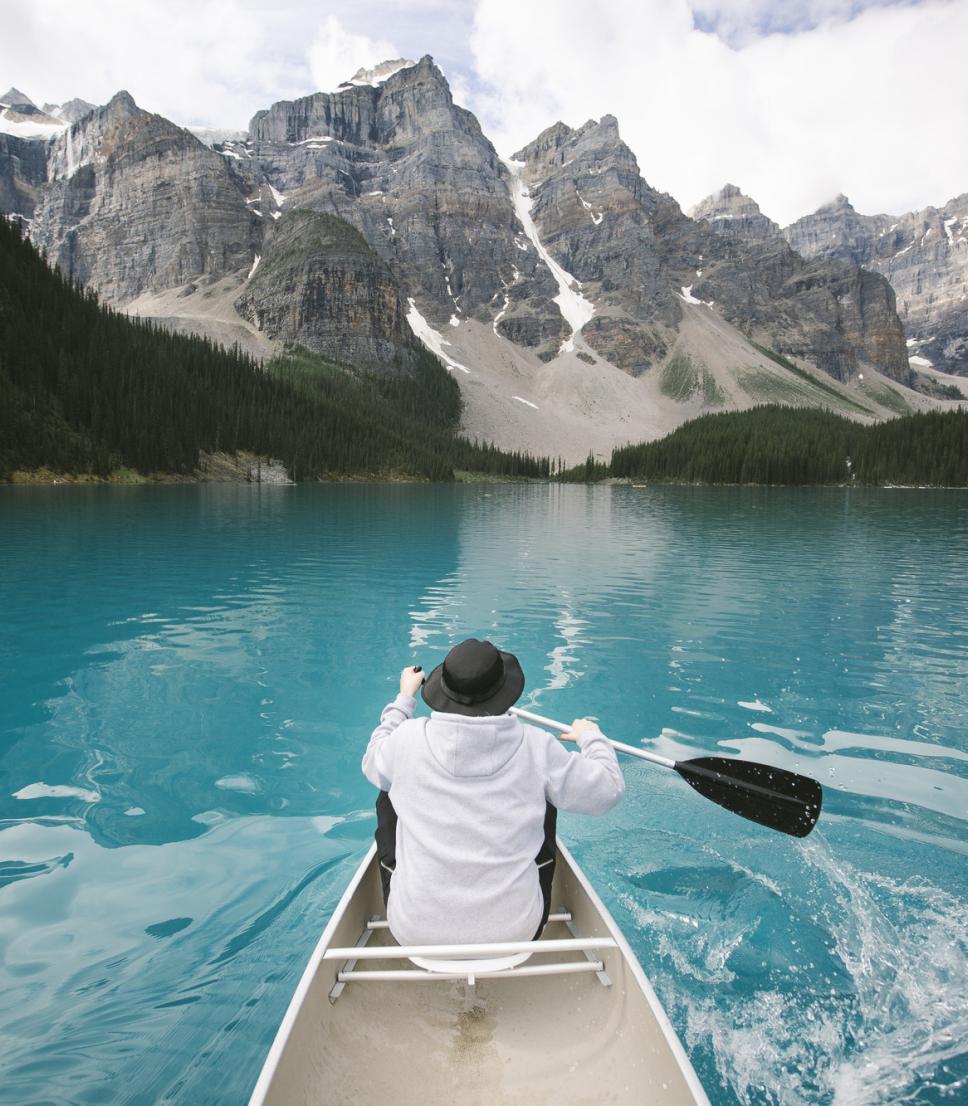
The top 10 attractions in Alberta
Itineraries.
Don’t miss the iconic spots and hidden gems. No matter where you go in Alberta, there are amazing itinerary ideas for you to explore.
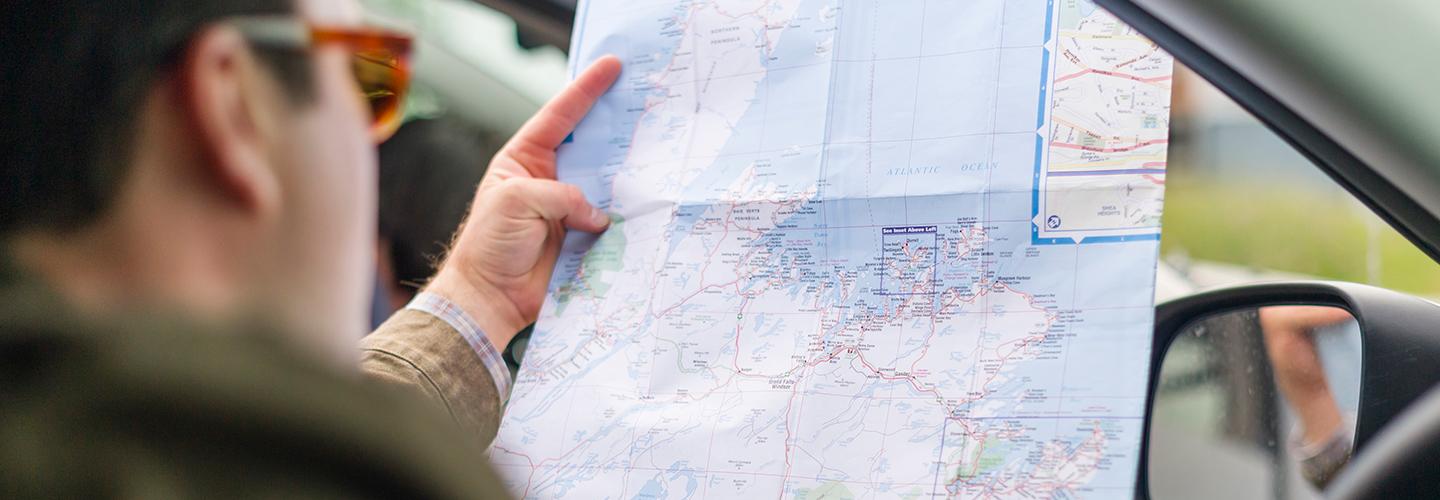
Travel packages
Great regional escapes
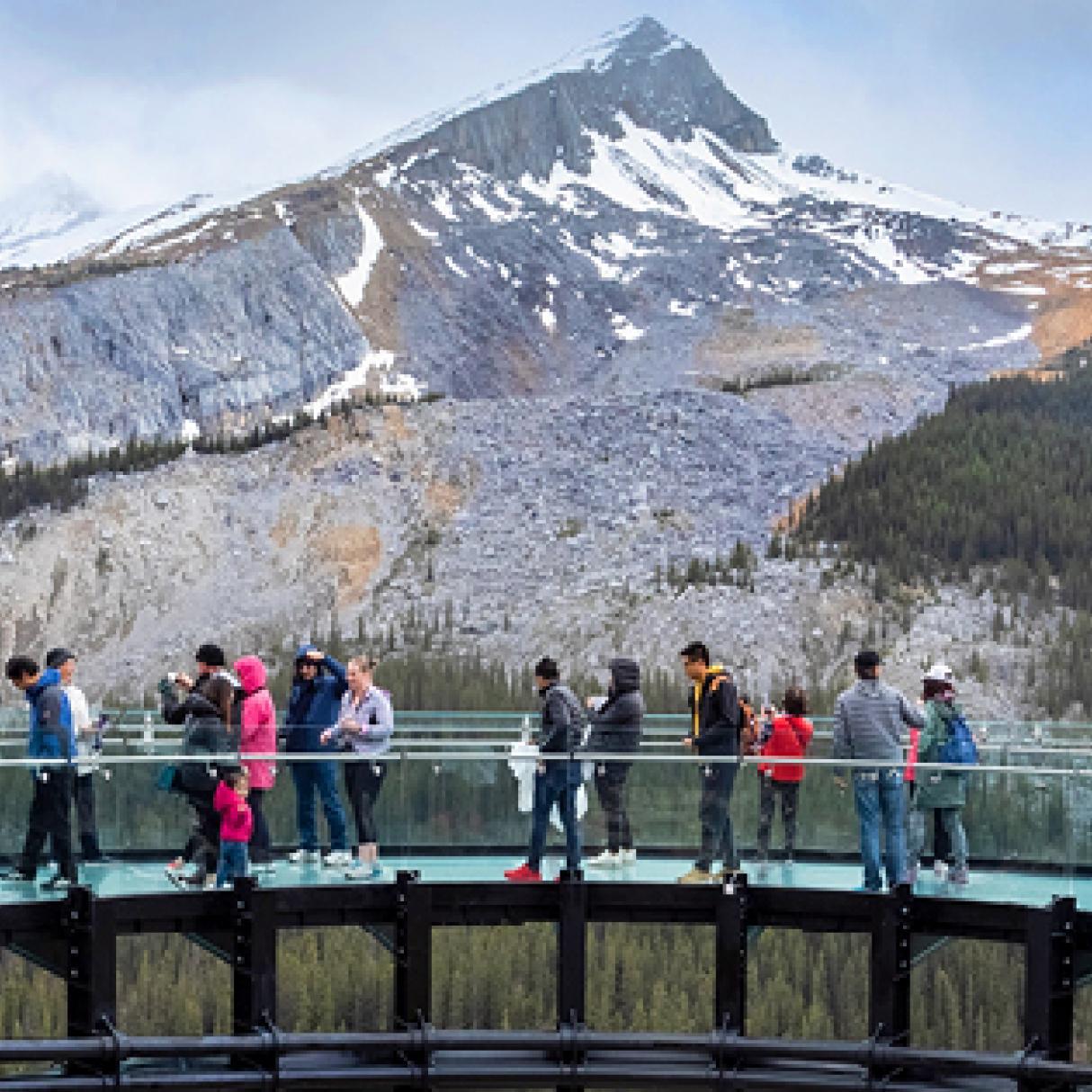
Canadian Rockies and Glacier National Park External Link Title
From USD $2,799 per person
6 days, 5 nights
Ice fields, rushing waterfalls, glacial peaks, and towering summits are just a few of the wonders awaiting you in the Canadian Rockies and Glacier National Park. Visit Head-Smashed-In Buffalo Jump, a UNESCO World Heritage site and one of the world’s oldest, best preserved buffalo jumps. Ride aboard a Jammer (open-air touring car) during a visit to Glacier National Park. Journey along the unforgettable Icefields Parkway. Stop at Athabasca Glacier and choose to ride across this mass of glacier ice or take a walk on the glass bottom platform at the Columbia Icefield Skywalk. Explore Bow Falls and Surprise Corner. Visit the incomparable Lake Louise. Get ready for an adventure that brings together the expanse of the prairies, the majesty of the Canadian Rockies, and Montana’s Glacier National Park.
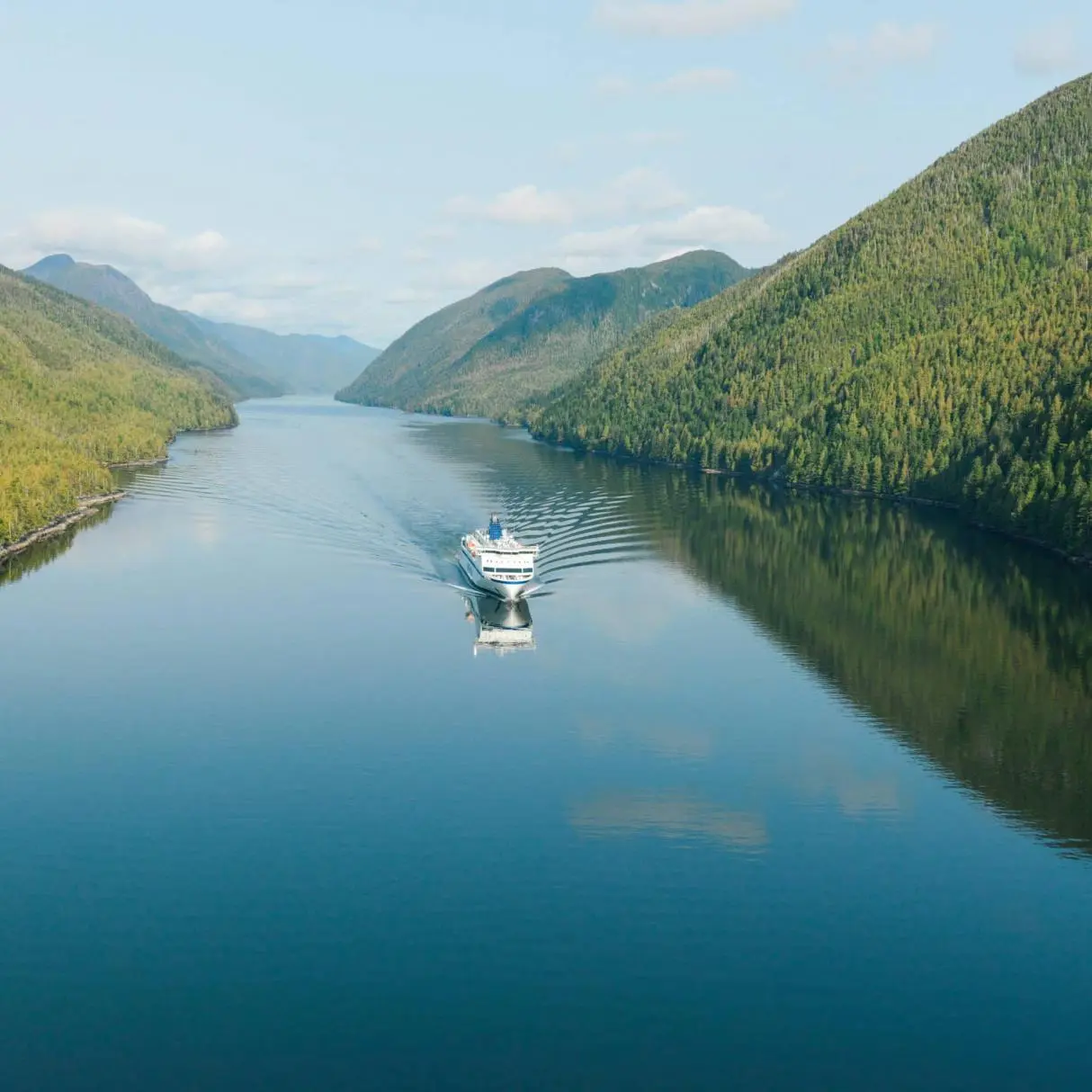
Coastal BC Inside Passage & Rockies External Link Title
From USD $4,133 per person (double occupancy)
12 days / 11 nights
This small intimate tour provides a journey of a lifetime through one of the wildest, most diverse and unbelievably beautiful parts of the world. Starting and finishing in Vancouver, we explore some of the most scenic places in British Columbia & Alberta, navigating routes that are embedded into Canadian History. We follow the Fraser River as we leave Vancouver, and make our way to the Rocky Mountains and the Continental Divide before following the Skeena River and embark on a cruise on the Pacific Ocean. Along the way, you will experience distinctly Canadian activities that will deepen your understanding of the culture, nature and landscape. Be sure to pack your binoculars for this tour!
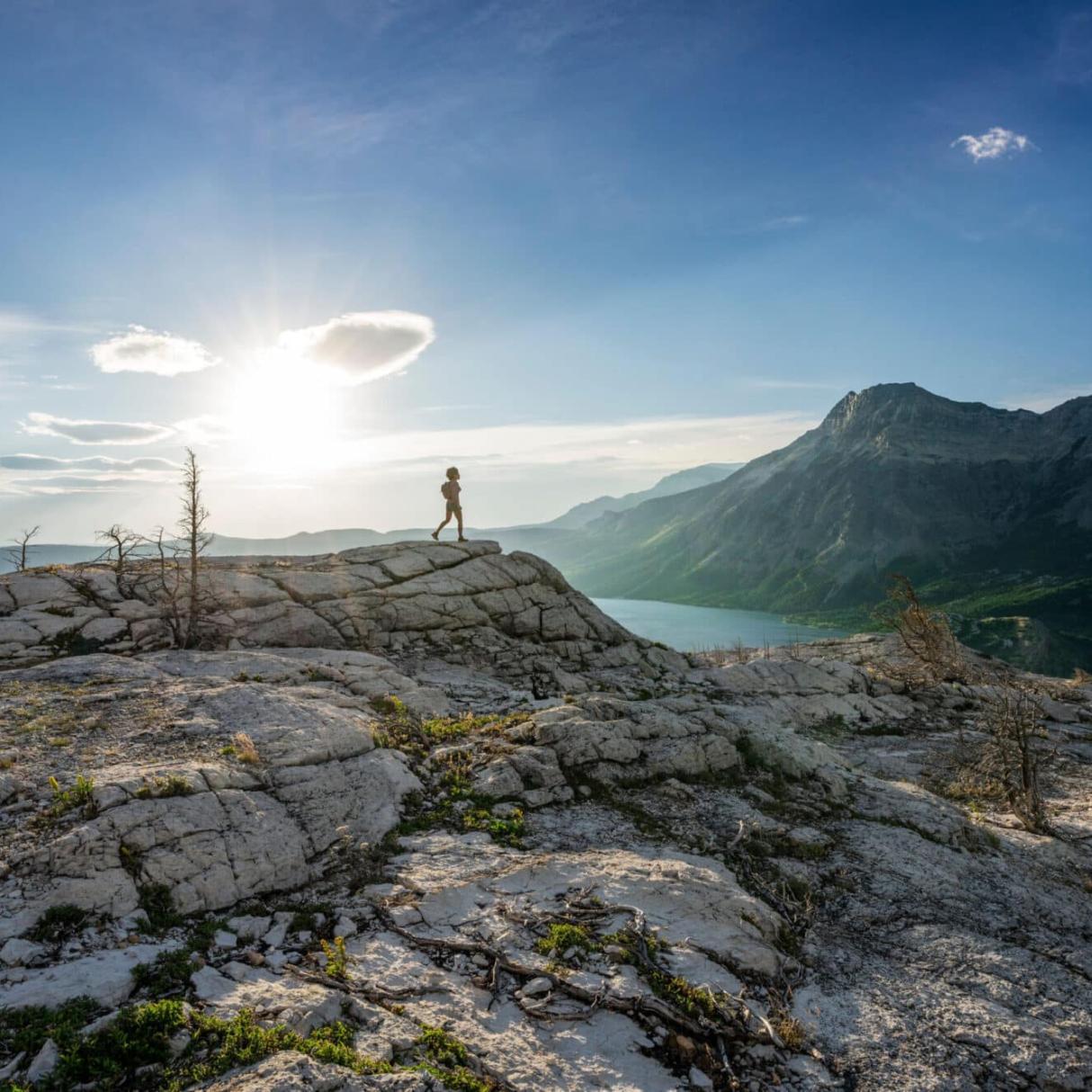
Rockies & Waterton Hidden Gems External Link Title
From USD $2,725 per person (double occupancy)
9 days / 8 nights
Travel the road less traveled and explore some of the hidden gems Western Canada has to offer. This tour will guide you from Vancouver through the Okanagan Valley and the Kootenay Rockies before entering the rolling prairies of Southern Alberta, and the magnificent views of Waterton Lakes National Park. After this, you will spend two nights in the iconic town of Banff before finishing this trip off in Calgary. This tour can be combined with a 2-day, 1-night trip on the world-renowned Rocky Mountaineer to return from Banff to Vancouver (additional cost).
Discover incredible destinations
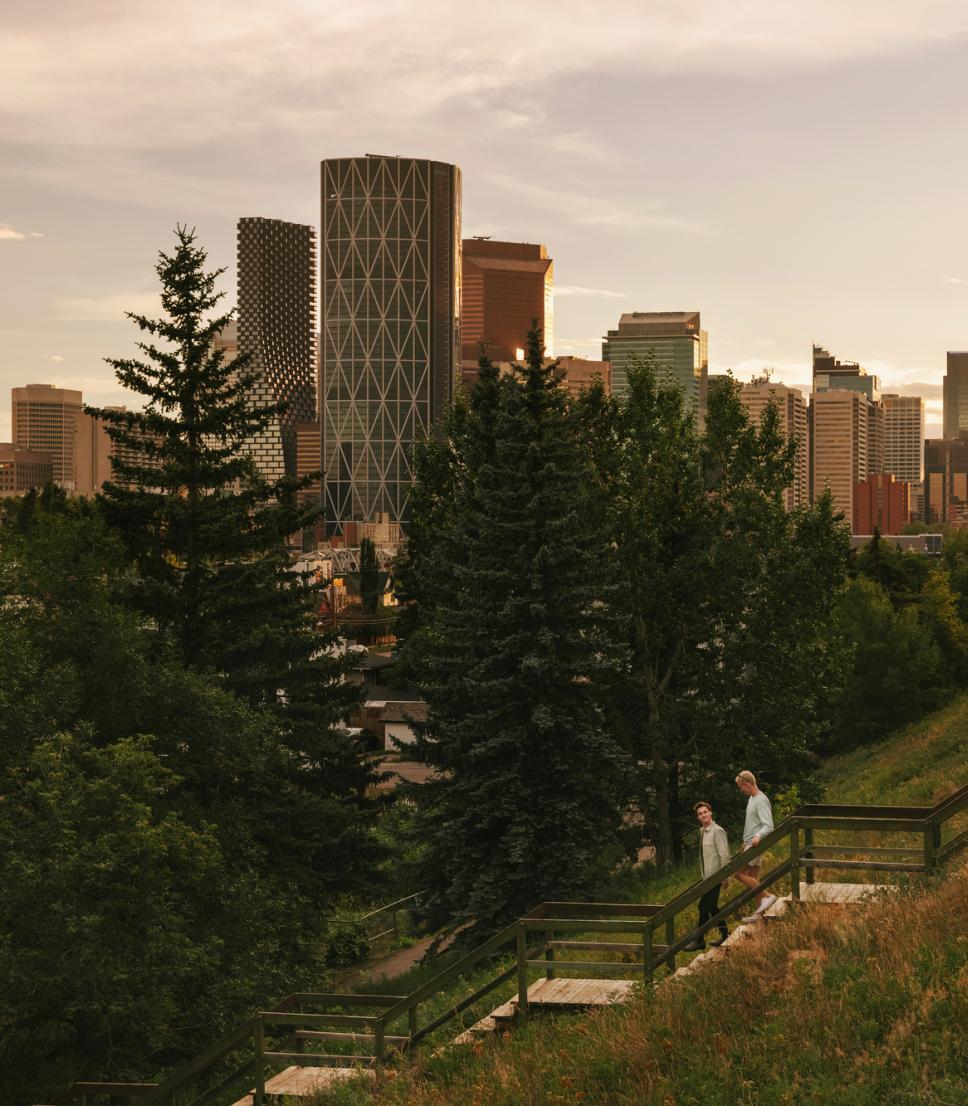
British Columbia
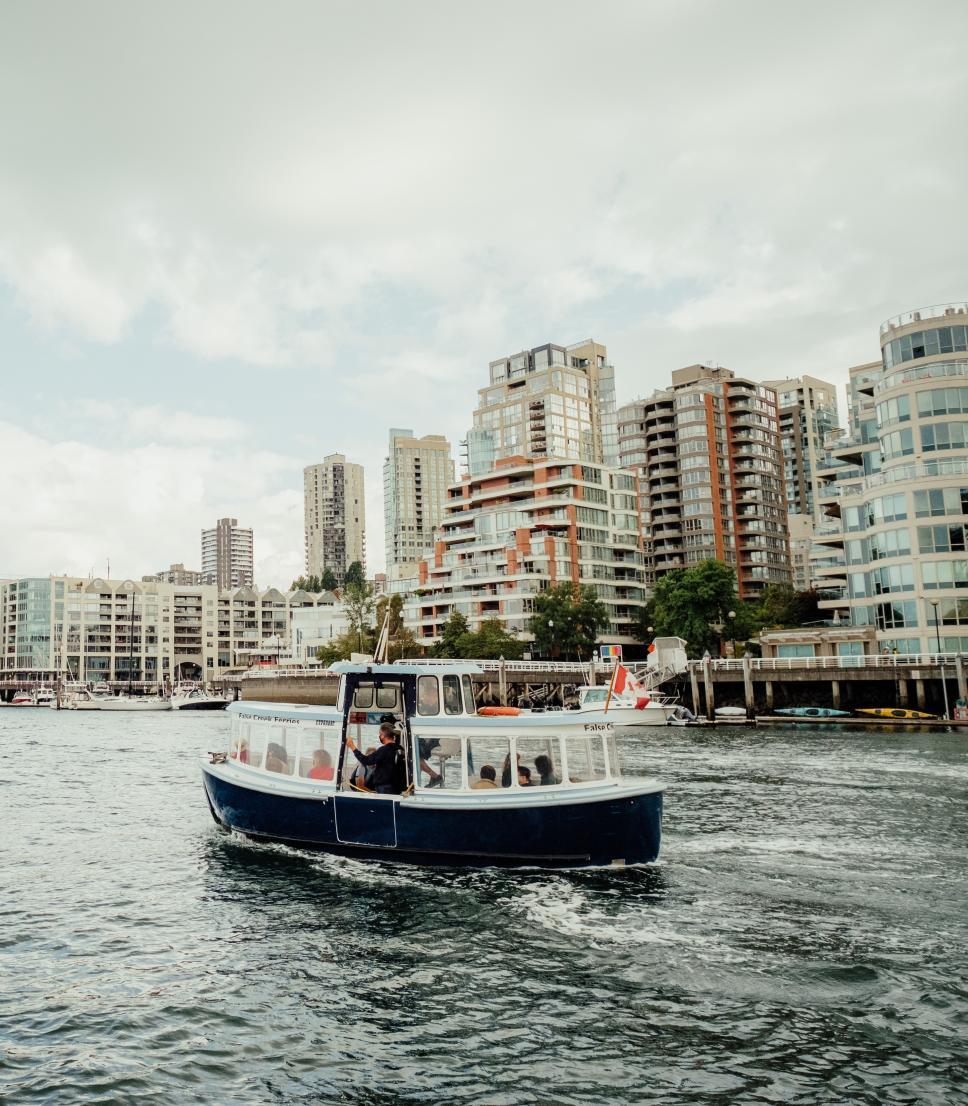
Follow us and share: #ExploreCanada
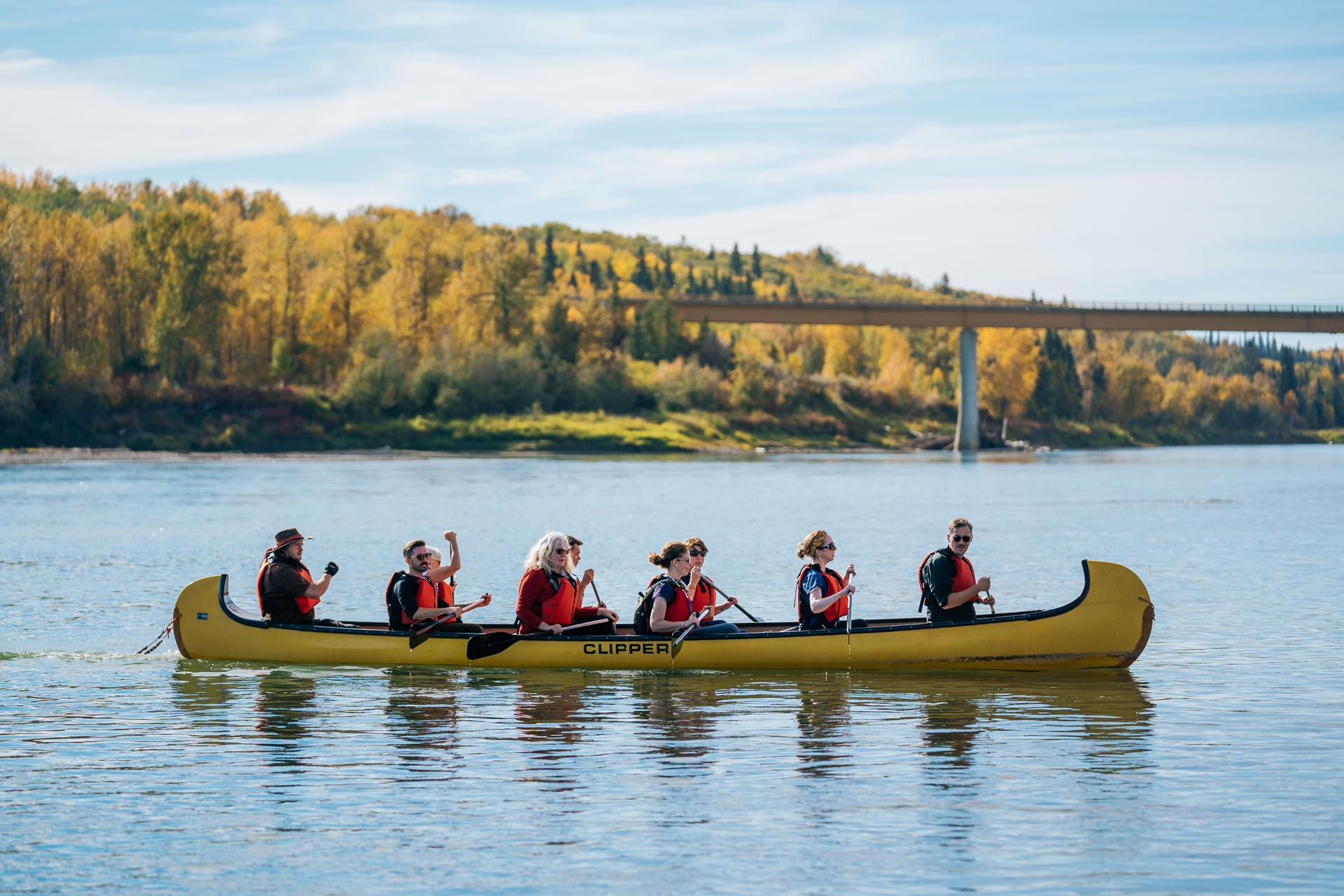

10-Day Alberta Canada Road Trip Itinerary, the Canadian Rocky Mountains
Alberta Canada is a beautiful road trip full of snow-covered mountain peaks, pine fresh air, hundreds of distant glaciers, brilliant turquoise lakes, waterfalls, alpine meadows, and charming resort towns. This epic road trip through Alberta Canada brings you to three National Parks: Waterton Lakes National Park, Banff National Park including Lake Louise, and Jasper National Park including the Columbia Icefield and Athabasca Glacier. The area is full of wildlife including grizzly bears, black bears, wolves, mountain goats, and moose. Be sure to eat poutine and anything maple during this 10-day Alberta Canada road trip.
You are excited to begin your road trip through Alberta Canada and want to know the best time of year to visit, where to stay, must-see attractions, and where to eat while there. Researching the best things to do on a road trip through Alberta Canada while working full time is overwhelming and you don’t have hours to spend on the internet. Save time and plan an unforgettable trip full of top activities with this ultimate Alberta Canada road trip itinerary.
READ: C omplete Canada Travel Guide, What You Need to Know

Alberta Canada, Canadian Rocky Mountains Road Trip Planner
When is the best time to visit the alberta canada.
The high season is June-September and December-February. Daytime highs during the summer are 68 to 77°F and can reach the mid to upper 90s. Daytime highs during the winter months are 23 to 5°F but can reach -22 to -40°F. Many roads and popular areas are closed in the winter. Expect rain in the summer and snow in the winter.
Visit in the spring to see wildlife. You won’t be disappointed, check out my video below. The Calgary Stampede is held in the first couple weeks of July. Winter brings skiing, snowshoeing, and soaking in hot springs under the stars. The Northern Lights are visible from September until mid-May. Note that Lake Louise does not thaw until early June while Moraine Lake does not thaw until mid-June.

What is the Best Way to Travel the Alberta Canada?
You will need your own transportation to follow this 10-day Alberta Canada road trip itinerary. Save precious PTO by flying from your home to Calgary Canada and renting a car to continue the journey. You will also need a National Park Pass. Purchase it online HERE .
How Long Do You Need to See the Alberta Canada?
Alberta Canada is a province located in western Canada. The Canadian Rocky Mountains are to the west and the badlands are to the east. Montana and the shared Waterton-Glacier International Peace Park are to the south. It is possible to visit Calgary, Waterton Lakes National Park, Banff National Park and Lake Louise, and Jasper National Park including the Columbia Icefield and Athabasca Glacier in 10 days. If you have more time, consider taking the train to Vancouver Canada .

How Expensive is Alberta Canada?
Traveling is expensive post-COVID and my prices are no longer accurate. Expect to pay $5000 plus airfare to complete this 10-day Canadian Rockies road trip with hotel accommodations.
What to pack for an Alberta Canada road trip
Layers! I was not prepared for snow during my end-of-June visit. I have also been in the area during the first of July and wore a tank top hiking Johnson Canyon. Be prepared for it all and bring a jacket, gloves, umbrella, and raincoat. Be sure to pack cleats if you are visiting in the winter months.

Canadian Rockies Alberta Canada Road Trip Highlights
Attend the Calgary Stampede , enjoy high tea at the Prince of Wales Hotel in Waterton Lakes National Park, learn about dinosaurs in Drumheller, and check out the Canadian Badlands. Head to Banff National Park and hike the Johnston Canyon catwalk , shop downtown Banff for souvenirs, photograph Victoria Glacier across Lake Louise, hike to Lake Agnes Tea House for tea above a waterfall, and canoe Moraine Lake. Drive the scenic Icefields Parkway stopping at Peyto Lake, Mistaya Canyon, Weeping Wall, Athabasca Glacier, Tangle Creek Falls, Sunwapta Falls, and Athabasca Falls. In Jasper National Park take a lake cruise past Spirit Island on Maligne Lake. hike Pyramid Lake, Maligne Canyon, and the Valley of the Five Lakes.
Day-by-Day Guide for a Road Trip for Alberta Canada and the Canadian Rockies
ROUTE AT A GLANCE: C algary – Waterton Lakes National Park – Drumfeller and Canadian Badlands – Banff National Park – Jasper National Park
MILES: 1200 miles
HOW MANY DAYS: 10

Day One and Two: Arrive in Calgary Canada
Calgary is the largest city in Alberta and is the perfect starting point to explore the Canadian Rockies. The city is surrounded by prairies, foothills, and mountains along with a dazzling city skyline and two beautiful rivers snaking their way through the city. The area is full of fun things to do: go bobsledding at the Canada Olympic Park, check out the views from the top of Calgary Tower, photograph the Calgary skyline from Prince’s Island Park, have dinner on Calgary’s Stephen Avenue, check out the gorilla rainforest at the Calgary Zoo and so much more. If possible, plan your trip during the famous Calgary Stampede and enjoy the rodeo, concerts, and pancake breakfasts.
Overnight: Calgary Canada
READ Things to Do in Calgary Canada

Day Three: Waterton Lakes National Park and Red Rock Canyon
Waterton Lakes National Park sits in the Canadian Rocky Mountains and is full of glaciers, waterfalls, evergreen forests, trickling streams, scenic pullovers, picnic spots, red Adirondack chairs, and more. Popular park activities include hiking, horseback riding, biking, canoeing, and paddleboarding. Although most of the town is closed down during the winter, the park is open for ice skating, snow-shoeing, cross-country skiing, and ice climbing. Bighorn sheep, elk, moose, black bears, and grizzly bears live in Waterton Lakes.

How to Spend One Day at Waterton Lakes National Park
6 am Grab a coffee and breakfast roll before driving toward Waterton. Stop at the roadside of Lundbreck Falls on the way.
9 am Drive the scenic Red Rock Parkway to Red Rock Canyon. Hike Red Rock Canyon and Blakiston Falls.
11 am Stop at Driftwood Beach to photograph the Prince of Wales Hotel. Continue on to photograph Cameron Falls.
12 pm Shop for souvenirs on Waterton Ave before having lunch. Photograph the Prince of Wales Hotel from International Peace Park, or, enjoy high tea at the Prince of Wales Hotel and hike up Bears Hump for lake views.
4 pm Take a cruise on Waterton Lake before returning to Calgary Canada.
READ Waterton Lakes National Park Travel Guide

Day Four: Drumheller and Canadian Badlands
The Canadian Badlands are full of eroded sandstone cliffs and hoodoos. Drumheller is the Dinosaur Capital of the World and is world-renowned for dinosaur fossils. Explore Dinosaur Hall at the Royal Tyrrell Museum. Photograph the sandstone cliffs at Horsethief Canyon and take a walk on the Hoodoos Trail while in the area. Be sure to climb the 106 steps up Tyra, the World’s Largest Dinosaur, for views of the Canadian Badlands. The Canadian Badlands are a 1.5-hour drive from Calgary.

Banff National Park
Banff National Park is in the heart of the Canadian Rockies. It is the oldest of Canada’s National Parks and became a UNESCO World Heritage site in 1984. This is grizzly bear country. Get excited if you are driving and traffic suddenly stops; start looking for grizzlies along the side of the road. Banff is a small resort town within Banff National Park. 3 million people visit this charming town yearly and it is a great base with many things to do when visiting the area. You will be spending three days here. Browse the highlights below and add them to the excursions to Johnston Canyon, Lake Louise, and Moraine Lake as time allows.

Stop for a meal at a brewpub in downtown Banff then shop for a few souvenirs
Take the scenic Lake Minnewanka Cruise
Go for a covered wagon ride and enjoy a cookout
Hike up Tunnel Mountain
Take a walk along the Bow Falls Trail and relax by the river
Ride the Banff Gondola and check out the views from the ridgetop boardwalk
Soak in a hot spring with a view at Banff Upper Hot Springs
Take a ghost tour
Explore Fairmont Banff Springs, the Castle in the Rockies
Enjoy high tea at the Fairmont Banff Springs hotel
READ Fairmont Banff Springs Afternoon Tea in the Rockies
READ Banff National Park Travel Guide for First-Time Visitors
Book the Best Canada Attractions and Day Tours Through Get Your Guide Now!

Day Four: Hike Johnston Canyon in Banff National Park
Leave Calgary Canada and drive the scenic Bow Valley Parkway toward Banff National Park. Johnston Canyon Trail is one of the most popular hikes in Banff National Park and no Alberta Canada road trip would be complete without a stop here. The trail leads through a pine forest to a series of catwalks attached to a narrow deep rock canyon. As you follow the catwalk Johnston Creek’s crystal clear turquoise water rushes beneath you, it is breathtaking. The best view of the lower falls is from the bridge. Cross the bridge, duck under a tunnel, and find yourself on a small metal platform directly in front of the falls. You will be amazed by the power of the falls, and you will get wet!
There are three popular hikes at Johnston Canyon Trail. The lower falls trail is a simple 1.4-mile out-and-back hike. Continue on to the upper falls for a moderate hike with an incline. The falls can be viewed from the base or above. The third hike takes you to the inkpots; seven jewel-colored, cold mineral springs, and a meadow. Be sure to wear hiking shoes and layers, the area is shaded and can be cool. There are no services in the area, bring water and snacks. Arrive early, the area is popular and the parking lot is small. Be prepared to get wet! Do not veer off the path, if you slip and fall into the creek you will be swept away.
Overnight in Banff

Day Five: Explore Lake Louise in Banff National Park
Lake Louise is an icon of the Canadian Rockies. The beautiful Fairmont Chateau sits at the foot of majestic snow-covered mountains and Victoria Glacier is in the distance feeding the turquoise lake. Be sure to photograph Victoria Glacier across Lake Louise. Hike to the Fairview lookout and take a photo looking back at the hotel. Explore the upscale Fairmont Chateau and canoe on the lake. Take the 4.5-mile hike to Lake Agnes Tea House for tea above a waterfall or hike to the Plain of Six Glaciers Tea House for tea with a view. The Lake Louise Station Restaurant is a great place for lunch while watching the trains go by.

Day Six: Canoe Moraine Lake in Banff National Park
Moraine Lake sits in the Valley of Ten Peaks and is surrounded by pine trees and snowcapped mountains. The lake is fed by glacier water and is bluest after the glacier begins to melt in June and July. This is a great spot to relax and spend an afternoon canoeing on the lake. Be sure to take the Rockpile Trail for gorgeous views. There are many well-marked hiking trails in this area. Observe the signs and bring bear spray!

Day Seven: Drive the Scenic Icefields Parkway
Pack a lunch and plan to spend the entire day stopping at the viewpoints. Do not miss Bow Lake, Peyto Lake, Mistaya Canyon, the Weeping Wall, Athabasca Glacier, Tangle Creek Falls, Sunwapta Falls, and Athabasca Falls. Attempt to arrive in Jasper National Park around 5 pm and visit Miette Hot Springs for a soak after a long day in the car.
Overnight in Jasper

Day Eight: Jasper National Park
Jasper National Park is known for the Columbia Icefield and its abundance of wildlife. You will also find snowcapped mountain peaks, waterfalls, turquoise glacier-fed lakes, hot springs, and red Adirondack chairs. Elk, moose, cougars, deer, bighorn sheep, mountain goats, and grizzly bears live in Jasper. Popular summer activities include hiking, mountain biking, kayaking, rafting, canoeing, paddleboarding, and white water rafting. Skiing, snowboarding, ice climbing, ice skating, dog sledding, sleigh rides, and the Maligne Canyon ice walk are popular in the winter months.

How to Spend One Day at Jasper National Park
8 am Grab coffee and a breakfast roll to enjoy while you hike past waterfalls in Maligne Canyon.
11 am Stop for a picnic lunch at Medicine Lake.
12:30 Cruise Maligne Lake past Spirit Island.
2 pm Take a walk around Pyramid Lake.
READ Jasper National Park Travel Guide

Day Nine: Walk on Athabasca Glacier
Prebook the Ice Explorer Glacier Tour for the earliest time available. Get up early to check out of the hotel, have breakfast in town, and return to the Columbia Icefield Discovery Centre. Spend approximately 3 hours on the Athabasca Glacier and walking across the Glacier Skywalk. Continue on to Calgary Canada and enjoy dinner on Stephen Avenue.
Overnight in Calgary Canada
Day Ten: Return Flight from Calgary Canada
Have More Time? Spend the day at the West Edmonton Mall, the biggest mall in North America, look for bison at Elk Island, visit Yoho National Park, take the rappelling adventure tour of Canmore Cave, or stop to support the Yamnuska Wolfdog Sanctuary rescue center in Canmore.
Be sure to check the Alberta Canada Office of Tourism website for current events and festivals.
Bookmark and Pin this Alberta Canada Road Trip Itinerary

Plan Your Alberta Canada Road Trip Itinerary
Canada travel guide.
Pick up a Canada Travel Guide from Amazon.com to browse on the plane.
Book Your Accommodation in Alberta Canada Now
Spending the night? Search Booking.com and VRBO in one place to find the perfect property!
Best Alberta Canada Attractions and Day Tours
The best attractions sell out! Don’t chance it, get your tickets now and relax when you arrive.
Travel Essentials
Need a universal travel adaptor, power bank charger, or packing cubes? Save time at my Amazon shop and have travel essentials delivered to your home.
Have a great vacation!
National Geographic content straight to your inbox—sign up for our popular newsletters here


How to plan an epic road trip through the Canadian Rocky Mountains
Canadian travel writer, tour guide and Rockies native Patrick Twomey shares his expert tips on how to get the most out of Canada's big mountain country.
Calgary in Alberta and Vancouver in British Columbia are the key international gateway cities to the Canadian Rocky Mountains, which sit astride the two provinces. For an instant hit of big country vistas, start in Calgary and drive west, and you’ll be in the deep Rockies within 45 minutes. That ‘wow’ moment takes much longer from Vancouver or Edmonton, Alberta’s other gateway city.
The classic trip
Start in Alberta’s capital, Edmonton , and allow time to visit River Valley, Canada’s largest urban park. Heading west, the drive to the mountains takes about three hours as you transition from the prairies to the foothills and finally enter Jasper National Park . Spend two nights in the area — you’ll see wildlife throughout most of the year. Jasper has half as many hotels as Banff, so book ahead and shop around for deals. Next, drive south on Highway 93 to Banff National Park, taking in the Columbia Icefields. Stay two nights in the Banff/Lake Louise area and then continue south on Highway 93 through Kootenay National Park. Stay a night in Radium Hot Springs (take a dip in the pools) before continuing south for spectacular views at Crowsnest Pass and Waterton Lakes National Park. From Waterton, it’s a nice three-hour drive to Calgary, but I recommend stopping at UNESCO Heritage site, Head-Smashed-in Buffalo Jump, an Indigenous mass-hunting site where bison were driven off the cliff. Then backtrack to Highway 22 for panoramic views at Highwood Pass, the highest in Canada.

The fast-track trip
On a two-to-three-day route from Calgary don’t miss Three Sisters, a spectacular trio of mountains near Canmore, and visit Canmore Nordic Centre , a hub for cross-country skiing at the 1988 Winter Olympics — also great for mountain biking. As a base, Canmore is a good alternative to Banff or Jasper, offering a more diverse range of accommodation. Follow the unpaved road to the lakes and river of Spray Valley Provincial Park or, from Canmore head to Banff National Park to loop around Lake Minnewanka. Beyond the town of Banff, Cave and Basin, a significant indigenous site for more than 10,000 years, was the birthplace of Canada’s national park system.
From Banff the following morning, walk up Sleeping Buffalo (aka Tunnel Mountain) to summit an easy Rockies’ peak. Alternatively, drive to Norquay ski resort to walk the 2.6 mile Stoney Lookout loop through evergreen forest. Accessible year round, it has virtually no foot traffic and offers the best views of distinctive Cascade Mountain and the mighty Western Cordillera’s front ranges.
On day three, drive to Lake Louise for sunrise. In good weather take the summer chairlift from its ski area, a good vantage point for grizzlies. Then head into Yoho National Park and drive up to Takkakaw Falls; the road open May/June-September/October. Don’t miss lunch at Truffle Pigs Bistro & Lodge in the town of Field, for laidback, gourmet Rockies dining. See more of Patrick’s travel tips
Peter Lougheed Park
This provincial park in Alberta’s Kananaskis Country is home to Highwood, Canada’s highest pass (closes Oct-May for animal migration). It’s less accessible for coach tours, but wildlife is abundant including grizzly and black bears, elk, deer, moose, and even cougars, lynx and Rocky Mountain wolf.
Takakkaw Falls
Near Lake Louise, via a hairpin road, these ‘magnificent’ waterfalls (their meaning in Cree) are among Canada’s highest. Here, meltwater from the Daly Glacier thunders into the Yoho Valley overlooked by 3,189m Cathedral Peak. This is excellent terrain for backcountry hiking and camping (pack your bear spray).
Jasper dark skies
A wider valley than Banff, Jasper has dimmed its lights, making the Aurora Borealis more visible. Along with Yellowknife in the Northwest Territories, this is one of Canada’s Northern Lights hubs. December to March is peak season, with starry skies year-round in good weather.
Head-Smashed-in Buffalo Jump
Until the Industrial Revolution, this precipice, where the Rockies rise from the prairies, hosted the world’s largest meat harvest. Today, it’s one of the best-preserved sites illustrating the hunting techniques used for millennia by Plains People.
For Hungry Minds
Related topics.
- ADVENTURE TRAVEL
- TRAVEL AND ADVENTURE
- ADVENTURE SPORTS
You May Also Like

Banff, Jasper and more: 4 wild places for Canadian outdoor adventures

From ice roads to the Klondike Highway: 6 of Canada's most adventurous road trips

The ultimate Andes road trip, from Chile to Bolivia

Free roam safari: a self-guided campervanning trip through South Africa & Eswatini

Following early polar explorers on a journey through Canada's Northwest Passage
- Environment
History & Culture
- History & Culture
- History Magazine
- Mind, Body, Wonder
- Coronavirus Coverage
- Paid Content
- Terms of Use
- Privacy Policy
- Your US State Privacy Rights
- Children's Online Privacy Policy
- Interest-Based Ads
- About Nielsen Measurement
- Do Not Sell or Share My Personal Information
- Nat Geo Home
- Attend a Live Event
- Book a Trip
- Inspire Your Kids
- Shop Nat Geo
- Visit the D.C. Museum
- Learn About Our Impact
- Support Our Mission
- Advertise With Us
- Customer Service
- Renew Subscription
- Manage Your Subscription
- Work at Nat Geo
- Sign Up for Our Newsletters
- Contribute to Protect the Planet
Copyright © 1996-2015 National Geographic Society Copyright © 2015-2024 National Geographic Partners, LLC. All rights reserved
Part of the TTC Family of Brands
GET A QUOTE
DESTINATIONS
WAYS TO TRAVEL
SPECIAL OFFERS
1 866 747 8120
Spectacular Rockies and Glaciers of Alberta
87 Independent Reviews
Classic Group
Extend Your Journey on the Rocky Mountaineer Railroad
Reserve with a deposit starting from $200
DATES & PRICING
TOUR HIGHLIGHTS
Choose when you want to travel
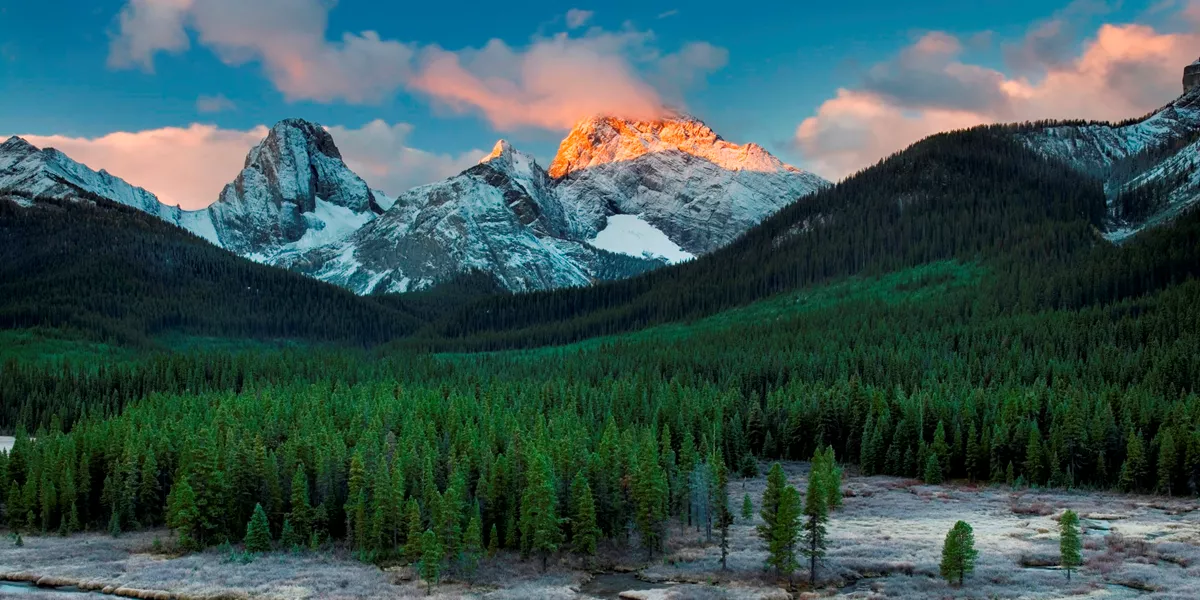
Take in the spectacular Rocky Mountains as you embark on a 8-Day Guided Tour of Western Canada.
Take a spectacular guided tour to the Rocky Mountains and witness Alberta’s breath-taking wilderness. Discover the natural wonders of Banff National Park, the grand Columbia Icefield as well as the Jasper National Park. Glorious views, beautiful scenery, warm hospitality, and outstanding activities ensure a sensational trip to one of the most beautiful corners of the world.
View Itinerary
Low deposit from $200
Deposit protection
Free booking changes
MAP & ITINERARY
Start Calgary, Canada. End Calgary, Canada.
Download Itinerary
Print Itinerary
EXPAND ALL DAYS
Why not extend your journey by boarding the Rocky Mountaineer?
Change view
Selected Version
Tours that average 33 guests and no more than 40.
Small Group
This tour version has a maximum of 24 guests.
With Rocky Mountaineer Silverleaf Service Classic Group
This tour version spends an additional night aboard the Rocky Mountaineer with SilverLeaf Service and has a maximum of 40 guests.
With Rocky Mountaineer Silverleaf Service Small Group
This tour version spends an additional night aboard the Rocky Mountaineer with SilverLeaf Service and has a maximum of 24 guests.
SHOW ALL VERSIONS
TRAVELLING IN A GROUP OF 10+?
Customize this tour for a group >
Our specialists can design a bespoke itinerary for you. You'll experience the Insight Difference with a passionate Travel Director, all tailored to your group's personal interests.
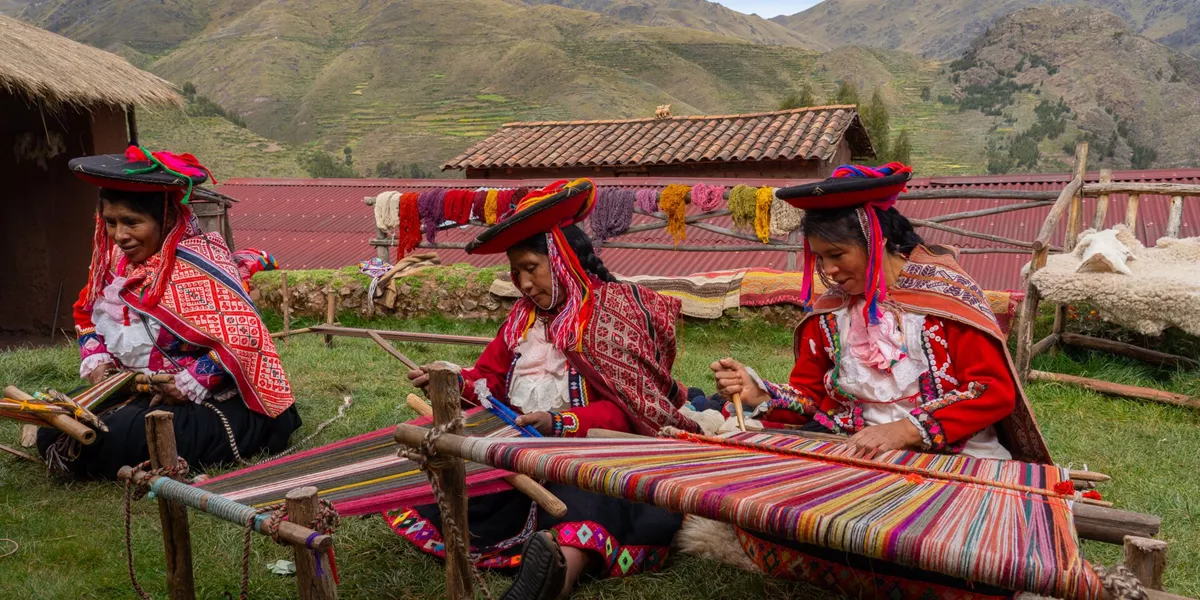
MAKE TRAVEL MATTER® Experiences
Every one of our tours includes at least one conscious travel experience that supports one or more or the United Nations Sustainable Development Goals (SDGS). Look out for yours within the day-by-day trip itinerary.
Find out more
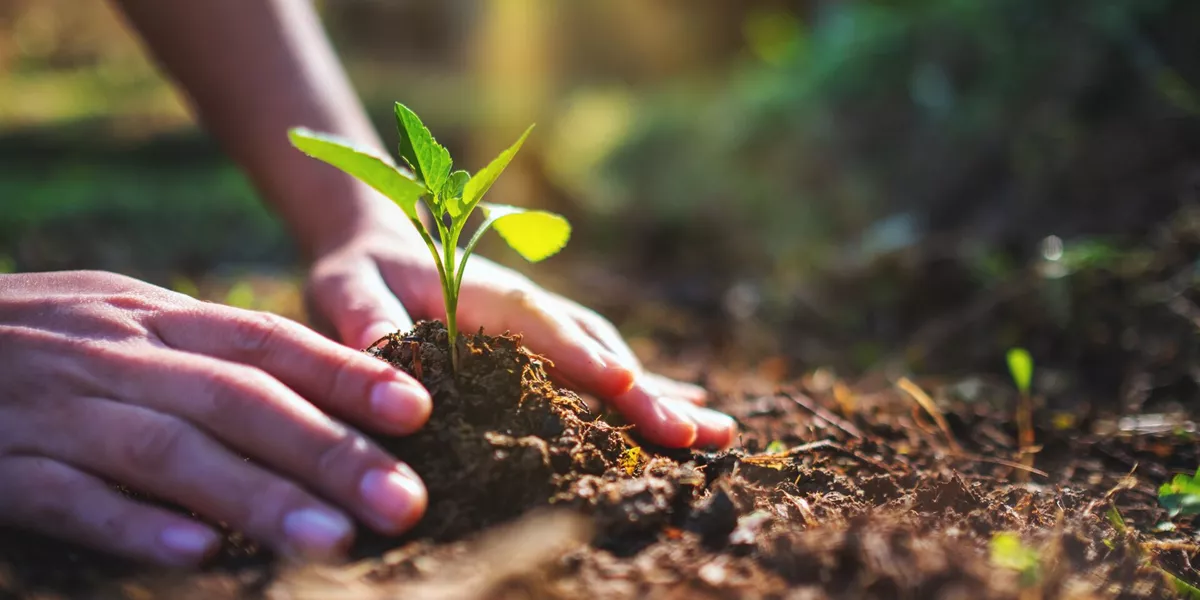
Net-zero by 2050
Travel knowing our 4-point climate action plan will ensure net-zero greenhouse gas emissions by 2050.
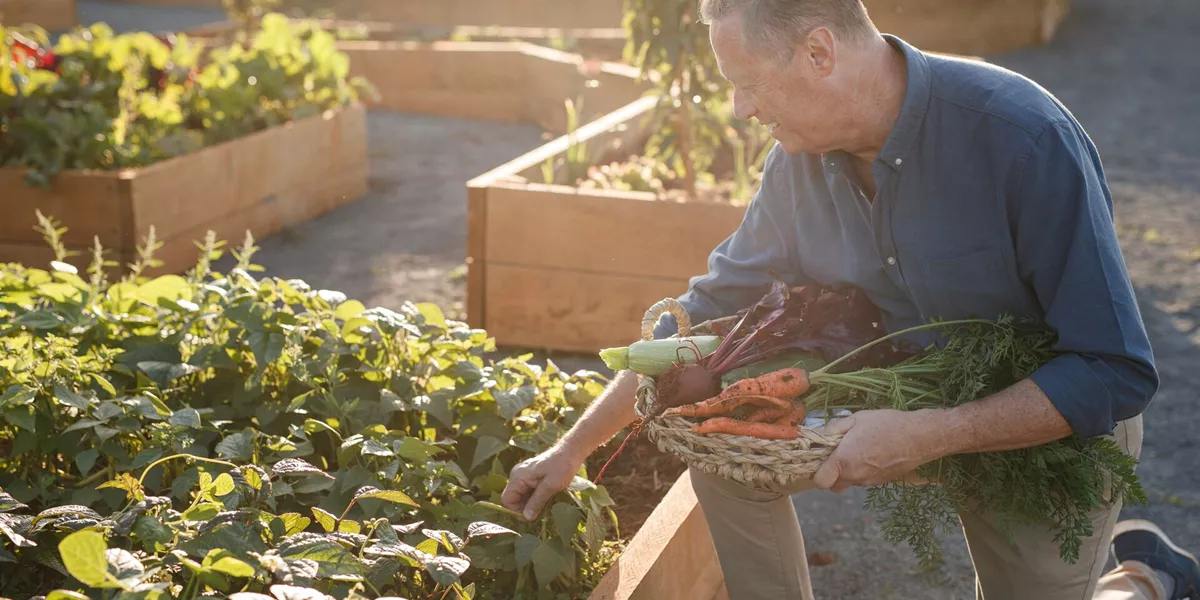
Support Local
Your tour directly supports local communities by visiting family-run businesses, UNESCO sites and places of cultural significance.
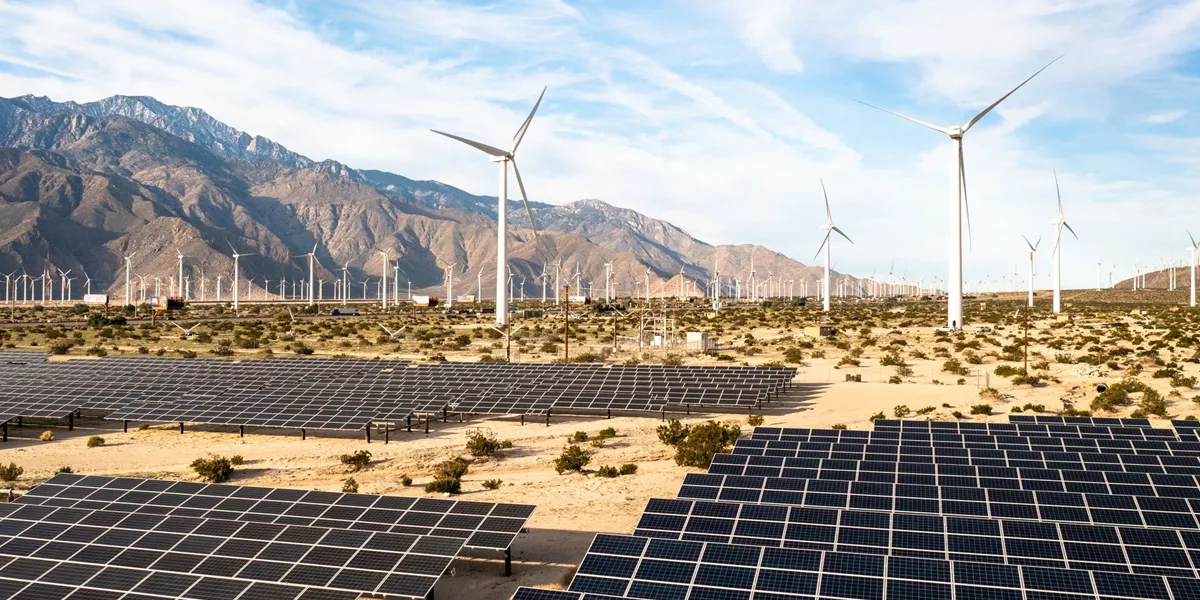
Sustainable Practices
Every part of our business, from trip design to how we run our offices, aligns to our 5-year sustainability strategy which ensures a positive impact on people, the planet and wildlife.
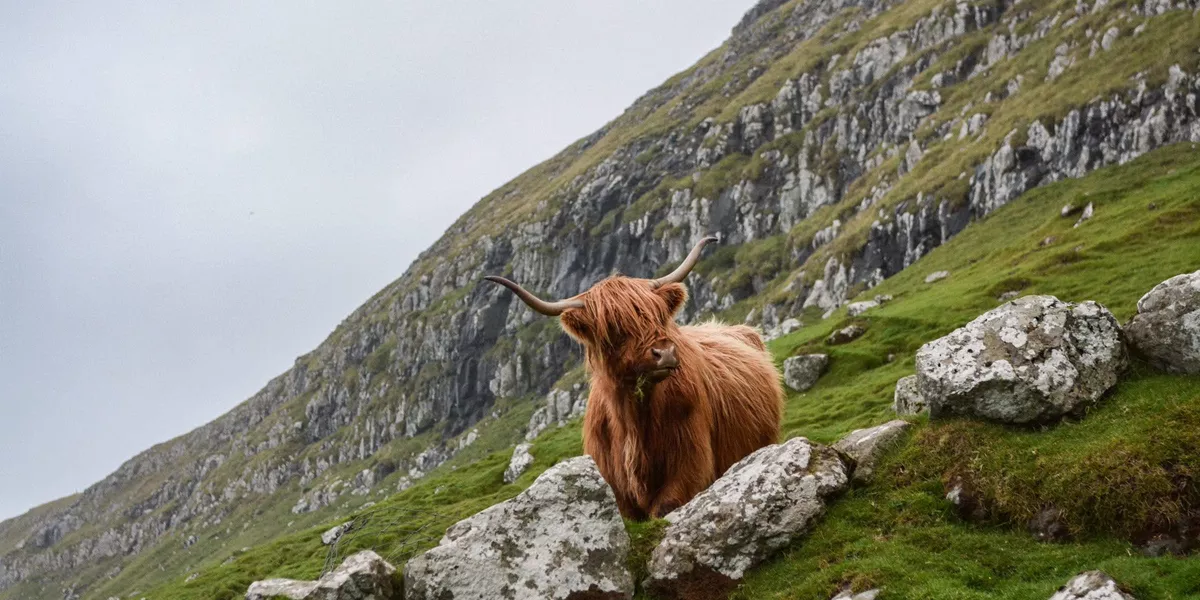
Philanthropic Efforts
Our not-for-profit, the TreadRight Foundation, invests in nature-based solutions to address climate change.
You’ll make a positive impact to people, planet and wildlife on this tour
SEARCH FOR ANOTHER TOUR
#insightvacations.
Discover Inspiring, Magical Moments Captured by Our Guests in Destinations Around the World
EXPLORE WITH INSIGHT
UK and Ireland
USA and Canada
Latin America
North Africa
TOUR STYLES
Discovery Journeys
Regional Journeys
Country Roads
Special Interest Tours
Get A Quote
Request A Brochure
Travel Insurance
The Insightful Blog
Privacy Policy
Booking Conditions
Tour Deposit Level
Travel Updates
My Personal Information
Selected Region
United States
United Kingdom
New Zealand
South Africa
© Insight Vacations 2024. All Rights Reserved. TICO 50015871 / 1873715
Cookie Policy
Canadian Rockies
The Canadian Rocky Mountains, a magnificent natural wonder, are a spectacular mountain range located in western Canada. This UNESCO World Heritage Site contains high mountain peaks, stunning landscapes, and a wide array of flora and fauna. The Rockies are not only an ideal destination for nature enthusiasts but also offer plenty of recreational activities for visitors of all ages.
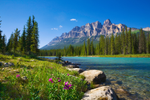
Table of contents
Geographical overview, national parks and protected areas in the rocky mountains, best ways to see canada's rocky mountains, best time to visit canadian rockies by activities, activities in the canadian rocky mountains, explore canadian rockies through train, frequently asked questions, location and elevation .
The Canadian Rocky Mountains stretch from British Columbia to Alberta, forming the western portion of the North American Rocky Mountains. This sprawling range is bounded by the Canadian Prairies to the east, the Rocky Mountain Trench to the west, the Liard River to the north, and the Mackenzie Mountains to the northwest. The highest peak, Mount Robson, reaches an impressive elevation of 12,972 feet (3,954 meters), captivating adventurers with its grandeur.
Geology and Climate
The Canadian Rockies have a distinct appearance and geology compared to their American counterparts. Composed primarily of sedimentary rock, such as limestone and shale, these mountains were shaped over millions of years by glaciation. The retreat of glaciers sculpted the landscape, resulting in rugged peaks, deep valleys, and picturesque U-shaped valleys.
Flora and Fauna
The Canadian Rockies boast a rich diversity of flora and fauna. In these pristine ecosystems, visitors can spot a variety of wildlife species, including elk, bighorn sheep, deer, bears, coyotes, wolves, and moose. The Discover Banff and Its Wildlife tour is a popular activity for observing these incredible creatures in their natural habitat. The region is also home to vibrant vegetation, ranging from alpine meadows adorned with wildflowers to subalpine and montane forests filled with conifers and deciduous trees.
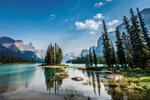
The Canadian Rockies are blessed with several national parks and protected areas, each offering unique experiences and breathtaking scenery.
- Banff National Park , Canada's oldest national park, is renowned for its turquoise lakes, glaciers, and iconic landmarks like Lake Louise and Moraine Lake.
- Jasper National Park , the largest national park in the Canadian Rockies, captivates visitors with its stunning vistas, cascading waterfalls, and abundant wildlife.
- Yoho National Park boasts dramatic mountain peaks, picturesque lakes, and the world-famous Burgess Shale fossil beds.
- Kootenay National Park , located between Banff and Yoho, offers serene hot springs, beautiful hiking trails, and stunning river valleys.
- Waterton Lakes National Park , a designated Biosphere Reserve, entices visitors with its towering mountains, crystal-clear lakes, and diverse ecosystems.
- Additionally, the Canadian Rockies are dotted with numerous provincial parks, such as Mount Assiniboine Provincial Park and Peter Lougheed Provincial Park, each showcasing unique natural features.
To truly appreciate the grandeur of the Canadian Rockies, there are several recommended ways to explore this stunning region:
- One of the best ways to explore the Canadian Rockies is on a train vacation. The Rocky Mountaineer , a luxury daylight sightseeing train, connects Alberta to British Columbia and passes through some of the most scenic parts of the Rockies. Another option is the VIA Rail sleeper train which travels between Jasper and Vancouver, offering unique views of some iconic sights.
- Another option is a scenic drive, such as the Icefields Parkway, which connects Banff and Jasper National Parks and offers breathtaking views of glaciers, mountains, and waterfalls.
- Whether on a train or road trip, do spend time on the region’s hiking trails. These range from easy walks to challenging multi-day treks, allowing you to immerse yourself in the pristine wilderness.
- For a unique perspective, consider taking a helicopter or gondola ride to witness the mountain vistas from above.
- Do make time for outdoor activities like wildlife viewing, paddling, fishing, mountain biking, and horseback riding, all of which contribute to an unforgettable Rocky Mountain experience.
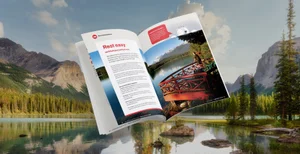
Download our Brochures and Mini Guides
Summer (june to august):.
Summer is peak tourist season in the Canadian Rockies. The weather is generally pleasant, with daytime temperatures ranging between 15°C to 25°C (59°F to 77°F) — ideal for outdoor activities like hiking, biking, wildlife viewing, and exploring the national parks. The days are long, allowing for more daylight hours to explore and enjoy the natural beauty. However, popular tourist spots can get crowded during this time, so it's advisable to book accommodations and attractions in advance.
Fall (September to October):
Fall in the Canadian Rockies brings stunning colours as the foliage turns into vibrant hues of yellow, orange, and red. The temperatures start to cool down — from 5°C to 15°C (41°F to 59°F) — and the crowds begin to thin in comparison to the summer months. This is a fantastic time for photography, as the landscapes transform into a breathtaking display of autumn colors. It's also a great time for hiking, wildlife spotting, and enjoying the peacefulness of the region.
[Explore: Sceneic Fall Train Rides in Canada ]
Winter (November to March):
Winter in the Canadian Rockies is a magical time, especially for winter sports enthusiasts. The region receives abundant snowfall, creating excellent conditions for skiing, snowboarding, snowshoeing, and ice climbing. Temperatures can drop significantly, ranging from -15°C to -5°C (5°F to 23°F). Popular ski resorts like Banff and Jasper come alive with winter activities and festive events. It's important to note that some attractions and roads may have limited accessibility during this time, so it's essential to plan accordingly.
Spring (April to May):
Spring in the Canadian Rockies is a transitional season marked by melting snow, emerging wildlife, and blooming wildflowers. The temperatures gradually rise, ranging from 5°C to 15°C (41°F to 59°F), and the days become longer. Spring is a quieter time to visit, with fewer tourists compared to the summer months. It's a great time for hiking, as lower elevations start to become accessible, and the landscapes offer a mix of winter and spring scenery. However, it's important to check trail conditions and road closures, as some areas may still be affected by snow.
Ultimately, the best time to visit the Canadian Rockies depends on your interests and preferences. If you enjoy outdoor activities and want to experience the region at its liveliest, summer is an excellent choice. If you prefer fewer crowds and stunning fall colors, then autumn may be more suitable. For winter sports enthusiasts, the snowy months offer unparalleled opportunities. Spring provides a quieter and more transitional experience, with emerging wildlife and changing landscapes.
With careful planning, you can have memorable experience in the Canadian Rockies, regardless of the time you choose to visit.
Download a brochure
Get inspired with sample itineraries, train information, route maps, and travel advice from our local experts.
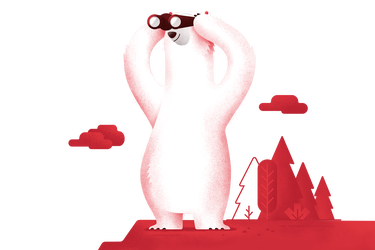
The Canadian Rocky Mountains offer an abundance of activities for adventurers and nature enthusiasts. Whether you're seeking thrilling experiences or tranquil moments surrounded by stunning landscapes, the Rockies have something for everyone. Here are some of the top activities to enjoy in this awe-inspiring region:
1. Hiking and Backpacking:
The parks in the Rocky Mountains are home to many hiking trails, ranging from easy strolls to challenging multi-day treks. Lace up your boots and explore the breathtaking scenery, pristine alpine meadows, and majestic peaks. Popular trails include the Lake Agnes Tea House in Banff, the Skyline Trail in Jasper, and the Iceline Trail in Yoho National Park.
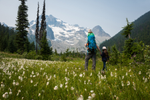
2. Wildlife Viewing:
The Rockies are home to a diverse array of wildlife, providing excellent opportunities for wildlife viewing and photography. Keep your eyes peeled for elk, b ighorn sheep, moose, bears, and a variety of bird species. Join a guided tour for your best — and safest — chances to spot wildlife in its natural habitat.
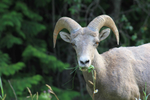
# 1 Travel tip: Choose Spring for best wildlife viewing
While you have the chance to see wildlife in most seasons, Spring is an especially good time for seeing bears emerging from hibernation and migrating birds.

3. Scenic Drives:

4. Wildlife Tours:
For an in-depth wildlife experience, consider joining guided wildlife tours led by knowledgeable local experts. These tours take you to prime wildlife viewing areas and provide insights into the behavior and habitats of the region's iconic animals.

5. Rafting and Kayaking:
Take to the rivers and experience the thrill of rafting or kayaking through the stunning Rocky Mountain landscapes. Both the Athabasca River in Jasper and t he Kicking Horse River in Golden, British Columbia are renowned for their exhilarating white-water rafting experiences suitable for both beginners and experienced adventurers.

6. Horseback Riding :
Embrace the cowboy spirit and explore the Rockies on horseback. Guided horseback riding tours allow you to meander through picturesque valleys, forests, and alpine meadows while enjoying panoramic views of the surrounding mountains.
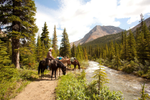
7. Mountain Biking:
With an extensive network of trails, the Rocky Mountains offer fantastic mountain biking opportunities. From leisurely rides through scenic valleys to challenging single track routes, cyclists of all levels can find their perfect adventure.
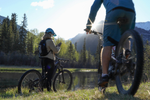
8. Fishing:
Cast your line into crystal-clear mountain streams and pristine lakes and indulge in the tranquility of fishing in the Rockies. Whether you're a seasoned angler or a beginner, the region's waterways teem with trout and other fish species, providing a rewarding angling experience.

9. Camping:
Immerse yourself in the natural beauty of the Rockies by camping in one of the region's numerous campgrounds. Wake up to breathtaking views, enjoy star-filled nights, and bond with nature in this idyllic setting.

10. Photography:
Capture the awe-inspiring landscapes of the Canadian Rockies through your lens. From stunning mountain peaks to shimmering lakes and vibrant wildflowers, the Rockies provide endless opportunities for photographers to capture the beauty of these natural wonders.

#2 Travel tip: See it all from above
An helicopter tour is an incredible way to take in the scenery of the Rockies. Plus, like the train, you'll see areas not accessible by car. Some helicopter tours include a picnic lunch in a remote location — or even a champagne toast!

11. Winter Activities:
During the winter months, the Canadian Rockies transform into a winter wonderland. Engage in thrilling activities such as downhill skiing, snowboarding, snowshoeing, and ice climbing. Explore world-class ski resorts, including Banff Sunshine Village, Lake Louise Ski Resort, and Marmot Basin in Jasper.
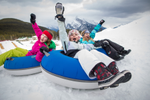
12. Wildlife Conservation Experiences:
For those interested in wildlife conservation and education, the Rockies offer opportunities to participate in programs focused on environmental sustainability, wildlife research, and habitat restoration. These experiences allow you to contribute to the preservation of this pristine natural environment.

Complete Canadian Rockies by Rail
This best-selling trip includes both Banff and Jasper National Parks. You’ll explore the Canadian Rockies over an exciting eight-day itinerary, full of popular activities and key highlights. Enjoy both Rocky Mountaineer train journey to Jasper and a sightseeing drive along the Icefields Parkway to Lake Louise.
Miles on train: 559 Miles
Days on train: 2
Train Stops: Vancouver, Kamloops, and Jasper
Canadian Rockies Voyage by Train
This popular six-day itinerary is packed with impressive mountain views and bucket-list activities. Experience an overnight train journey on VIA’s Canadian train and a drive along the Icefields Parkway, as well as exploring the towns of Banff and Jasper, and the oceanside city of Vancouver.
Miles on train : 332 Miles
Days on train :1
Night on train : 1
Train Stops : Vancouver and Jasper
Essential Rockies by Train
See the highlights of the Canadian Rockies on this six-day trip. Experience the Rocky Mountaineer daylight train journey between Vancouver and Lake Louise. Get that keepsake photo of the iconic turquoise waters before exploring Banff National Park and the charming mountain town of Banff.
Miles on train: 594 Miles
Stops: Vancouver, Kamloops, Banff and Lake Louise
Why Canadian Train Vacations?
At Canadian Train Vacations we believe everybody deserves an unforgettable Canadian experience. We create vacations for independent travellers, providing sample itineraries as a starting point and then personalizing them to match their unique interests and needs. With our high level of customer service and support, you can trust our local experts to guide you from booking through travel, ensuring a seamless and unforgettable experience. From coast to coast, we hand-pick suppliers who offer authentic Canadian experiences.

Keep reading or chat with one of our local travel experts. We’re passionate about Canada and can help you at any stage of your vacation planning.
Where are the Canadian Rocky Mountains located?
The Canadian Rocky Mountains are located in western Canada, primarily spanning the provinces of British Columbia and Alberta.
Where do the Canadian Rocky Mountains start and end?
The Canadian Rocky Mountains start in the northern part of British Columbia and extend southward into Alberta, reaching the border with the United States.
Why are the Rocky Mountains important to Canada?
The Rocky Mountains are of significant importance to Canada due to their ecological value, biodiversity, and role in the water cycle. They provide habitat for numerous plant and animal species and act as a water catchment area, supplying freshwater to rivers and lakes that support ecosystems and communities downstream.
What are the Canadian Rocky Mountains known for?
The Canadian Rocky Mountains are renowned for their majestic beauty, featuring towering mountain peaks, picturesque lakes, dramatic glaciers, and diverse ecosystems. They are also famous for their outdoor recreational opportunities, wildlife viewing, and stunning scenic drives.
How old are the Canadian Rocky Mountains?
The Canadian Rocky Mountains began forming around 80 million years ago during the Cretaceous Period. The process of mountain building and erosion continued over millions of years, resulting in the diverse landscapes we see today.
What formed the Canadian Rocky Mountains?
The Canadian Rocky Mountains were formed through the process of tectonic plate movements and the collision of the North American and Pacific plates. This geological activity caused uplift, folding, and faulting of the Earth's crust, leading to the creation of the mountain range.
What type of mountains are the Canadian Rocky Mountains?
The Canadian Rocky Mountains are primarily composed of sedimentary rock, including limestone, shale, and sandstone, which were deposited over millions of years.
What is the highest mountain in the Canadian Rocky Mountains?
The highest mountain in the Canadian Rocky Mountains is Mount Robson, located in British Columbia, with an elevation of 12,972 feet (3,954 meters). The Canadian Rocky Mountains include several peaks that exceed 10,000 feet (3,000 meters) in elevation.
What is the average temperature in the Canadian Rocky Mountains?
The average temperature in the Canadian Rocky Mountains varies depending on the season and elevation. Summers are generally mild, with average temperatures ranging from 60°F to 75°F (15°C to 24°C). Winters can be cold, with daily highs averaging from 20°F to 40°F (-7°C to 4°C) but can drop even lower at higher elevations.
What activities can you do in the Rocky Mountains?
The Canadian Rocky Mountains offer a wide range of activities for outdoor enthusiasts, including hiking, camping, fishing, wildlife viewing, scenic drives, photography, skiing, snowboarding, snowshoeing, ice climbing, and exploring the national parks and protected areas.
What plants live in the Canadian Rocky Mountains?
The Canadian Rocky Mountains are home to a variety of plant species, including alpine flowers like columbines, wild roses, and paintbrushes. Coniferous trees such as spruces, firs, and pines dominate the higher elevations, while lower elevations feature a mix of deciduous trees like aspen and birch, along with conifers.
What is special about the Canadian Rocky Mountains?
The Canadian Rocky Mountains are special due to their awe-inspiring landscapes, pristine wilderness, and rich biodiversity. They offer unparalleled opportunities to experience the grandeur of nature, from breathtaking vistas to encounters with iconic wildlife. The Rockies are also significant for their cultural and historical importance to indigenous peoples and the early exploration and settlement of western Canada.
When is Canadian Rocky Mountain National Park open?
There are several national parks in the Canadian Rockies, including Banff National Park and Jasper National Park. All the parks in the Canadian Rockies are generally open year-round but certain areas and facilities may have seasonal closures or limited access during winter due to snow and hazardous conditions. Check the specific park's website or contact Parks Canada for up-to-date information on park hours and accessibility.
About the author: Athena McKenzie is the Content Manager at Fresh Tracks Canada. An experienced lifestyle journalist, she has written about travel, design, arts and entertainment. Her work has appeared in The Globe and Mail, Toronto Star, Zoomer Magazine, Elle Canada and... Read more
Explore More Tours
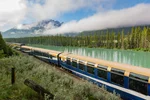
Discuss your Canadian train vacation with a local travel expert
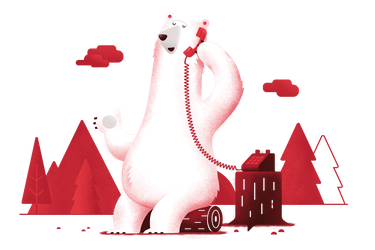
Or call us toll free
Current promotions
Sign up for special offers, monthly Canadian Insider tips, and vacation inspiration.
- United States
- New Zealand
15 Must-Do Experiences in the Canadian Rocky Mountains
By The Canada By Design Team
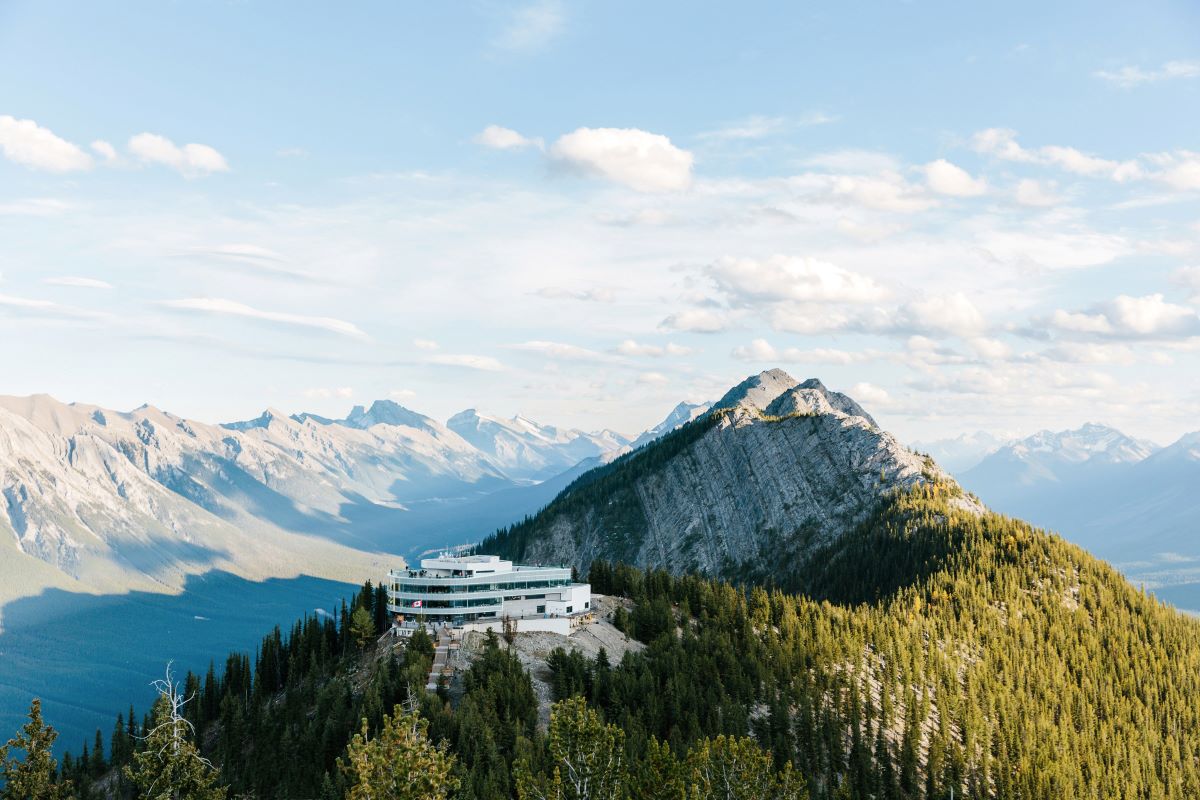
If you've been following our blog, you know we published an article on 15 must-do experiences in Atlantic Canada . Swerving way over to the west (and more specifically, Alberta), we've decided to do the same for one of our most popular destinations: the Canadian Rocky Mountains.
Home to the small alpine towns of Jasper , Banff and Lake Louise and surrounded by the magnificent scenery of towering peaks, turquoise lakes, endless forests and unique wildlife, this is a landscape suited to a lot of different activities. Here we outline the 15 must-do experiences in the Canadian Rocky Mountains, as suggested by our Canada travel specialists.
Psst, did you know most of our Canadian Rocky Mountain packages include your choice of tours so you can personalize your trip without affecting the overall cost? Start browsing our packages here and watch for 'Freedom of Choice' options listed within the itinerary.
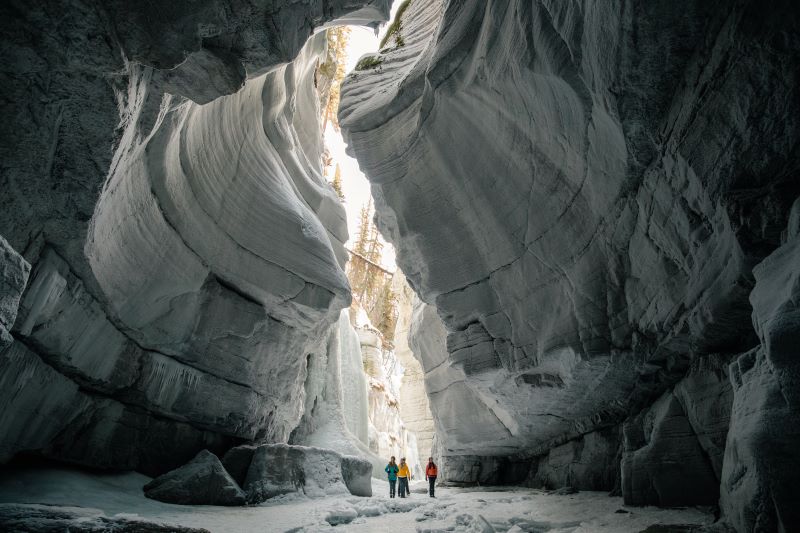
1. Explore Maligne Canyon
The deepest canyon in the Rockies with a depth of more than 165 feet at certain points, Jasper National Park's Maligne Canyon offers endless exploration. Hikers of all ages and abilities can follow a series of pathways and six bridges built to offer astounding views of the canyon's walls, floor and even waterfalls. In the winter, visitors have another totally unique experience by strapping on special shoes and taking an ice walk along the canyon floor to explore ice caves, fossils and towering frozen waterfalls stretching 100 feet above. If you found you've worked up an appetite, stop by Maligne Canyon Wilderness Kitchen for a snack, hot beverage or full-fledged meal.
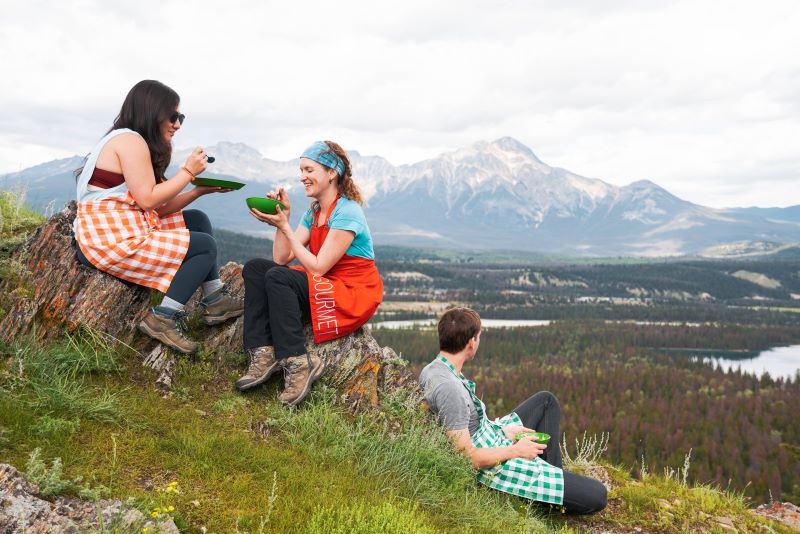
2. Take a Food Tour
A favorite for our team whenever they visit the Jasper area, Jasper Food Tours offers four plates and four drinks in one awesome storytelling walking tour. On the Downtown Foodie Tour, an approximate one-mile walk takes you to local restaurants while listening to Jasper's top tales as you go, whereas on the Peak-Nic tour, you can combine a 2.5-mile hike, a meal and a backcountry cooking lesson at the top of a stunning peak. Other tour options and combinations are also available, such as a combined wildlife watching and foodie tour, Icewak and foodie tour, Gastrodisiac Valentine's Day tour or Dinner in the Dark, a Dark Sky Festival event.

3. Ride Out to a Glacier
The Columbia Icefield is the largest ice field in North America's Rocky Mountains, covering some 89 square miles to a depth of 1,200 feet and stretching some 17 miles long. What's even cooler than that, is you can take a ride out to visit it. With Pursuit, you'll travel aboard a massive all-terrain vehicle called an Ice Explorer to reach the Athabasca Glacier, a 10,000 year-old sheet of ice. Walk on the glacier, feel the ice and even drink some of its pure, melted water before continuing to experience the Glacier Skywalk (read on).

4. Experience the Glacier Skywalk
Protruding from the cliffs of the Sunwapta Valley and hanging 918 feet above the valley floor, the Columbia Icefield Skywalk experience features fossils, waterfall views and incredible glacier landscapes along an interpretive walkway. Gazing out from the transparent glass surface, you can spot the Northface Glacier, Mount Athabasca, AA Glacier, Mount Andromedia and the Andromedia Glacier in one direction, and Mount Kitchener, the Columbia Icefield, Mount Woolley, Diadem Peak and Mushroom Peak in the other.

5. Take a Wildlife Tour
On the Discover Banff & Its Wildlife tour , uncover the secrets of a historic mountain haven with a local guide leading the way. Gaze at stunning views like Bow Falls, Surprise Corner Lookout, Hoodoos Viewpoint and Lake Minnewanka, plus visit Banff's key landmarks like the Fairmont Banff Springs Hotel. Along the way, keep an eye out for local wildlife like elk, bighorn sheep, deer, bear, coyotes, wolves and moose. Our team has been lucky enough to see nearly all of the aforementioned animals, and with Banff National Park home to over 311 species of birds and 53 species of mammals, chances are you will be too!

6. Ride the Banff Gondola
Maximize your views of Banff National Park with minimal exertion on a round-trip gondola ride to the top of Sulphur Mountain. At the peak, you'll find sweeping views of six mountain ranges, the Bow Valley and the town of Banff, plus have access to the discovery center and Sky Bistro, a restaurant with fresh and locally-sourced menus that can fuel you up for a hike or help you wind down as you watch the sun set behind the Rockies. In October, Nightrise also returns to the Banff Gondola showcasing four digital art installations. Vibrant lighting, multimedia effects, video projections and music bring the summit to life in a new and unexpected way.
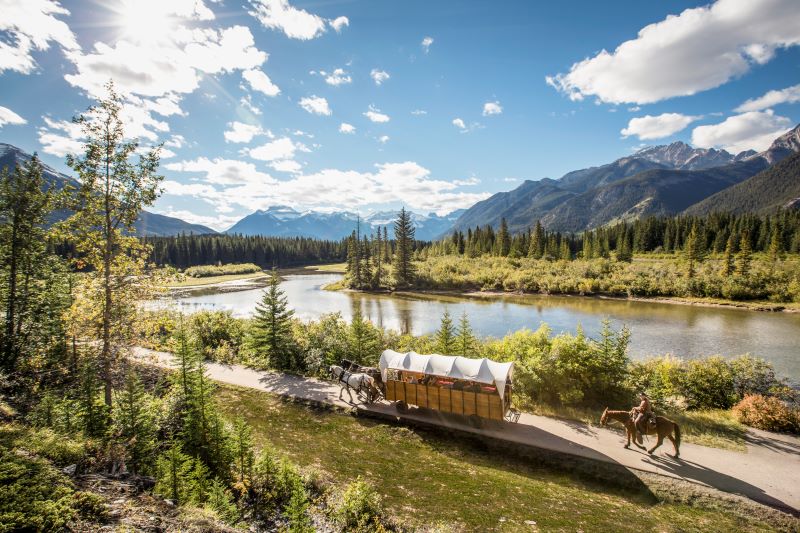
7. Attend a Cowboy Cookout
Either riding by horseback or in a wagon (you pick!), watch for wildlife and enjoy spectacular scenery as you travel along the base of Sulphur Mountain and the beautiful Bow River. At the midway point you'll arrive at 3 Mile Cabin where you'll have a chance to enjoy genuine western hospitality and either a lunch or dinner of delicious BBQ. Enjoy western-style games like lassoing and horseshoes, plus chat with your guides and spend time getting to know the horses. A basic horseback riding instruction is included as part of the tour, but those who aren't comfortable can easily take the relaxing wagon ride and rejoin the group for the meal.
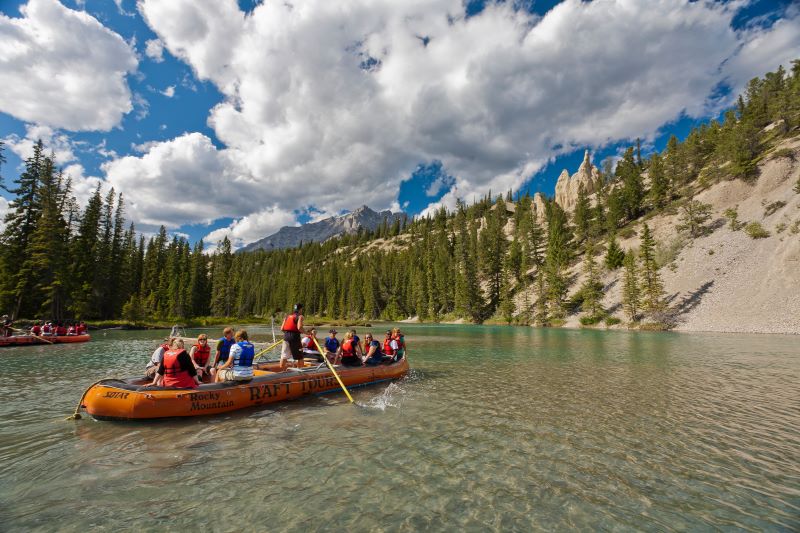
8. Embark on a River Float
Enjoy a gentle rafting tour on the Athabasca River for a unique perspective of Jasper National Park. The Athabasca River is the same route that was used by the fur traders many years ago, and your National Park licensed guide will point out the natural and human history of Jasper as you float. Though there are small rapids in some sections, most of the river is calm, and the specially designed oar powered rafts provide a safe and comfortable ride so guests can relax while guides do all the paddling. Don't forget to keep your eyes open for wildlife along the shore—there are often sightings of elk, deer and eagles and sometimes even coyotes, moose, wolves and bears!
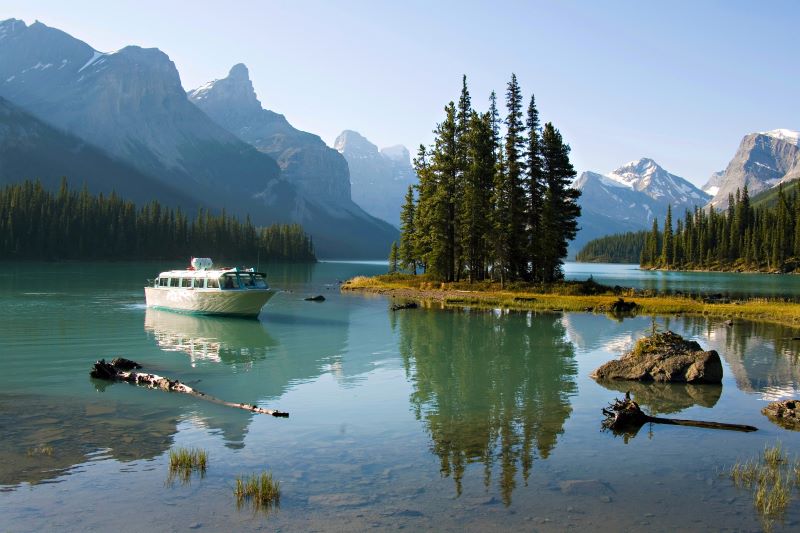
9. Take a Lake Cruise
Admire views of the Canadian Rockies by boat as you cruise across the turquoise-hued Lake Minnewanka or Maligne Lake . Feel the fresh mountain air, watch for wildlife and enjoy the incredible space and nature of Banff and Jasper National Parks. Running from May or June to October, you'll explore under the lead of a knowledgeable guide on a heated, covered boat and at Maligne Lake, have a chance to marvel at the magnificent shoreline and Spirit Island . Only accessible by boat, you'll recognize this island as the postcard-perfect image of the Canadian Rocky Mountains as it's one of the most photographed places in Canada.

10. Head out for a Paddle
Enjoy the serenity of the Bow River and marvel at your surroundings as you journey upstream on a guided canoe tour . While you paddle, friendly and professional guides will entertain you with stories of the past, share the history of canoeing and provide interesting local facts. Perfect for the whole family, no previous paddling experience is necessary and it's a fun and interactive way to explore the beautiful waterways of Banff National Park. Of course, should you prefer to paddle at your own pace, canoe rentals are available at many lakes throughout the Rockies, including the iconic and incredibly photogenic Lake Louise!
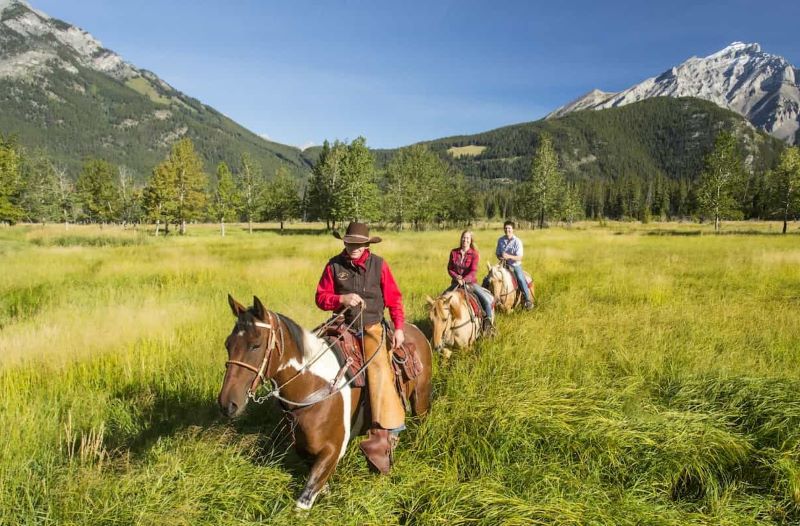
11. Go for a Horseback Ride
Home to sun-kissed peaks, rugged beauty and miles of winding trails just waiting to be explored, Banff National Park is the perfect outdoor playground to embrace your inner cowboy and saddle up for a horseback ride . Relax and unwind atop a trusted steed as your guides lead you through the gorgeous scenery of majestic mountains, emerald green lakes, lush forest and local wildlife. Designed to give you a taste of what the original settlers experienced more than 200 years ago, this option is ideal for riders of all ages and experience levels, as you don't need to have prior experience to enjoy it.

12. Enjoy a Nature Walk or Hike
Perhaps one of the easiest ways to take in the scenery of the Canadian Rocky Mountains is with a simple nature walk featuring a spectacular array of rolling hills, jagged peaks, forests, meadows, marshes, streams, and stunning glacial lakes. Guided walks are always available should you feel wary about navigating the wilderness on your own, and Discover Banff Tours also offers a number of signature hikes. Whether you want to see Stanley Glacier, Consolation Lakes, Plain of Six Glaciers or Larch Valley, hikes range from easy to moderate in difficulty rating and include an alpine picnic lunch.

13. Take a Motorcycle Tour
Jasper Motorcycle Tours offers sidecar tours in the great Canadian Rockies on legendary Harley Davidson motorcycles. Driven by professional riders, you can soak up the scenery from a comfortable sidecar for one, two or three hours and have the option to explore the Athabasca Valley and Athabasca Falls, Maligne Canyon and Medicine Lake, Mount Edith Cavell and even Miette Hot Springs where you can take a dip in the springs. Rides are available daily from April to October and include the best riding apparel the company has to offer. Just be sure to wear long pants and sturdy footwear—the rest is taken care of!

14. Drive the Icefields Parkway
No matter the time of year, the Icefields Parkway in the Canadian Rocky Mountains is an incredible sight to see. Rated as one of the top drives in the world by Condé Nast Traveller, the Icefield Parkway is a 144-mile stretch of double-lane highway winding along the Continental Divide and featuring more than 100 ancient glaciers, cascading waterfalls, dramatic rock spires and emerald lakes. We often recommend guests take their time along the highway as there is so much to see and so many points where you'll want to pull over and take photos of the surrounds. In the summer, feel at ease driving the parkway in your own vehicle or in winter, take a transfer and have a guide reveal the best sights.

15. Stay with Fairmont
An experience of their own, the Fairmont Hotels in the Canadian Rockies should be strongly considered when booking your trip. If not all, book one to treat yourself to the best accommodation in the mountains, be it the Fairmont Jasper Park Lodge , the Fairmont Chateau Lake Louise or the Fairmont Banff Springs Hotel . All properties boast incredible structures (in Jasper it's a village of heritage log cabins whereas in Banff it's considered Canada's 'Castle in the Rockies') plus gourmet restaurants, luxurious spas, knowledgeable staff and endless activities. In summer, try golfing at the Fairmont Banff Springs Golf Course, or in winter book a sleigh ride outside the Fairmont Chateau Lake Louise. There's always something for everyone to enjoy by day, and comfortable, lavish rooms to return to by night.
Feeling inspired? Chat with one of our Travel Designers to create a custom trip or visit our Time to Travel page for summer trip ideas and License to Chill page for winter. Prefer to simply stay in touch? Subscribe to our newsletter for up-to-date deals, trip ideas and more!
Please send travel info including and train excursions
Missy , 01/29/2024
Submit your comments
Thank you. Your comment has been submitted for moderation.
This site is protected by reCAPTCHA and the Google Privacy Policy and Terms of Service apply.
Speak to a Travel Designer
Call +1 604 639 9868 World or Email us
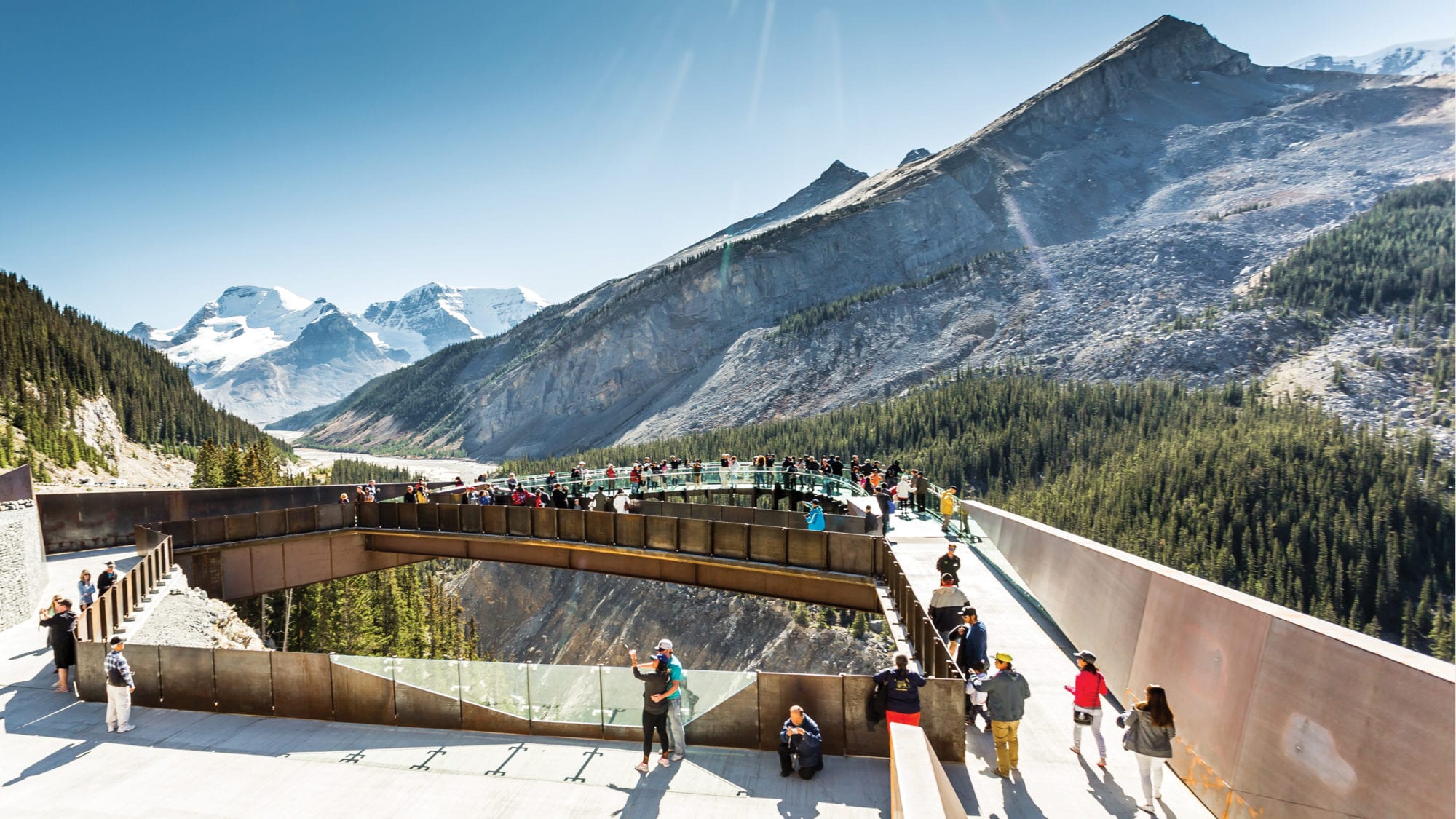
The Ultimate Guide to the Rocky Mountains
Whether you’ve driven through the Rocky Mountains once or a thousand times, the scenery is always astonishing. Head west and watch the landscape transform from flat prairie to rolling foothills to giant peaks. The experience never gets old—and there’s always a new way to fall in love with the Rockies.
ROAD TRIP! Because the best way to see the Rockies is by car, with a few fun pit stops along the way. But remember to d ouble-check that your route is open before leaving. Some roads or attractions may still be closed
Hwy 93: Lake Louise to Jasper This is one of the most beautiful drives in the world. With hundreds of peaks and glaciers, stunning mountain lakes and powerful waterfalls, each turn presents more outstanding scenery than the last. Plan to pull over a lot. Along the 230-kilometre stretch of road, also called the Icefields Parkway, you’ll find the Columbia Icefield Discovery Centre, where you can tour the Athabasca Glacier. Farther north, walk out along the glass-bottomed Skywalk and gaze 280 metres down to the canyon floor. As you navigate the enormous hairpin turn aptly called the Big Bend, give a nod to the 600 men who first built the highway—mostly by hand—in the 1930s as a government make-work project.
Hwy 93A: in Jasper National Park Known to locals as the “old highway,” the stretch of 93A south of Jasper has fewer vehicles than Hwy 93, but offers the same jaw-dropping scenery. Once part of the original Banff/Jasper route, the meandering roadway begins about six kilometres south of Jasper and runs parallel to the Icefields Parkway until meeting up again with Hwy 93 near Athabasca Falls. Avid hikers often use the road to access gorgeous day hikes or overnight adventures at backcountry lodges. Though directions may not pop up on Google Maps, you’ll find loads of local signage pointing the way to top spots. But you don’t even have to get out of the car to enjoy this 30-kilometre detour down the old highway—gorgeous peaks and glaciers dot the route through Jasper National Park. Be sure to plan ahead though: Hwy 93A is closed from November to April.
Hwy 11: Rocky Mountain House to Saskatchewan Crossing It may be the road less travelled, but that doesn’t mean it’s any less magnificent. Heading west from the small town of Rocky Mountain House, you’ll marvel as the vista morphs from foothills to mountains. At Nordegg, a former mining town turned outdoor adventure hot spot, head out fishing or hiking for the day. A little farther west, pull over and unpack a picnic at Abraham Lake, a vast man-made lake filled with natural mountain-blue water. All along the 180-kilometre route, watch for bears, moose and other wildlife. At Saskatchewan Crossing, where the Mistaya and Howse rivers meet the North Saskatchewan, turn right to check out Jasper, or turn left to go to Lake Louise.
MORE TO READ Things to do in David Thompson Country
Hwy 1a: Bow Valley Parkway in Banff National Park While every route through the Rocky Mountains is scenic, this stunning 50-kilometre stretch between Banff and Lake Louise is off the charts. Take a few hours to meander down the Bow Valley Parkway or Hwy 1A, and pull over at some of the many scenic lookouts for a picnic, a photo op or a breath of crisp mountain air. Unlike the more travelled Trans-Canada Highway across the river, there are no wildlife fences on the 1A. So be on the lookout for animals while driving the parkway or walking among the aspen trees. You can also pedal the area: The eastern section of the highway (to Castle Junction) is currently closed to vehicles, perfect for exploring on two wheels. Check out the popular hike at Johnston Canyon or bask in the fall colours.
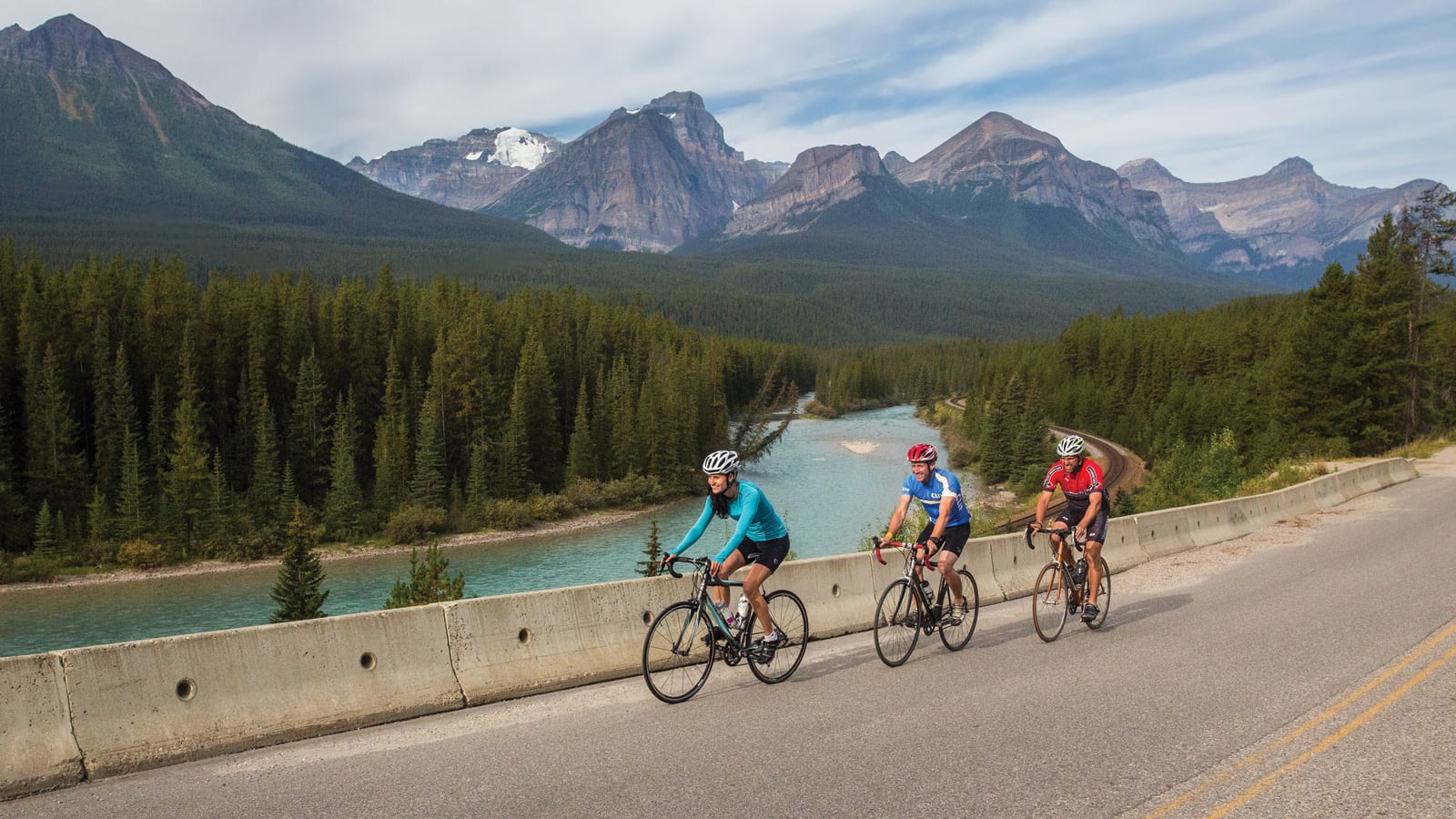
TCH Hwy 1: Lake Louise to Revelstoke This 230-kilometre route takes you through Canadian railway history, across thrilling mountain passes and into quirky towns. Keep an eye out for the Spiral Tunnels, which have enabled trains to navigate Kicking Horse Pass since 1909. Your first stop west of Lake Louise is the little town of Field, B.C., with its legendary Truffle Pigs bistro. Next, pop into Golden to hit up the museum—to learn about early explorers—or the art gallery to see pieces by local artisans. At the Rogers Pass Discovery Centre in Glacier National Park, learn how the railway was built through the mountains. And in Mount Revelstoke National Park, east of the town of Revelstoke, go for a stroll amidst ancient forest along the Giant Cedars Boardwalk.
Hwy 93/95: Cranbrook to Radium Hot Springs In British Columbia, this gentle 144-kilometre drive between the Rocky and Purcell mountains takes you past rushing rivers, long beautiful lakes, golf courses and plenty of bighorn sheep. From the outdoorsy town of Cranbrook, wind your way north to explore the Kimberley Nature Park, which boasts hiking adventures ranging from easy to very challenging. Farther on, hit the links, dip into the hot springs at Fairmont and Radium or walk the beaches of Lake Windermere. In the town of Invermere, peruse local boutiques before heading to Radium, just outside Kootenay National Park, to drive alongside remarkable cliffs. Slow down and look up to count the bighorn sheep. From Radium, you can go east to head back to Alberta or turn north toward Golden, B.C.
DRIVING TIPS 1 Before driving through the Rockies, make sure your vehicle is in tip-top shape. A breakdown could mean a long wait, due to accessibility challenges.
2 Fuel up before setting off so you have a full tank of gas or charge for your EV.
3 Keep your eyes on the road: You’ll still see jaw-dropping views as you safely drive around bends.
4 Take advantage of the frequent lookouts on many routes to pull over and gaze at the peaks.
5 The speed limit is lower in national parks due to abundant wildlife. Slow down, clear your windshield for visibility and scan both sides of the road for animals.
6 The biggest risk for hitting wildlife is from October to January, between 7 p.m. and 11 p.m. In Alberta, November is the peak month for wildlife-vehicle collisions and most of those collisions (80 percent) involve deer.
7 Ease up on the gas pedal and enjoy every kilometre of the Rockies’ glorious scenery.
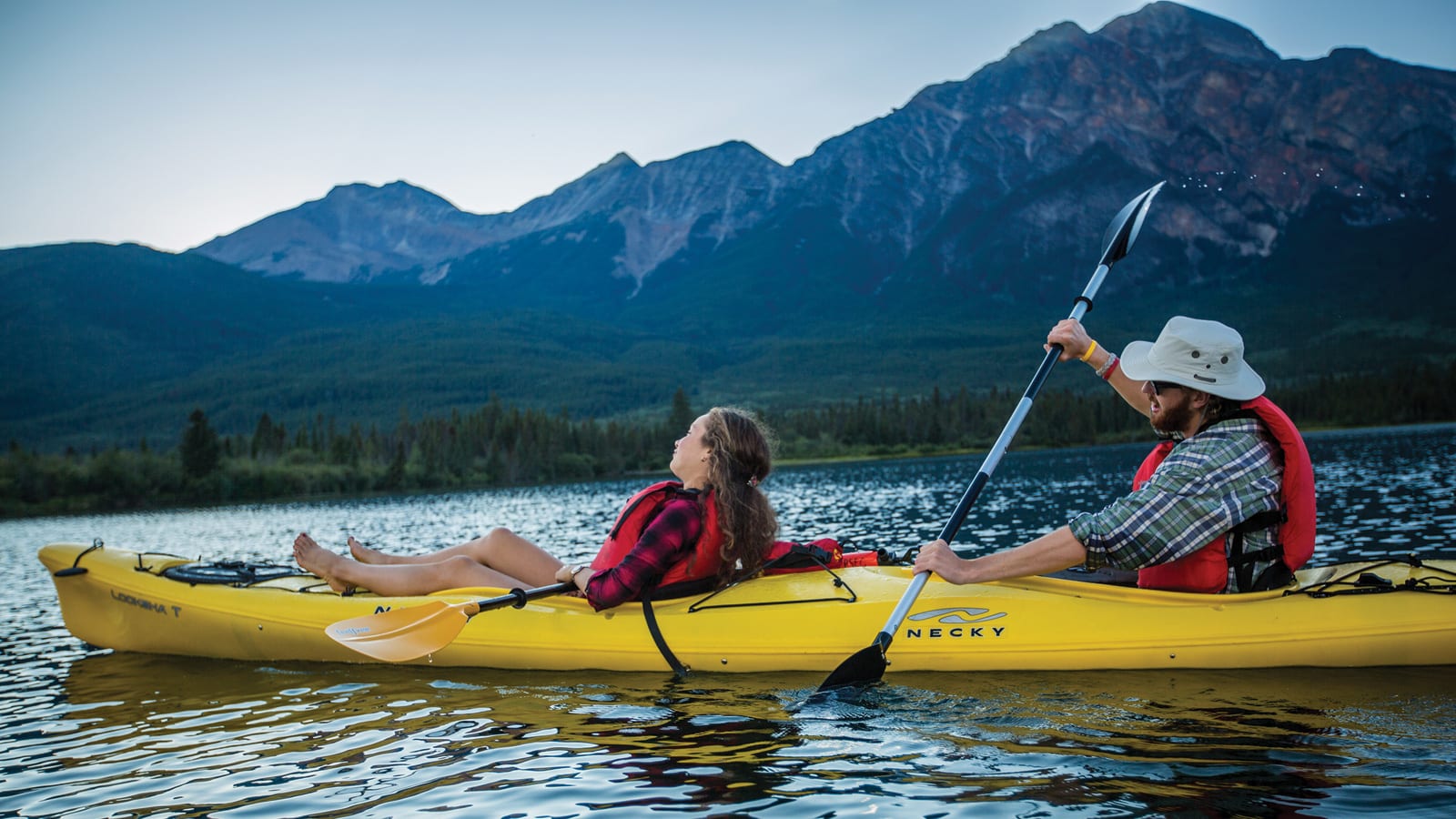
PADDLE, PEDAL, POOL Three unique ways to experience the best of the Rockies.
Canoe on Pyramid Lake : Paddling is optional in Wild Current Outfitters’ big cedar-strip canoe. While guides paddle across the lake, guests can row or sit back and look for osprey, loons, beavers, wolves, moose and bears. Hop out on shore for a snack and a primer on grizzly and black bear tracking.
Soak in Fairmont Hot Springs : After a long drive or hike, relax with a soak in the pool at Fairmont Hot Springs.* With naturally heated waters full of minerals, hot springs are known to boost metabolism, soothe sore muscles and improve blood circulation. The mountain views are pretty good for you too.
MORE TO READ Fat biking in the Rockies : your new favourite winter sport
Ride the Great Divide : From the Great Divide trailhead near Lake Louise, hop on a mountain bike for a gentle 20-km ride on the mostly flat trail that used to be Highway 1A. You’ll see the old Great Divide arch, marking the border between Alberta and B.C. After posing for the requisite pictures at the ’60s-era signage, you may want to venture a few clicks farther into B.C.’s Yoho National Park.
*Check fairmonthotsprings.com for current operating hours.
HOW TO CLIMB A MOUNTAIN Whether you go on a little hike or shoot for the top, Parks Canada advises you plan ahead, know your limits and bring proper gear.
1 Check conditions before you head out and have a plan of where you’re going. Share it with someone at home, in case you run into trouble.
2 Make sure your cell phone is fully charged —and always pack a backup battery in case of emergencies.
3 Ensure everyone in your party has the physical ability to tackle the chosen route. Don’t wear earphones. Stay alert at all times.
4 Wear comfortable hiking shoes or boots, a hat, sunscreen and a few layers of clothing—the weather can change quickly in the mountains. Bring lots of water and snacks and a first aid kit.
5 Make a lot of noise on the trail to keep bears away, but also make sure you have bear spray.
6 Don’t litter or leave any garbage behind. If hiking with Fido, always use a leash and clean up after him.
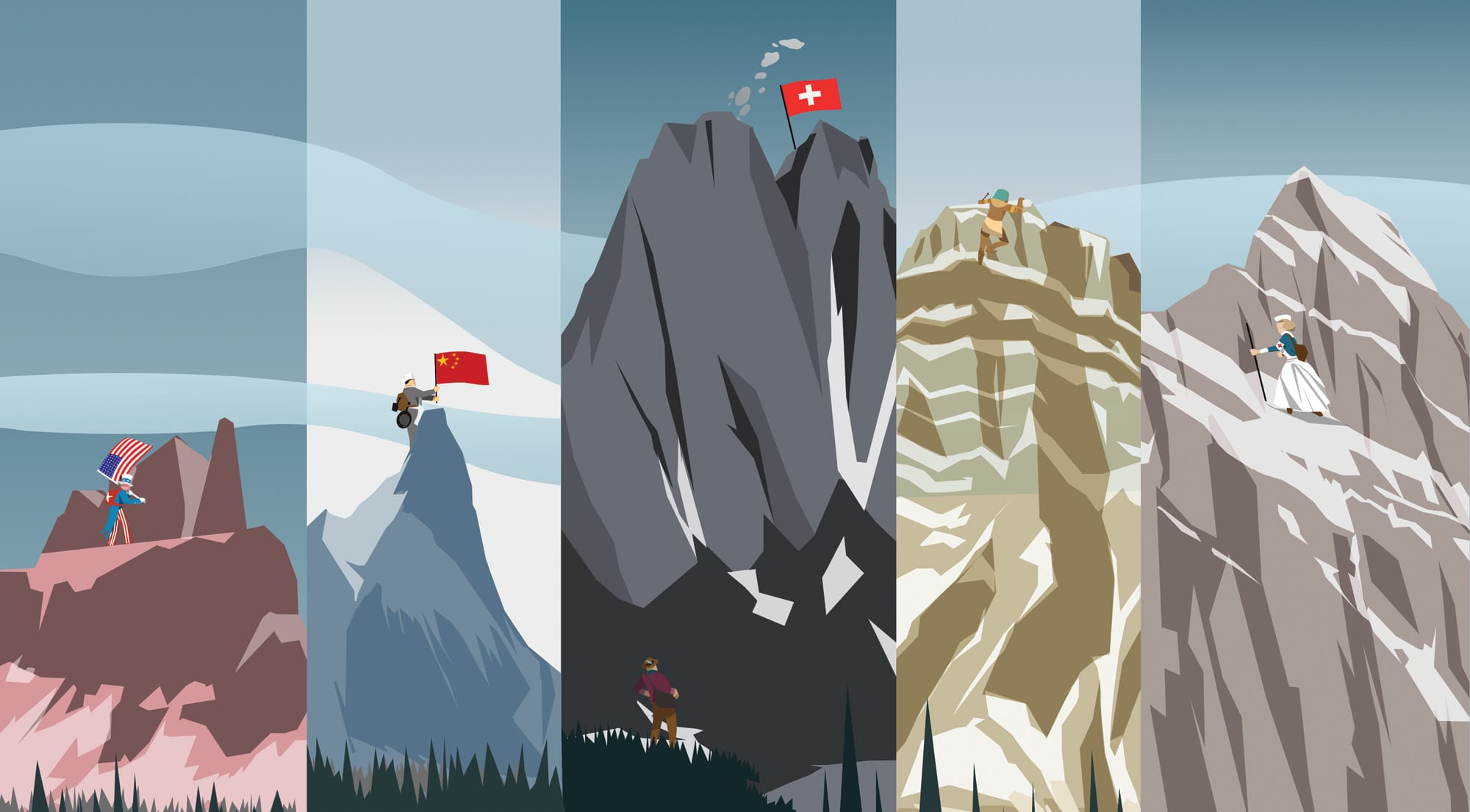
PICK A PEAK Must-see mountains and their hidden histories.
Castle Mountain Banff National Park Elevation: 2,766 m Best views: Hwy 1, Hwy 93
In 1946, Prime Minister William Lyon Mackenzie King abruptly renamed Castle Mountain to Mount Eisenhower the day before a visit by the future American president. People were outraged. In 1979, the mountain was finally re-renamed—but its eastern elevation is still called Eisenhower Peak.
Ha Ling Peak Bow River Valley Elevation: 2,408 m Best views: Hwy 1, 1A, 742
In 1896, Ha Ling, a cook in a mining camp, bet his coworkers $50 he could climb the mountain, plant a flag and be back in Canmore within 10 hours. Word is he did it in five-and-a-half. Another version of the story says Lee Poon was the Chinese cook who won a $10 bet.
MORE TO READ Where to see amazing animals in the Alberta Rockies and beyond
Mount Assiniboine Alberta-B.C. border Elevation: 3,618 m Best view: Hwy 742
In the late 1800s, a geologist was watching a cloud trail away from the massive mountain and was reminded of smoke leaving a tipi in an Assiniboine camp. Mount Assiniboine is also called “the Matterhorn of the Rockies” because it resembles the famous peak in the Swiss Alps.
Mount Chephren Banff National Park Elevation: 3,266 m Best view: Hwy 93+
In 1918, there was concern too many mountains were called “Pyramid.” A Jasper-area mountaineer suggested this Pyramid Mountain be renamed for a pharaoh that built one of the Great Pyramids. Chephren was the fourth pharaoh of the Fourth Dynasty of Egypt in the 16th century BC.
Mount Edith Cavell Jasper National Park Elevation: 3,363 m Best views: Hwys 16, 93
Edith Cavell was a British nurse who helped Allied soldiers escape German-occupied Belgium in WWI before being executed by the Germans. A few months later, in March 1916, the peak originally called Mount Fitzhugh was renamed to honour the courageous nurse who’d never set foot in Canada.

SAVE WITH AMA Pack your membership card before hitting the road to the Rockies!
• Save $10 on annual family Parks Canada Discovery passes
• Get AMA’s Best Price Guarantee on top mountain hotels.
• Stock up on hiking and camping gear at Altitude Sports through the AMA e-Store and earn 4% in reward dollars
• Save 15% on admission to Canadian Rockies Hot Springs in Radium, Jasper and Banff*
• Get a bird’s-eye view on the Jasper SkyTram; members save 15%
*Check hotsprings.ca for current operating hours.
How to Hike to Alberta Falls in Rocky Mountain National Park: 2 Trail Options
A hike to Alberta Falls in Rocky Mountain National Park never feels lonely. Yet despite its popularity, the place is worth every bit of effort. Two trails, both starting off the Bear Lake Road, further prove it.
Last updated: February 22, 2023
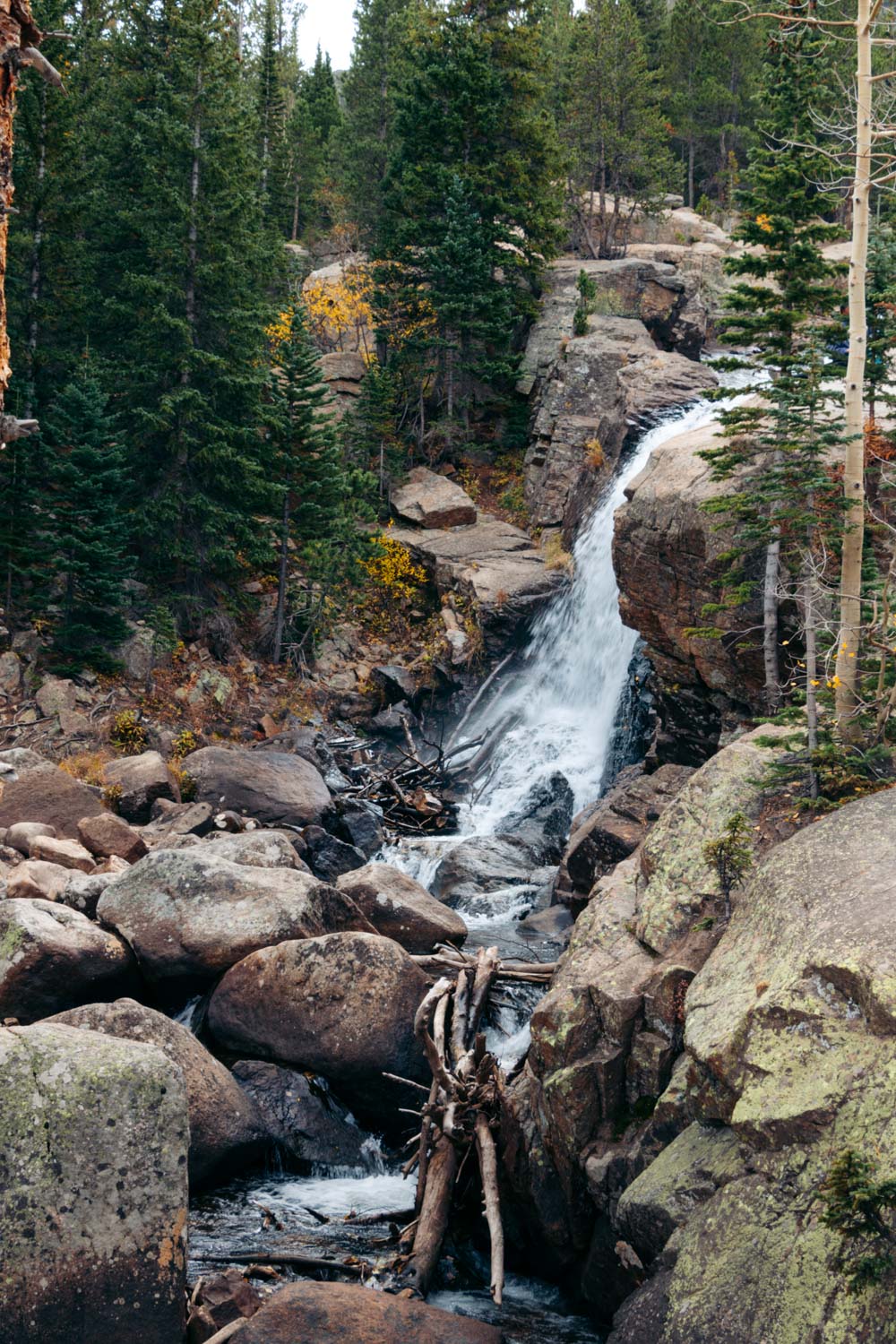
How to Hike to Alberta Falls: 2 Popular Trails in the Bear Lake Road Corridor in Rocky Mountain National Park
“The Alberta Falls hike is a must-do activity in Rocky Mountain National Park ”. This statement was enough to arouse my curiosity. Not thinking twice I had jotted down the name of the place. Weeks later while driving along the Bear Lake Road Corridor and sharing my itinerary with Roshan (my husband often doesn’t get bothered by any travel plans), I transmitted this interest to him.
Yet unlike yours truly, when it comes to waterfalls, Roshan always wonders if they can compete with all the cascading wonders in Oregon . Although impressive in its own way, the Alberta Falls hike, unfortunately, didn’t quite live up to his expectations.
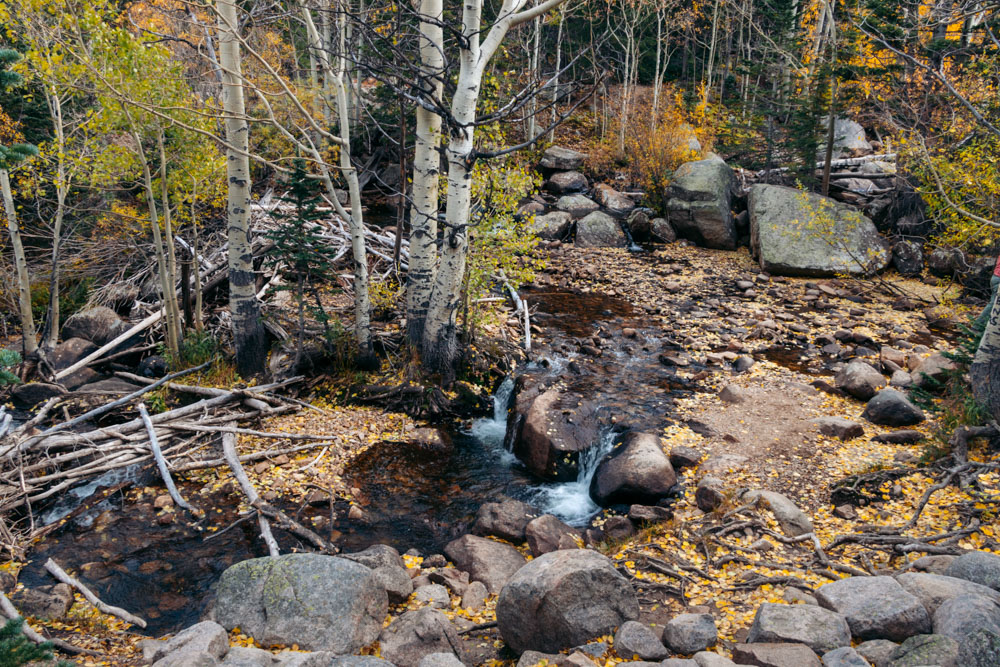
Meet Alberta Falls
Thundering into Glacier Creek, 30-foot Alberta Falls is not a place you can tramp to in 5 minutes. Waterfalls in the Columbia River Gorge in Oregon certainly have greater advantages in this department. Yet the hike to Alberta Falls isn’t way too strenuous either. Furthermore, the gushing water that plunges into a gorge before streaming deeper into the woods is a stunning site to behold.
The first time I came across the Alberta Falls hike, Alberta, a province in Canada , came to my mind. I was wondering if these two places had something in common. As it turned out, they don’t.
Alberta Falls in Rocky Mountain National Park was named after Alberta Sprague, the wife of Abner Sprague . The man who was one of the first settlers in the Estes Park area put his heart and soul into the development of the region. On top of that, he made history as the first person to pay entrance fee to access Rocky Mountain National Park in 1939.
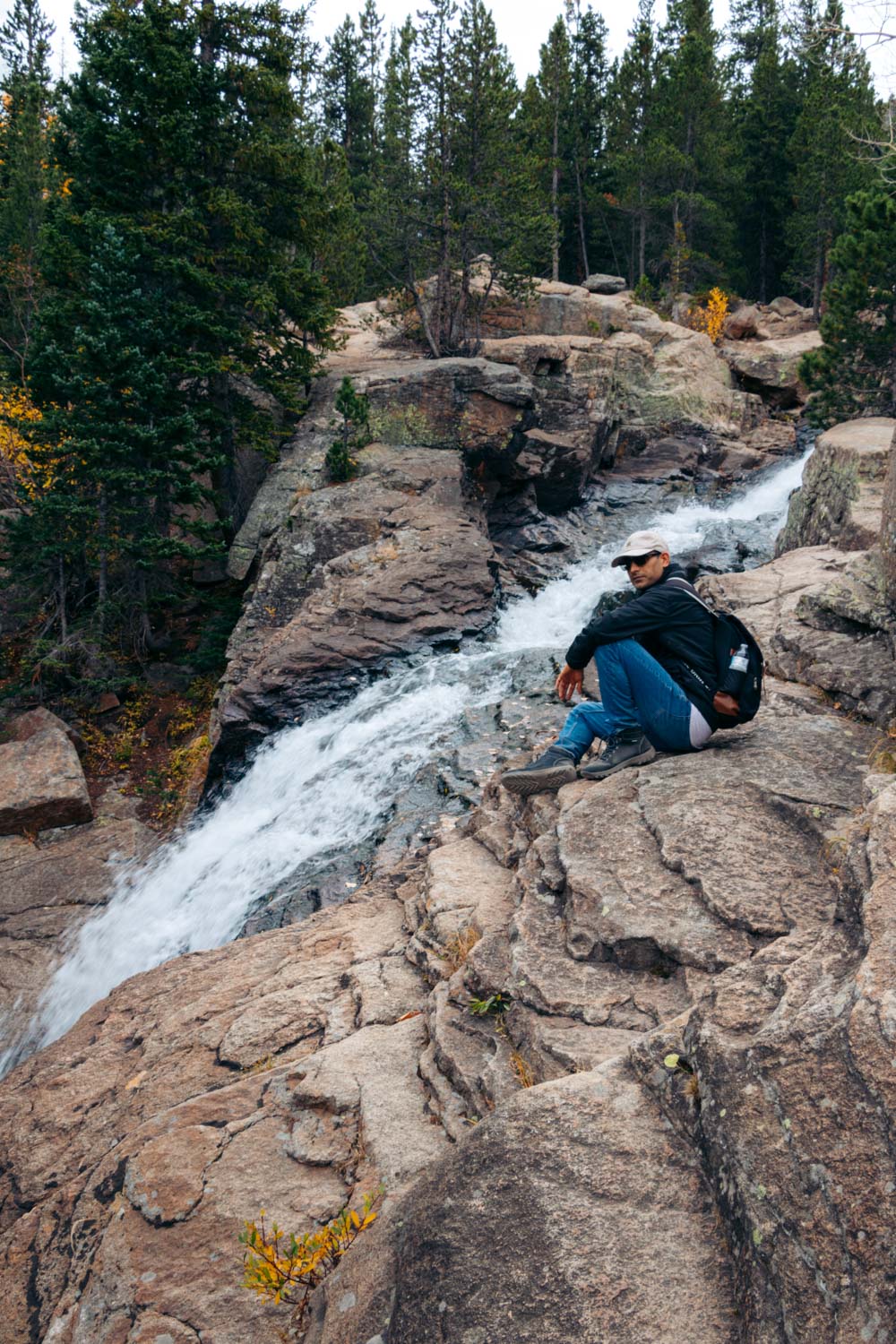
Alberta Falls Hike: Location and Direction
Alberta Falls nestles in the Glacier Gorge area in the Bear Lake Road Corridor, about 12.6 miles from Estes Park. Upon entering the park at the Beaver Meadows Entrance, drive southwest on US-36 W for 0.2 mile before veering to the left onto the Bear Lake Road. Continue on for approximately 8.4 miles toward the Glacier Gorge Junction Trailhead.
Alternatively, you can follow the route for additional 1.1 miles before driving into the Bear Lake parking lot.
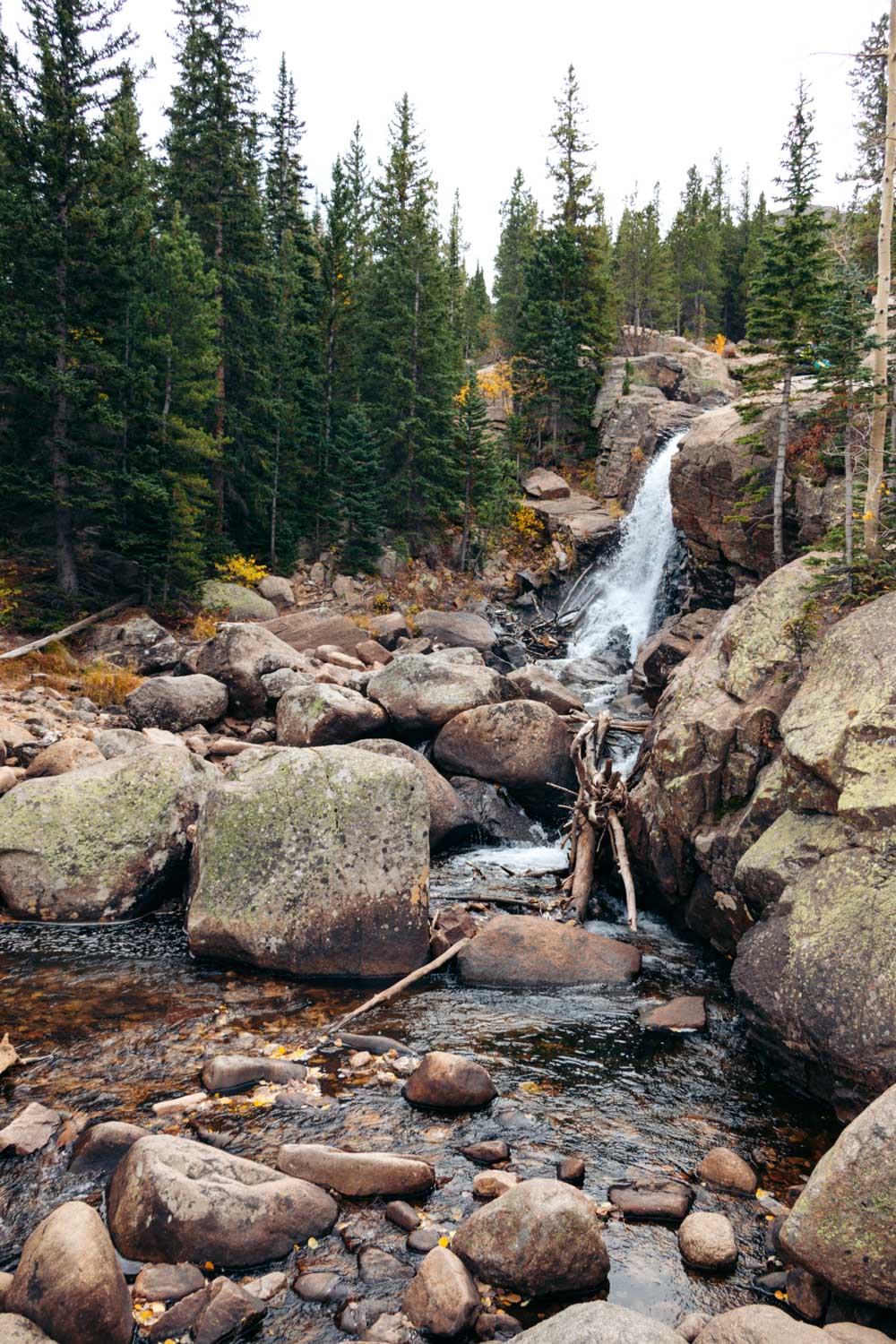
Alberta Falls Hike from Bear Lake Trailhead
Quick facts.
- Distance: 2-mile, road-trip trail
- Elevation Gain: Approximately 200 feet
- Difficulty: Easy
- Time: 1-2 hours
Alberta Falls Hike Description
Surrounded by other favorite trailheads, the hike to Alberta Falls starts right behind the Bear Lake Ranger Station, a short walk from the popular Bear Lake Loop . A number of trail signs dot the area, making sure you never miss the right path.
After you pass by the ranger station, keep to the left, then choose the left trail at the trail junction. The Alberta Falls hike shares the trailhead with several other stunning trails, such as Nymph, Dream, Emerald Lakes Trail and Lake Haiyaha Trail . While the dirt path to the waterfall swirls downhill, following the left fork, the trail to the alpine lakes veers uphill, to the right.
Thanks to its downhill trajectory, the Alberta Falls hike starts on an easy note. (This section of the trail, however, feels tedious while hiking back to the trailhead). The path runs through a pine forest, meets an aspen grove, crosses a few footbridges, and stumbles upon a number of overlooks along the way.
Several times, it comes across other trail junctions. Properly marked with the length of the new trails included on the signs, these paths allure you to venture deeper into the woods after you complete the Alberta Falls hike.
The last section of the trail consists of rock slabs. Taming the waterfall, these boulders fulfill two functions. First, they direct the water flow, protecting the falls from spilling all over the woods. Second, the rocks invite the hikers to get comfy on their stony surface and eat some lunch while feasting their eyes on the massive stream running downhill.
Complete the Alberta Fall hikes by following the same trail to the Bear Lake parking lot.
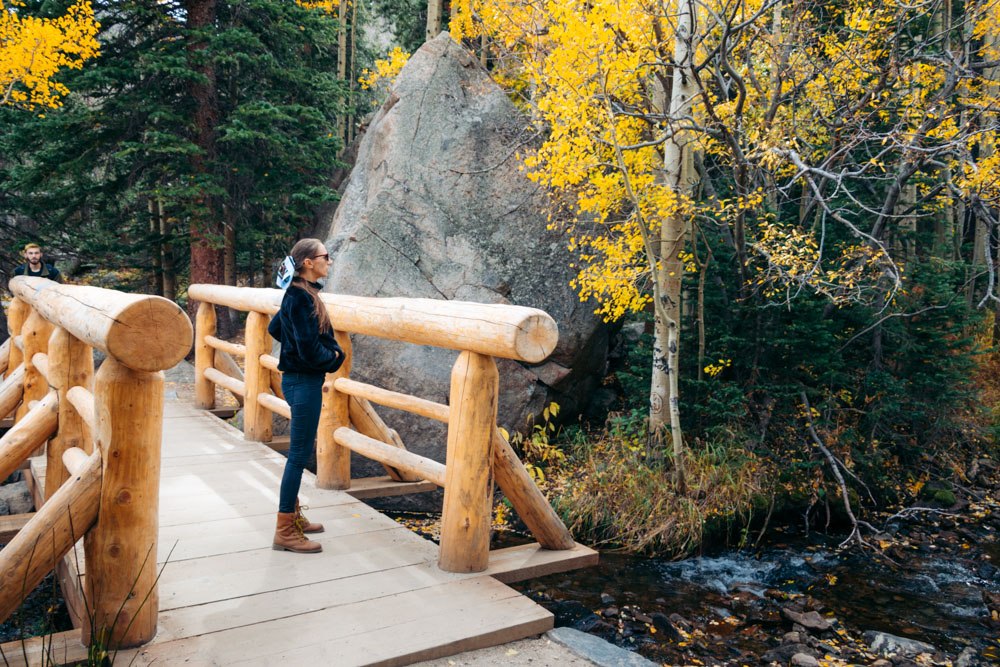
Alberta Falls Hike from Glacier Gorge Trailhead
- Distance: 1.6-mile, round-trip trail
- Elevation Gain: 160 feet
- Time: 1-1.5 hours
Unlike the hike to Alberta Falls from the Bear Lake area, the trail that starts at the Glacier Gorge parking lot runs mostly uphill. The rugged path, however, is not impossible to conquer. In fact, it welcomes the hikers of all abilities. The beginners or less prepared travelers, though, may need extra time to complete the hike.
Although this trail starts from what it looks like the opposite direction from the above-mentioned trail, it shares the same natural landmarks. The aspen grove, pine forest, scenic overlooks, and rock slabs are all present along this path.
Upon reaching Alberta Falls, you can hike back the same way you came from. If time permits, take the Alberta Falls to the Bear Lake area route as an alternative path to get to the parking lot. For more adventures in the woods, explore the trails that lead to the Loch, Mills Lake, or Lake Haiyaha .
Alberta Falls Hike: Map and Direction from Estes Park
When to Hike to Alberta Falls
You can take a hike to Alberta Falls all year round. The trail, however, is the most beautiful in fall , sometime mid-September though mid-October, when the aspens turn yellow. Different, equally impressive vistas adorn the area during other seasons, changing its dominant colors from green to yellow, orange, and white.
The most popular time to hike to Alberta Falls is from May through October . In winter and early spring, the trail is covered with snow and might be somewhat difficult to track through. Snowshoes come in handy at this time of the year.
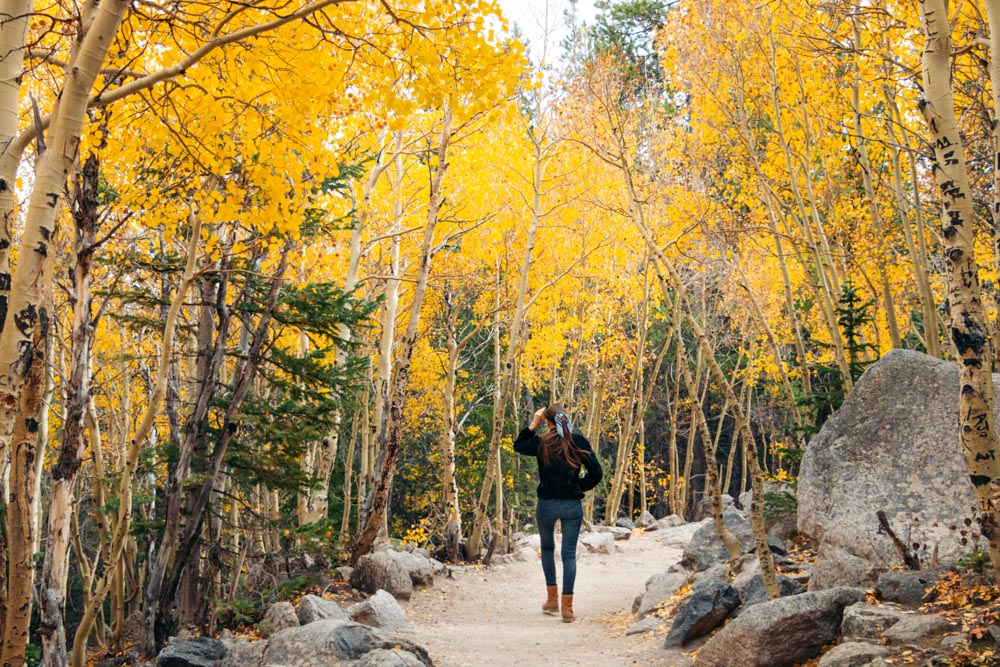
Things to Know before Hiking to Alberta Falls
No pets on the alberta falls trail.
This also applies to the majority of other popular and secret trails in Rocky Mountain National Park.
No Wheelchairs on the Alberta Falls Trail
The Alberta Falls Trail in not wheelchair accessible. The rugged, unpaved trail runs among the trees which massive roots often protrude along the path. This, in its turn, makes the hike to Alberta Falls impossible for handicapped visitors and hikers with strollers.
Wear Good Hiking Shoes
The section of the trail right near the waterfall consists of the rock slabs and may be slippery, especially after it rains. So be sure to wear shoes with good traction while hiking to Alberta Falls.
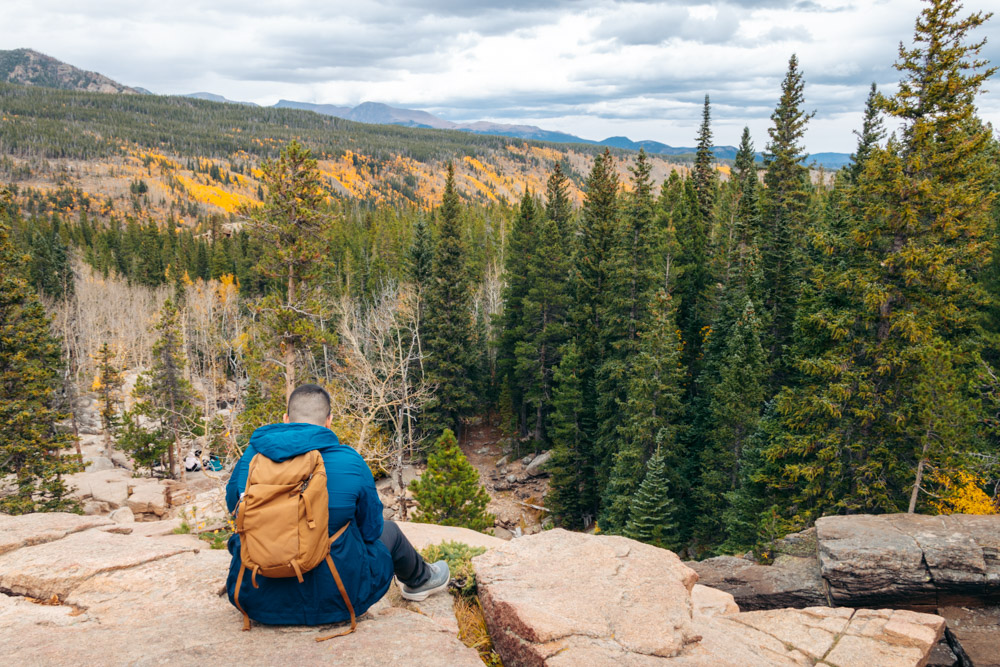
No Carving on Trees
Unfortunately, some hikers still don’t understand how powerful, yet fragile nature is. Instead of enjoying the beauty around them, they destroy it. Such disrespectful behavior is especially visible in the aspen grove where almost every tree near the trail is carved on.
Although this type of “art” rarely does any serious damage to a tree, it destroys its natural beauty. The “scars” hardly ever go away. But some aesthetic parts of the tree die immediately.
Linger at Alberta Falls Longer
Better yet pack a light lunch and have a small picnic while gazing at the gushing falls. Be sure to pack out all trash afterwards.
Keep a Safe Distance from Wildlife
Don’t chase a wild animal if you happen to see it during your hike to Alberta Falls. Enjoy the wildlife’s company from afar. The wild animals can be dangerous and unpredictable.
Furthermore, never feed the wildlife. Accustomed to human food, the animals may stop hunting or foraging. Often they get killed while trying to attack the hikers in order to snatch some food from them.
READ MORE: How to Protect Yourself from Bears in the Wild: Tips and Myths
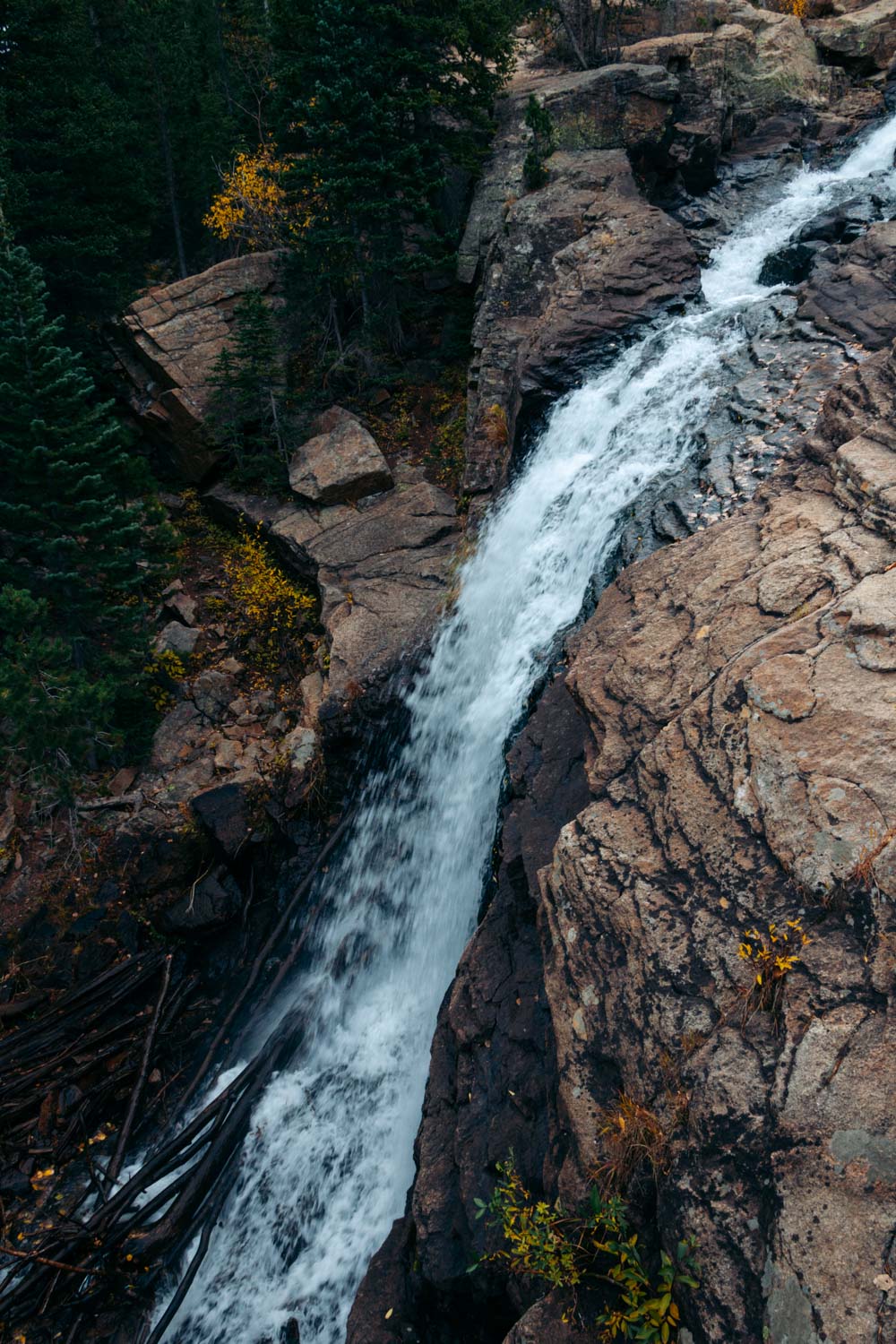
Use Free Shuttle
Both the Bear Lake area and the Glacier Gorge Junction Trailhead are among the most popular regions in Rocky Mountain National Park. Empty parking spots might be impossible to find here. If that’s the case, adhere to Park-and-Ride services. The free shuttle runs between different areas of the park during the busy season, from late May through mid-October.
Horses do “Hike” to Alberta Falls
These domesticated animals clearly are not considered “pets”. So ride them to Alberta Falls if you wish.
No Permit is Needed to Hike to Alberta Falls
The trail is easy and suits people of all walks of life.
Admission and Entrance Fees
Access to the Alberta Falls Trail is free. To enter Rocky Mountain National Park, though, you must pay $35 per car. The ticket is valid for 7 consecutive days. 1-day pass is only $25. If you plan to visit the park multiple times a year, purchase an annual pass, which costs $70.
National parks’ enthusiasts often prefer the America the Beautiful Pass over any annual or seasonal tickets. The former costs $80 and opens the doors to all national parks and monuments in the country for one year from date of purchase.
Note: As of summer 2021, you must have a timed entry permit and an entrance pass to visit Rocky Mountain National Park and hike to Alberta Falls from May through mid-October.
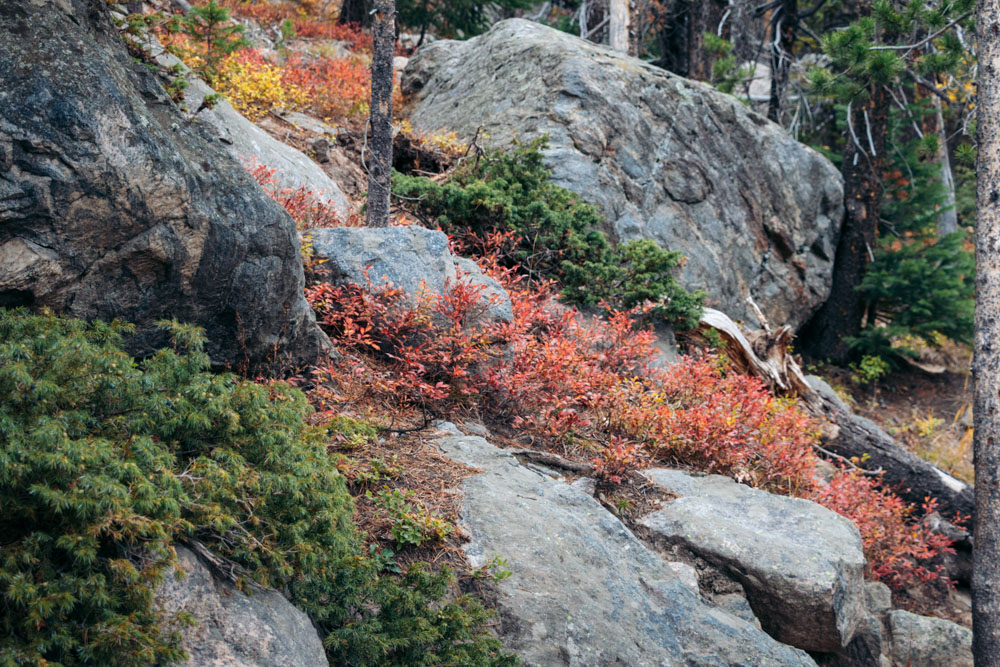
- Cub Lake Hike: Off the Beaten Path in Rocky Mountain National Park
- Tundra Communities Trail in Rocky Mountain National Park – a Hike Like no Other
- Bierstadt Lake Trail: Hike from Bierstadt Lake Trailhead
- Sprague Lake Trail – the Easiest Hike in Rocky Mountain National Park (+Photos)
- Highlights of Denver and Boulder in One Day
You may also enjoy:
Majorelle garden – colorful gem of marrakech, when (not) to visit mesquite flat sand dunes in death valley, visit going-to-the-sun road in glacier national park: tips and entry ticket, how to visit mcway falls: iconic spot in big sur, leave a reply cancel reply.
Your email address will not be published. Required fields are marked *
This site uses Akismet to reduce spam. Learn how your comment data is processed .
Get in touch
Sign up for newsletter.
Join Roads and Destinations' mailing list and get new blog updates, upcoming events, and exclusive travel resourses.
- Toll Free: 1-800-347-7126
- Intl: 1-403-259-5447
- Online Check-in
- Agent Portal
Rental Vehicles
- Maxi Travel Camper (TCA)
- Deluxe Van Camper (DVC)
- Super Van Camper (SVC)
- Compact Motorhome (MHC)
- Midi Motorhome (MHB)
- Maxi Motorhome (MHA)
- Maxi Plus Motorhome (MHX)
Special Offers
- Relocation Offers
- 2025 Early Booking Deals
- 30th Anniversary Offer
- My CanaDream
- Liability Reduction Options
- How To Videos
- Travel Extras
- Temporary Accommodation
- Payment Options
- Book with Uplift 0% Financing
- Free Winter E-Book
- CanaDream Cares
Go Global with THL
- 30 Years of CanaDream
Be Inspired
- Trip Planner
- Destinations
- Itineraries
- Ski Safaris
- Guide Books
Download Our Guides
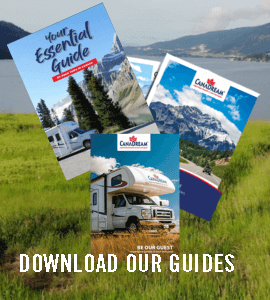
- Free Summer E-Book
- Gift Certificates
CanaDream Club
- Hotel & Parking Offers
- Ski Resort Specials
- Premium Partners
- Fuel Savings
- Club App Booking Offers
- Campertunity
- Sustainability
Join the Club
- Be a Campground Partner
- Be an Attraction Partner
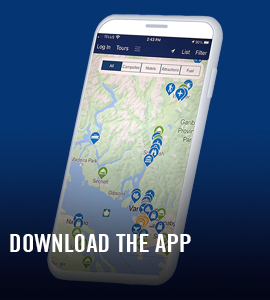
- Club Savings
- Discovery Pass
- Explore the Club
- Solis Mobile Hotspot
- View Inventory
- RV Financing
- RV Sales FAQ's
- CanaDream Club for Owners
- Rent Before You Buy
RV Sales Locations
- Truck Camper
- RV Specials
- Certified Winter Ready RVs
Click to Learn More

- Financing your RV
- Certified Adventure Ready
Service & Parts
- Calgary RV Storage
- Halifax RV Storage

- Vehicles Back Vehicles
- Maxi Travel Camper (TCA) Back Maxi Travel Camper (TCA)
- Deluxe Van Camper (DVC) Back Deluxe Van Camper (DVC)
- Super Van Camper (SVC) Back Super Van Camper (SVC)
- Compact Motorhome (MHC) Back Compact Motorhome (MHC)
- Midi Motorhome (MHB) Back Midi Motorhome (MHB)
- Maxi Motorhome (MHA) Back Maxi Motorhome (MHA)
- Maxi Plus Motorhome (MHX) Back Maxi Plus Motorhome (MHX)
- Saver 2 Back Saver 2
- Saver 4 Back Saver 4
- Saver 6 Back Saver 6
- Winter RV Back Winter RV
- Vancouver Back Vancouver
- Calgary Back Calgary
- Toronto Back Toronto
- Montreal Back Montreal
- Halifax Back Halifax
- Edmonton Back Edmonton
- Whitehorse Back Whitehorse
- Hot Deals Back Hot Deals
- Relocation Offers Back Relocation Offers
- Winter Vacation Deals Back Winter Vacation Deals
- Rewards Back Rewards
- 2025 Early Booking Deals Back 2025 Early Booking Deals
- My CanaDream Back My CanaDream
- How To Videos Back How To Videos
- Travel Extras Back Travel Extras
- Temporary Accommodation Back Temporary Accommodation
- Book Now Pay Later Back Book Now Pay Later
- Payment Options Back Payment Options
- Liability Reduction Options Back Liability Reduction Options
- About Back About
- Contact Us Back Contact Us
- Careers Back Careers
- CanaDream Cares Back CanaDream Cares
- CAA Travel Insurance Back CAA Travel Insurance
- FAQs Back FAQs
- Go Global with THL Back Go Global with THL
- 30 Years of CanaDream Back 30 Years of CanaDream
- Blog Back Blog
- Destinations Back Destinations
- Itineraries Back Itineraries
- Camping Back Camping
- Trip Planner Back Trip Planner
- Ski Safaris Back Ski Safaris
- FAQ's Back FAQ's
- Gift Certificates Back Gift Certificates
- CanaDream Guides Back CanaDream Guides
- Explore the Club Back Explore the Club
- CanaDream Club Welcome Video Back CanaDream Club Welcome Video
- Hotel & Parking Offers Back Hotel & Parking Offers
- Premium Partners Back Premium Partners
- Fuel Savings Back Fuel Savings
- Download our App Back Download our App
- Club App Booking Offers Back Club App Booking Offers
- Discovery Pass Back Discovery Pass
- Solis Mobile Hotspot Back Solis Mobile Hotspot
- Campertunity Back Campertunity
- Sustainability Back Sustainability
- Be a Campground Partner Back Be a Campground Partner
- Be an Attraction Partner Back Be an Attraction Partner
- RV Sales Locations Back RV Sales Locations
- RV Financing Back RV Financing
- RV Sales FAQ's Back RV Sales FAQ's
- CanaDream Club for Owners Back CanaDream Club for Owners
- Truck Camper Back Truck Camper
- Class B Back Class B
- Class B+ Back Class B+
- Class C Back Class C
- Trucks Back Trucks
- Certified Winter Ready RVs Back Certified Winter Ready RVs
- Service Back Service
- Parts Back Parts
- Calgary RV Storage Back Calgary RV Storage
- Pricing Back Pricing
- Lot Map Back Lot Map
Get RV Rental Pricing & Availability
- {{pickup.Value}}
- {{dropoff.Value}}
- {{country.CountryNameEnglish}}
Get RV Sales Pricing & Availability
- All RV Types
- {{rvType.Name}}
- All Locations
- {{location.Name}}
- {{sleepCapacity.Name}}
- {{maxPrice.Name}}
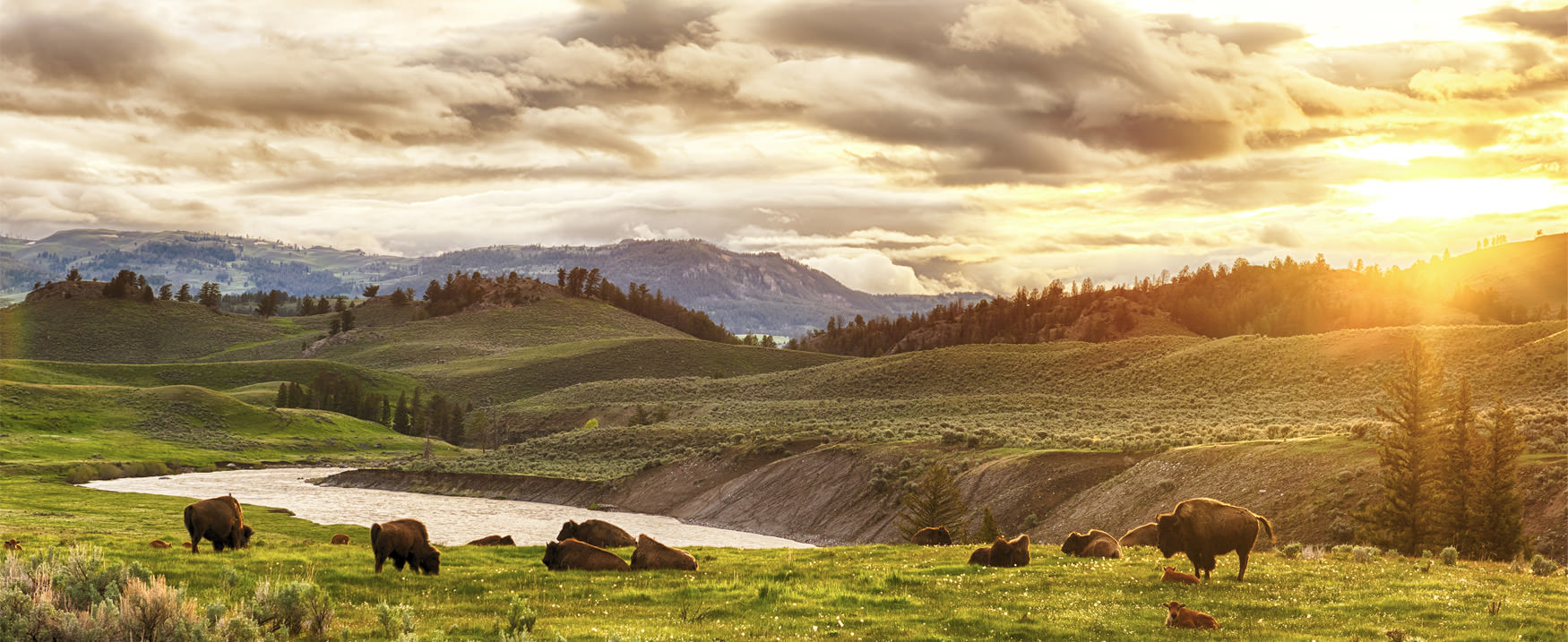
Alberta Rocky Mountain Expedition
Route - 3063 km / 1903 mi
Calgary to waterton park, waterton park, wateron park to helena, montana.
Leaving the magic of Waterton today you’re heading to the United States and stopping in Helena, Montana for the night. You’re halfway between Glacier National Park and Yellowstone National Park here.
Helena, Montana to Yellowstone National Park, Wyoming
Today you’ll be greeted by Yellowstone National Park. Hello wildlife paradise and land of all things awe-inspiring.
Yellowstone National Park, Wyoming
Choose your own adventure – Yellowstone National Park is 3,500 square miles of one of nature’s greatest outdoor playgrounds.
Yellowstone National Park, Wyoming to Missoula, Montana
You're city-bound today for a one-night stop on your way to Glacier National Park. Welcome to Missoula, Montana, a city made for the adventurer.
Missoula, Montana to Glacier, Montana
Glacier montana.
If you're in the park during peak visitor season, leave your RV camp side and take a cruise along the Going-to-the-Sun Road, either on the Park shuttle or on a Red Bus tour.
Glacier, Montana to Banff, Alberta
Your endless mountain adventure continues on the Canadian side of the border in Banff National Park - with incredible sights, rich history and vibrant mountain town vibes.
Banff, Alberta
Looking for the perfect picnic spot and mountain stroll? Or maybe you’re in the mood for the magic of a waterfall? Banff has it all – including places to relax and pamper yourself.
Banff to Jasper
Jasper, alberta.
Your mountain holiday continues in the alpine town of Jasper, Alberta. You name it, this place has just the mountain experience for you.
Jasper to Lake Louise
Heading back down the awe-inspiring Icefields Parkway, you’ll arrive in Lake Louise, an an incredible emerald-coloured glacier-fed lake with an irresistible view.
Lake Louise to Calgary
Trip details.
The silent prairies meet the peace of the Rocky Mountains in Waterton Lakes National Park . The lake crosses the border into the United States, forming Waterton Glacier International Peace Park. It’s a UNESCO World Heritage Site. Plan your outdoor adventures – from hiking, windsurfing and boating, you won’t be bored. The hamlet of Waterton has a year-round population of about 100 and has options for picking up food or dining out.
CanaDream Club Partners
- Riverbend Campground
- Castle Mountain Resort
- Incept Adventure Co .
- Lost Lemon Campground
- Head-Smashed-In Buffalo Site
- The Fort Museum of the NWMP
- Bar U Ranch Historical Site
- BeaverTails
How will you play today? A hike to Vimy Peak offers incredible views of Waterton Lake and the town. This 10 km (6.21 mi) trek is considered difficult so pack and dress appropriately. National Geographic listed the Crypt Lake Trail as one of the top 20 most thrilling hiking trails. It’s a 17 km (10.7 mi) return trip for the hiker who can embrace the challenge and doesn’t mind working up a bit of a sweat. You’re rewarded with a tranquil rest at the top. We recommend checking out the Parks Canada website to scope out what trails and hikes are open during your visit here.
- Incept Adventures Co.
- BeaverTails
Helena was founded as a gold camp during the gold rush in the late 1800s and is Montana’s capital city. It’s a place where you can enjoy the food, drink and the warm hospitality so many travellers from all over the world soak up along their adventure.
- St. Mary / East Glacier KOA
Yellowstone National Park was officially designated as a national park in 1872 and is an incredible visit. There are lots of camping options here – including first-come first-serve camping at Mammoth Campground and others where you can make reservations.
- Great Falls KOA
Maybe you’d like to head to the largest hot spring in Yellowstone, The Grand Prismatic Spring. It’s 370 feet in diameter and offers earthy colours as it steams. A truly beautiful sight. Another incredible visit is Old Faithful Geyser and another hot spring, the Morning Glory Pool. Head to the Lamar Valley and watch the wildlife including bison, wolf packs, eagles and bears.
CanaDream recommends planning out your three days here ahead of time so you can make the most of this incredible place. Allow time to be caught up in the inevitable bear, moose or bison jam as you travel the park's roadways.
Nestled in the Northern Rockies of Montana, Missoula has a lot to offer the visitor. Many spend their time on one of the three rivers that run through the city either kayaking, tubing or fishing. A thriving shopping and dining scene, you’ll have no problem finding some good eats and entertainment in Missoula after a day on the road.
Welcome to Montana’s Rocky Mountains and Glacier National Park, home to the "Going to the Sun" Road, one of the USA's most iconic scenic drives. The busiest period in this park is when the road is open to through traffic from around the end of June to early September.
A great way to begin your adventure here is to check in with the visitor centre to get the local flavor of the area and check out what’s been going on in the park. There are over 700 miles of hiking trails here – so grab a map and plan out your next few days. If you’d like a chilled-out day, consider spending some time at Lake McDonald.
- Whitefish / Kalispell North KOA
The park shuttle operates from late June to early September, stopping at many points of interest and trails along the way. Some day hike ideas in this area include the Garden Wall, Highline Trail and Hidden Lake Hanging Garden. Consider camping at Saint Mary Lake’s northern shore. Spend another night at Many Glacier. Take in the diverse wildlife and hike some more – Bullhead Lake and Ptarmigan Tunnel are two favourties.
Lake fishing is permitted year-round at Glacier National Park, some limitations apply so check with authorities before casting your line.
Relax in the Banff Hot Springs or set out on a day hike to explore the Canadian Rocky Mountains.
- Banff Jasper Collection by Pursuit
- Canadian Rockies Hot Springs
- Alberta Food Tours
- Cave and Basin National Historic Site
Looking for the perfect picnic spot and mountain stroll? Lake Minnewanka is a great option for a day hike and wander.
If you’d like to experience the magic of a waterfall, consider a trip to Johnston Canyon and feel thundering waterfalls following a short 1.6km walk to the upper falls.
If you’re hiked-out and your body is craving some TLC, Banff offers world-renowned hotels and spas where you can relax, be pampered or simply sit back and enjoy a cocktail. The town of Banff also serves up great local food and drink that will surely keep you satisfied and entertained. We’ve partnered with lots of local business so check out what’s offered on our CanaDream Club app.
- Alpine Helicopter Tours
- Canmore Cave Tours
- Canadian Rockies Rafting
- White Mountain Adventures
- Banff Scooter Company
- Discover Banff Tours
- Banff Canoe Club
This is a drive you just might not want to end with endless photo opportunities and wildlife sightings. Leave yourself a full day to get to Jasper. Some of our favourite places to stop along the way include Peyto Lake and Athabasca Falls.
Another incredible stop along the Icefields Parkway is the Columbia Icefield. Be sure to pick up a map of the Parkway before you travel - it has detailed information about the 'must-see' attractions along the way.
- Ski Marmot Basin
- Jasper SkyTram
- Journey Bike Guides
- Fairmont Jasper Park Lodge
- The Jasper Planetarium
Your mountain holiday continues in the alpine town of Jasper , Alberta. Visit the limestone canyon and waterfalls of Maligne Canyon and the popular Maligne Lake.
Check out local tours and operators if you’d like to get a local’s take on what to do and be sure to check out our CanaDream partners for deals. Perhaps yoga, rock climbing or rafting is peaking your curiosity – all activities at your fingertips here in Jasper.
- Peregrine Helicopters
- Hinton / Jasper KOA
- Jasper Food Tours
- Walks & Talks Jasper
- Canadian Rockies Hot Springs
- Fairmont Jasper Park Lodge
- The Jasper Planetarium
- Sun Dog Tours
- Jasper Raft Tours
- Jasper Rafting Adventures
- Maligne Adventures Ltd.
- Jasper SkyTram
- Marmont Basin
- Rockies Heli Canada
You could picnic all day here, or pop into the Chateau Fairmont Lake Louise and treat yourself. Want another waterfall? Consider a hike to Bow Glacier Falls near Peyto Lake. Begin at Bow Lake on the Icefields Parkway and hike to the source of the Bow River, which runs all the way into downtown Calgary.
- Lake Louise SIghtseeing Lift and Gondola
- Banff Sunshine Meadows
- Mukwah Fating Tours
The final stretch of your epic Rocky Mountain holiday is today. Leaving the handsome mountains of Alberta, you’re heading east to Calgary, where it all began. This country-city offers everything from beer halls to fine dining, theatre and entertainment and great shopping.
End your adventure at the top of the Calgary Tower and take in the moments you’ve gathered on this magical holiday. And don’t forget to check out our CanaDream Club app so you can take advantage of partner deals on activities and experiences in the city.
- Heritage Park Historical Village
- TELUS Spark
- Calgary Tower
- Sandman Hotel Calgary
- Best Western Plus Port O Call
- Acclaim Hotel Calgary
- Best Western Premier Freeport Inn & Suites
- Wyndham Garden Calgary
- Days Inn Calgary North Balzac
- Comfort Inn & Suites Airdrie
- Wintergreen Golf & Country Club
- Calgary Walks & Bus Tours
- Calgary Zoo
Other Itineraries in Alberta
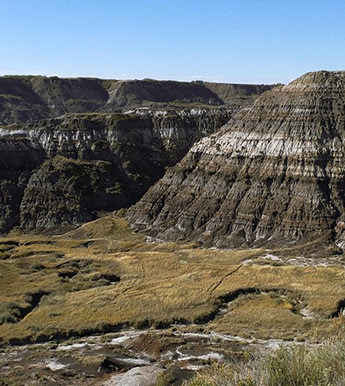
Experience Canada at your Own Pace

13 Best Hikes in Rocky Mountain National Park
Ask any regular visitor and they'll tell you—choosing the best hikes in Rocky Mountain National Park is no easy feat.
Verdant fields of alpine wildflowers , glacially-carved valleys, and massive stands of fragrant ponderosa pines are just a few reasons that millions of visitors flock to Rocky Mountain’s 355 miles of trails each year. And the peak-filled park, which is situated ninety minutes north of Denver on the ancestral homelands of the Ute and Arapaho people, is a high-altitude mecca for wildlife seekers and lake lovers alike.
With so much on offer and a wide range of elevations, though, choosing an ideal, safe trail can feel challenging for newcomers. We’ve gone ahead and done the hard work for you. Below, we cover our favorite hikes in Rocky Mountain National Park . (All distances are round trip.)
What to know before you go
Rocky Mountain is a high elevation park, with its lowest point sitting at a peachy 7,630 feet. If you’re traveling in from sea level, it’s important to spend one to two days acclimatizing to the altitude, embarking on easier jaunts. As a result of its high-in-the-mountains stature, the park is known to hold snow well into July, so check trail conditions before heading out as well. Summer is the busy season, with trails mostly snow-free, and wildlife enjoying the lush meadows in plain view. Autumn is also an excellent time to visit, as the area’s aspen trees put on a dazzling display of golds and oranges from late September through mid-October.
Keep in mind that the park has recently implemented a timed entry reservation system for private vehicles arriving during the busiest months (May 26 to October 22). Plan ahead and be sure to book early if you want to visit the Bear Lake Corridor.
Easy hikes in Rocky Mountain National Park
Bear lake loop.
Distance: .8 miles
Best for: Families with small kids
As one of the most popular trails in the park, the wheelchair-friendly Bear Lake Loop can get crowded. Go early to circumnavigate this alpine tarn in relative peace, passing through a shady conifer forest while the morning light bathes Hallett and Longs Peaks in dreamy light. Earmark a little extra time to stop at the path’s interpretive signs, which outline the geological history of the area.
Dream Lake
Distance: 2.2 miles
Best for: Lake lovers who want an easy day
Savor fragrant ponderosa pines on this 2.2-mile ascent to Dream Lake , a shimmering sapphire pool that sits below the face of Hallett Peak. Go early to nab a coveted parking space at the Bear Lake Trailhead, and marvel at canary yellow pond lilies in nearby Nymph Lake, before reaching the day’s objective at a staggering (but doable) 9,910 feet. Visitors in early October can expect fiery Aspen colors.
Alberta Falls
Distance: 1.2 miles
Best for: Big waterfall chasing with minimal effort
Beginning from the popular (and beautiful) Glacier Gorge Trailhead, the 1.2-mile out-and-back jaunt to thundering Alberta Falls is a high return-on-investment hike in summer and fall. At the turnaround point, feel the powerful spray of the waterfall as it plunges a dramatic thirty feet into a granite ravine below.
Alpine Ridge Trail
Distance: .6 miles
Best for: Alpine flora for the non-acclimatized
One of the best things about Rocky Mountain is the sheer accessibility of ordinarily far-flung alpine landscapes. Case in point: the Alpine Ridge Trail, which begins at the Alpine Visitor Center at 11,796 feet. Take your time (and catch your breath) on this high-elevation romp through alpine forget-me-nots and moss campions, which ends with a panoramic vista of the snow-capped Never Summer Mountains .
Coyote Valley
Distance: 1 mile
Best for: Wildlife-seeking on the west side
The easy stroll through Coyote Valley , in the park’s less-visited western side, follows the churning Colorado River (yes, the same one that runs through the Grand Canyon ) as it meanders through the Kawuneeche Valley. Along the wheelchair-accessible trail, keep your eyes peeled for elk, moose, coyotes, and the occasional golden eagle.
Intermediate hikes in Rocky Mountain National Park
Distance: 5 miles
Best for: Drool-worthy views of Longs Peak
Aspens, pine trees, waterfalls, glacially-carved canyons—the hike up to spectacular Mills Lake is easily one of the best in the park, though you’ll need to arrive early to park your private vehicle at the trailhead given its extreme popularity. Once situated, a moderate 2.5-mile climb takes you to the frigid snowmelt waters of Mills, which offers a second-to-none view of Longs Peak and its craggy spires known as Keyboard of the Winds .
Ute Trail to Tombstone Ridge
Distance: 4 miles
Best for: Tundra hikers hoping for fewer crowds
Start at the Ute Crossing Trailhead , roughly two miles west of Rainbow Curve on Trail Ridge Road, and take your time on this glorious high-altitude trail (11,430 feet) that winds across the delicate alpine tundra biozone. Be on the lookout for elk, bighorn sheep, and a kiosk that describes the route as the path the Arapaho and Ute peoples once used to trek between summer and winter hunting grounds.
Distance: 6.2 miles
Best for: An up-close look of the Continental Divide
On the way to this magnificent alpine lake, hikers will pass roaring Alberta Falls, skirt the edge of Chaos Creek, and ascend through a rocky, glacially-carved valley–not too shabby for a day hike. The end objective is postcard-worthy lake, The Loch , which is completely encircled by a sky-high granite cirque.
Deer Mountain
Distance: 6 miles
Best for: Peak baggers searching for an easy summit
At 10,013 feet, Deer Mountain is one of the easiest summits to nab on a trip to Rocky Mountain. Begin in a grove of mature ponderosa pines (pro tip: they smell like butterscotch if you find the right crack in the bark), then tramp up 1,210 feet until you reach the top. Once there, you’ll get to feast your eyes on big vistas of Longs Peak, Moraine Park, and Hallett Peak. Go at sunrise or sunset to avoid crowds.
Challenging hikes in Rocky Mountain National Park
Bear lake to odessa lake.
Distance: 8.8 miles
Best for: Bear Lake hikers who want to escape the crowds
Anglers and hikers who don’t mind sweating for their views, take notice. Though this journey begins at the popular Bear Lake Trailhead, it quickly departs from the more-trammeled Emerald Lake circuit and climbs roughly 1,900 feet through towering pines, and glacially-polished granite, delivering epic views of Longs Peak and Chiefs Head Peak. At Odessa, pause for a snack break and take in the sight of Notchtop Mountain, sitting just beyond the lake.
Distance: 8.4 miles
Best for: Longs Peak hikers who love alpine lakes
Want to trek way above the tree line—and marvel at a gorgeous alpine lake while you’re at it? Chasm Lake , which sits perched at a lofty 11,760 feet, is an adventurous day hike for fit trekkers who want to experience the granite moonscape that mountaineers revel in. Begin in a subalpine forest at the Longs Peak Trailhead, then take your time ascending 2,390 feet to the lake itself, which is ringed with imposing cliffs. Along the way, be on the lookout for alpine cuties like pikas and marmots.
Flattop Mountain
Best for: Summiting a trail-accessible and scenic 12,000-footer
The name of this trail is misleading, because there’s nothing flat about the unrelenting 2,850-foot climb to the top of Flattop Mountain . This hike begins and ends at the ever-popular Bear Lake Trailhead, and it switchbacks through mature pine groves, subalpine forests, and fragile tundra ecosystems before popping hikers onto the summit at a breath-stealing 12,324-feet above sea level. Enjoy fabulous views of Longs Peak and Keyboard of the Winds on the ascent, and if 8.8 miles isn’t enough, you can extend this trip to Hallett Peak or Tyndall Glacier.
Distance: 9 miles
Best for: Fantastic waterfalls, scrambling, and uncrowded lake access
Beginning along the same route as The Loch, which also made our list, the trip up to Sky Pond is longer and really ups the ante, skirting the edge of Loch Vale before opening up to enchanting views of Timberline Falls. Veer right here and ascend a steep 100-foot scramble (and yes, this is the official route if you start to wonder), passing the brilliantly-turquoise Lake of Glass before reaching the glittering water and surrounding toothy spires of Sky Pond. Treat yourself to a goosebump-inducing cold plunge before heading back down.


IMAGES
COMMENTS
The goal was to protect and preserve its spectacular natural features and wildlife. Nearly 100 years later in 1984, the park became a UNESCO World Heritage Site. There's no right or wrong way to experience the Canadian Rockies. Just fill your lungs with mountain air and engage all your senses. Hike in forests, through meadows and along ridges.
8 Days in Alberta- Rocky Mountains Road Trip Itinerary from Calgary to Jasper. Eight days in Alberta's Rocky Mountains is adequate to see the main sights, but more importantly, it'll allow you to go beyond sightseeing with enough time to enjoy some outdoor adventures in Alberta.
Fly to Calgary and rent a car at the airport. Drive west on Highway 1A for 30 miles to the starting point in Cochrane. Continue west on Highway 1A for 90 miles to Banff, and then 36 miles ...
Experience the Canadian Rockies and Calgary with Rocky Mountaineer. Explore the wonders of the West on a luxurious train journey into the Rocky Mountains. You'll roll out from Vancouver and into Calgary a week later, spending days in Banff and Lake Louise along the way. This itinerary is great for self-described romantics, glampers and anyone ...
Stop in at one of the Alberta Rocky Mountain visitor centres before heading out on longer hikes and pick up brochures and maps. Consolation Lakes Trail is a 6 km out-and-back trail. ... Travel Alberta Information Centre, 2801 Bow Valley Trail, Canmore; Kananaskis Information Centre, Highway 40, Kananaskis ...
Here is the best road trip itinerary for your post-quarantine adventure in Alberta's Rocky Mountains. Day 1: The Dawn of a New Adventure. Rise early to get the most of this day! Within an hour, the mountains come into view. The sooner the mountain peaks come into view, the better. Don't drive past the quaint town of Canmore straight on to ...
There are several other alternative parks and overlooked areas in the Rocky Mountains that are worth your time. Driving a circle route that includes the west coast of B.C. warrants at least ten days to two weeks. It's nearly 850 km's between Vancouver and Banff and a minimum of 9 hours of driving time each way.
A horseshoe loop. If connections allow, then you could do a horseshoe type loop where you start at either Calgary or Edmonton, see Jasper, Banff and Lake Louise, drive along the beautiful Icefields Parkway and then depart from the opposite airport. This would allow you to see many of the best parts of the Canadian Rocky Mountains in Alberta.
Alberta is home to eight Métis settlements and 48 First Nations — with their own languages, traditions and beliefs. Whether you're seeking cultural enrichment in the cosmopolitan city of Calgary, adventure in the majestic Rocky Mountains or nature in the wilderness of northern Alberta, there are a variety of ways to gain a deeper sense of ...
Day-by-Day Guide for a Road Trip for Alberta Canada and the Canadian Rockies. ROUTE AT A GLANCE: C algary - Waterton Lakes National Park - Drumfeller and Canadian Badlands - Banff National Park - Jasper National Park. MILES: 1200 miles. HOW MANY DAYS: 10. Calgary Canada.
Calgary in Alberta and Vancouver in British Columbia are the key international gateway cities to the Canadian Rocky Mountains, which sit astride the two provinces. For an instant hit of big ...
Alberta's Rockies. Coordinates: 52.0°N 116.5°W. Alberta's Rockies comprise the Canadian Rocky Mountains in Alberta, Canada. On the southwestern part of the province along the British Columbia border, the region covers all but the south of Census Division 15 . Northern.
Take a spectacular guided tour to the Rocky Mountains and witness Alberta's breath-taking wilderness. Discover the natural wonders of Banff National Park, the grand Columbia Icefield as well as the Jasper National Park. Glorious views, beautiful scenery, warm hospitality, and outstanding activities ensure a sensational trip to one of the most ...
The Canadian Rocky Mountains stretch from British Columbia to Alberta, forming the western portion of the North American Rocky Mountains. This sprawling range is bounded by the Canadian Prairies to the east, the Rocky Mountain Trench to the west, the Liard River to the north, and the Mackenzie Mountains to the northwest.
A grizzly bear in the Canadian Rocky Mountains. Image courtesy of Travel Alberta and Tourism Jasper. 5. Take a Wildlife Tour. On the Discover Banff & Its Wildlife tour, uncover the secrets of a historic mountain haven with a local guide leading the way. Gaze at stunning views like Bow Falls, Surprise Corner Lookout, Hoodoos Viewpoint and Lake ...
Riding the Bow Valley Parkway (photo: Paul Zizka Photography/Travel Alberta) TCH Hwy 1: Lake Louise to Revelstoke This 230-kilometre route takes you through Canadian railway history, across thrilling mountain passes and into quirky towns. Keep an eye out for the Spiral Tunnels, which have enabled trains to navigate Kicking Horse Pass since 1909.
Alberta Falls in Rocky Mountain National Park was named after Alberta Sprague, the wife of Abner Sprague. The man who was one of the first settlers in the Estes Park area put his heart and soul into the development of the region. On top of that, he made history as the first person to pay entrance fee to access Rocky Mountain National Park in 1939.
Alberta is a popular mountain biking destination with excellent trails and stunning scenery, and fun and challenging bike parks to practice your skills. ... Mountain bikers in Calgary usually travel west towards the Rocky Mountains, to places like Canmore, Bragg Creek and Crowsnest Pass. All three destinations offer a mix of machine-made, flow ...
Here, echoes of Alberta's rich history are whispered on prairie winds and mountain breezes. Tour the Canadian prairies in a motorhome, RV or camper from CanaDream RV Rentals and discover two-billion-year-old rocks plus the largest collection of dinosaur skeletons in the world. Start/End Edmonton / Edmonton.
Easy hikes in Rocky Mountain National Park Bear Lake Loop. Distance: .8 miles Best for: Families with small kids As one of the most popular trails in the park, the wheelchair-friendly Bear Lake ...
View and download an e-brochure. Until May 31st, save up to $1,000 per couple on 2024 packages of six nights or more. Official site for Rocky Mountaineer train journeys. Learn how to explore the Canadian Rockies & American Southwest by rail. Plan your journey today.
Between the various sites, the takeaway is mostly the same: despite recent snowfall, the snowpack in the Bow Valley is still about 20 per cent below normal for this time of year. "I think we ...
Integrated Travel Research and Development has released its Alberta-Montana Passenger Rail Feasibility Report, with a nearly 900-kilometre line from downtown Calgary to Livingston, Montana. The proposed route would be made up of 12 stations/platforms travelling through 57 settlements, with the Alberta stations located in Calgary, Okotoks ...